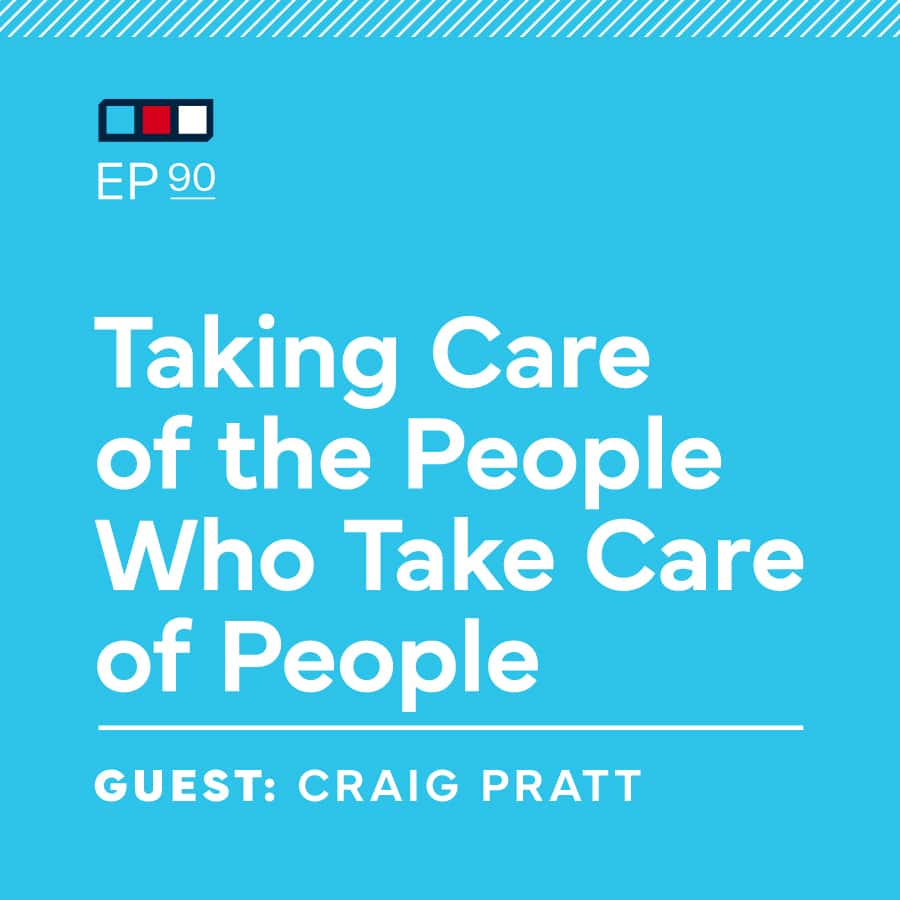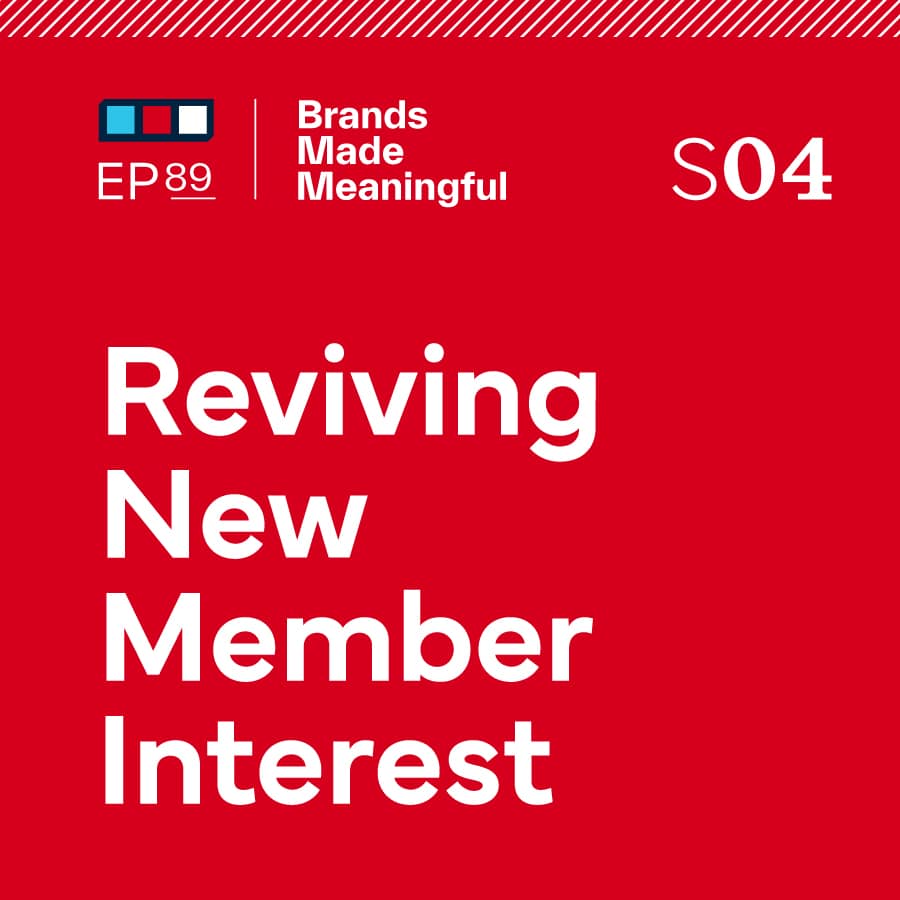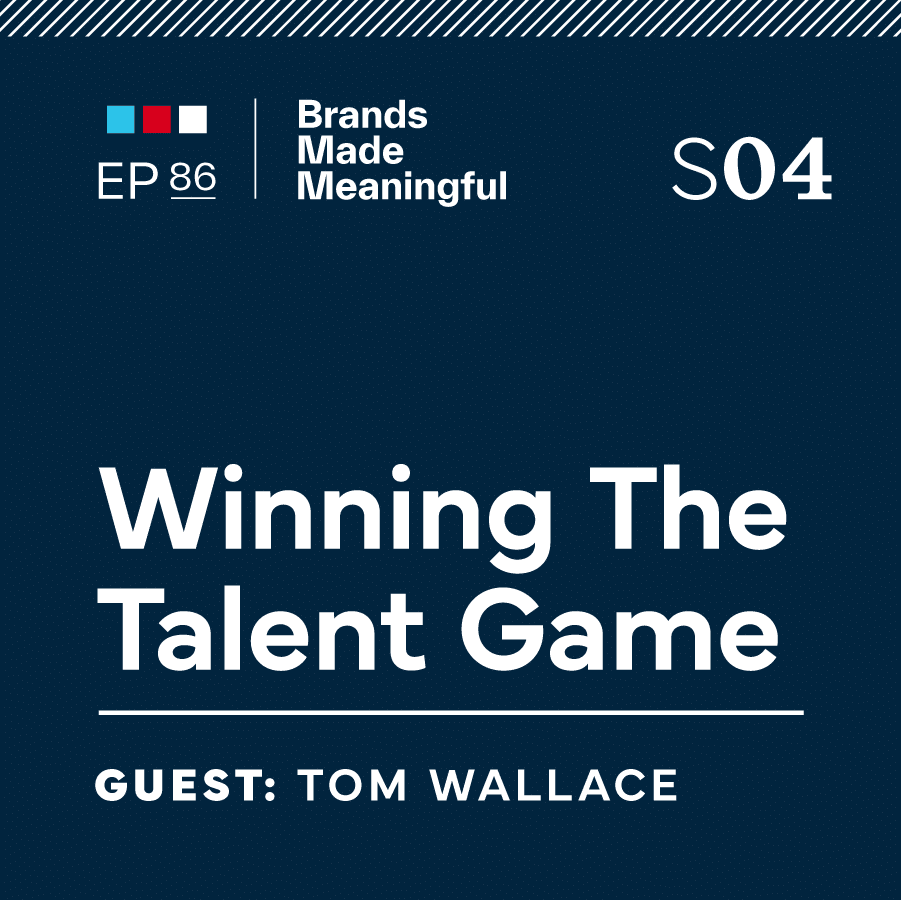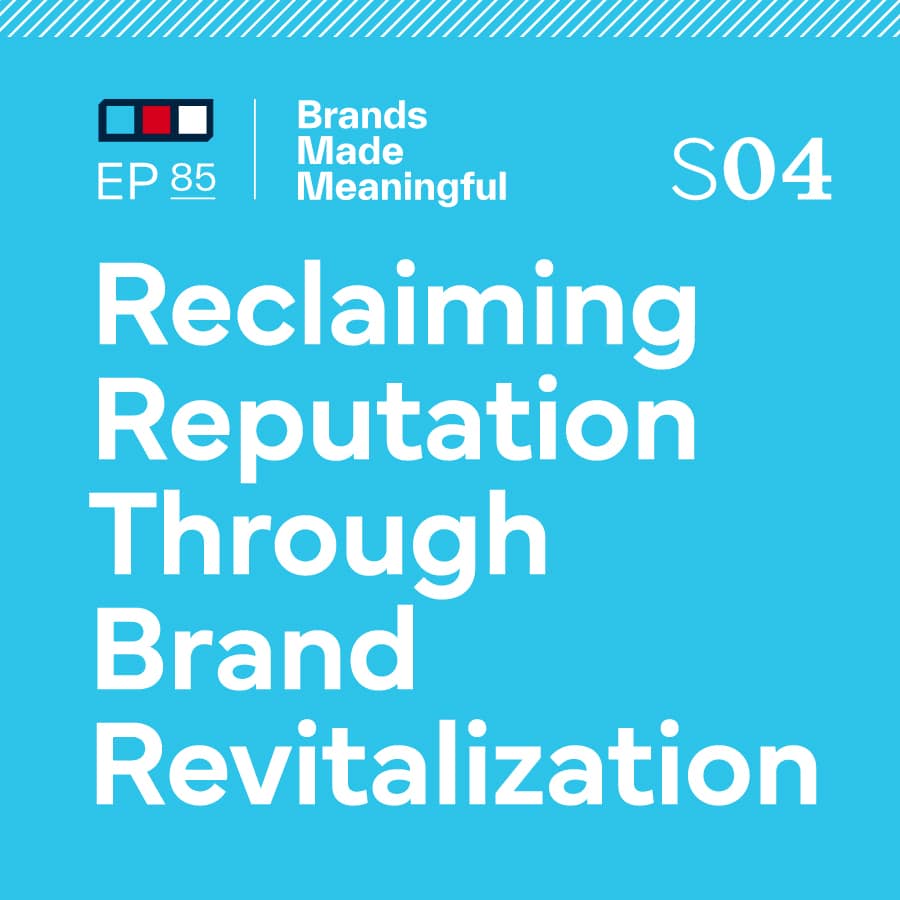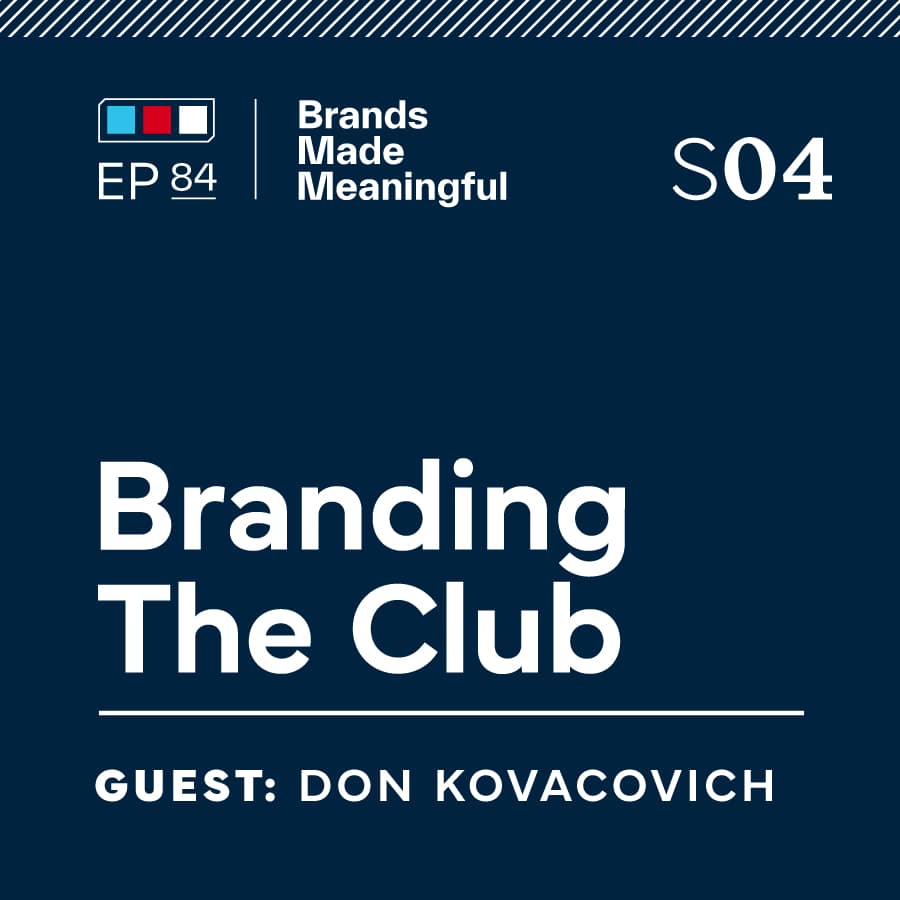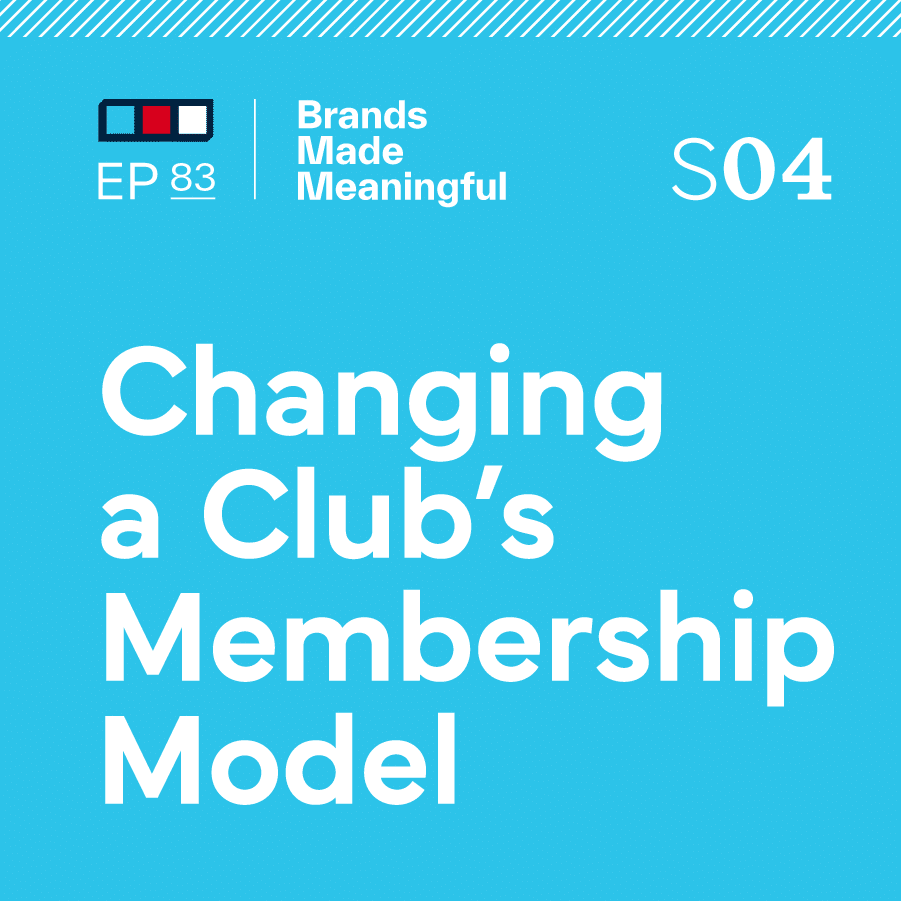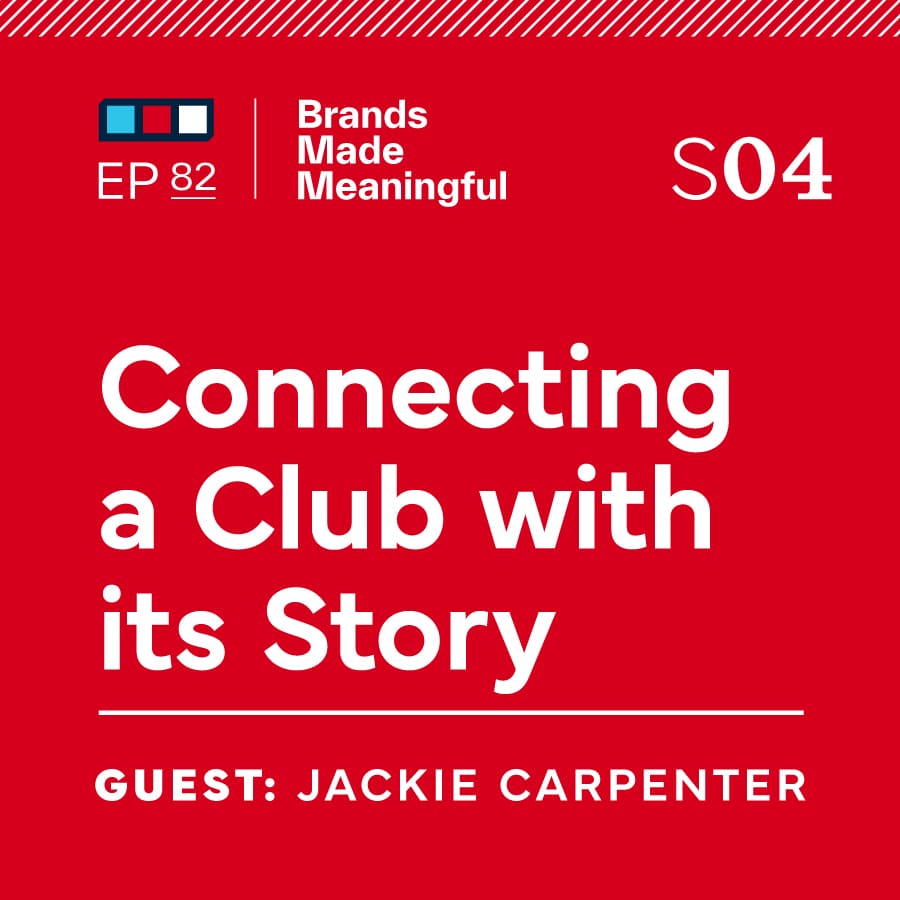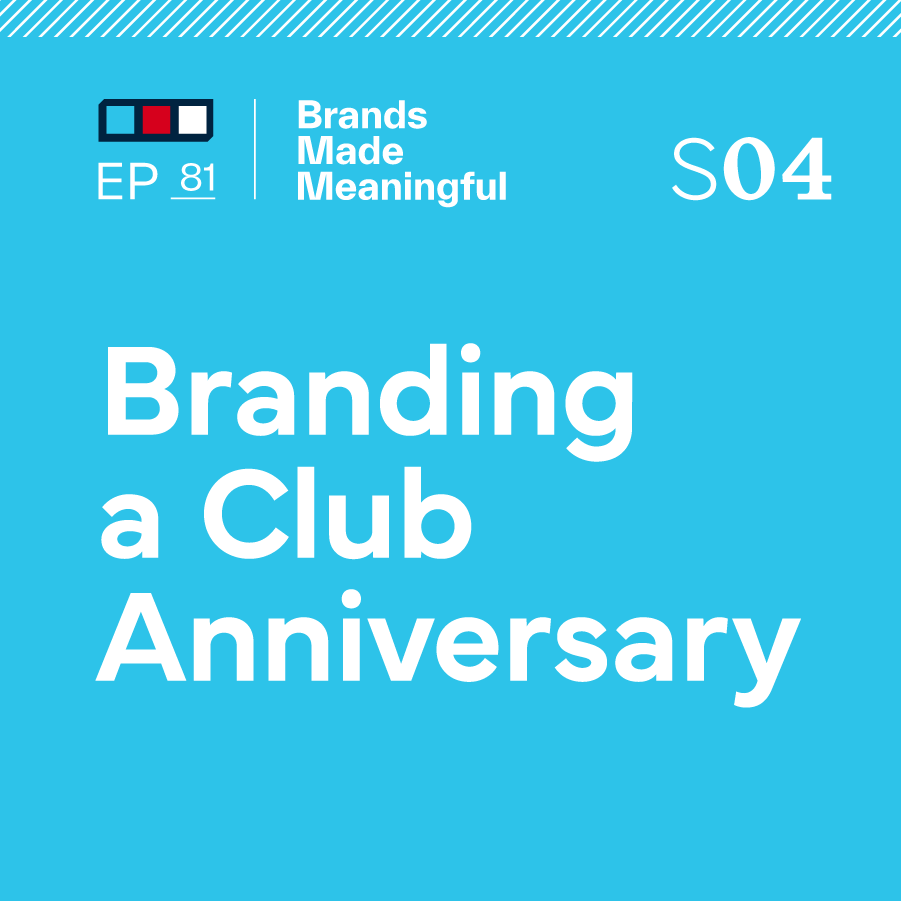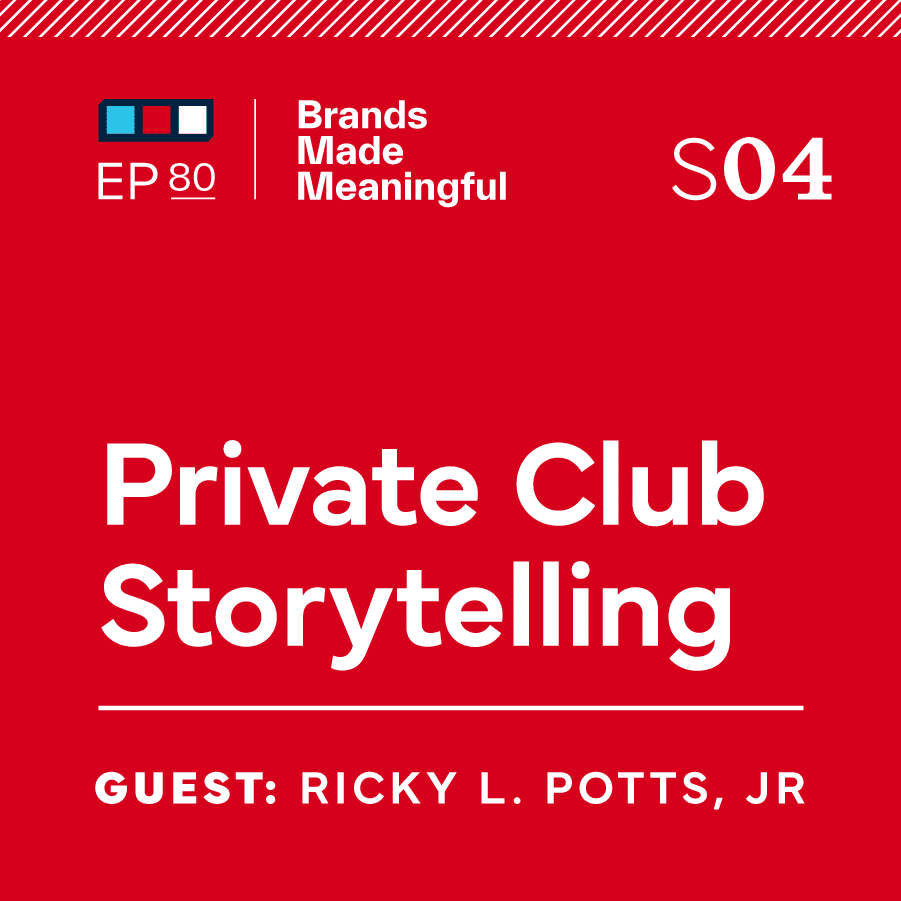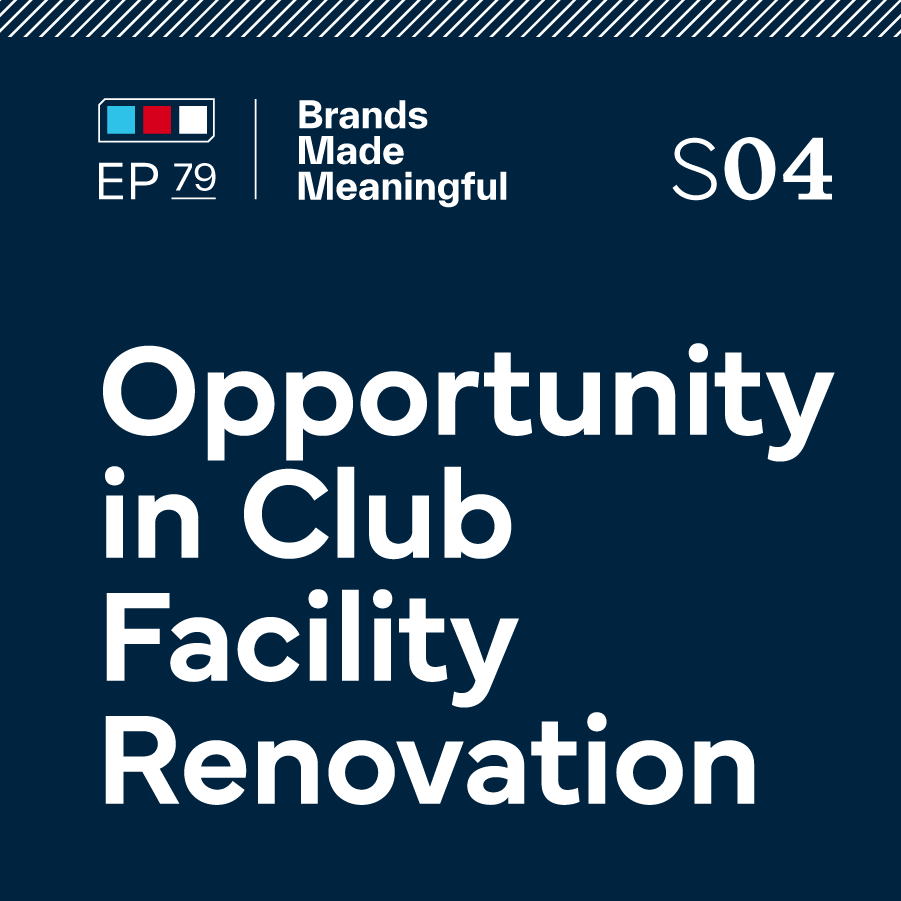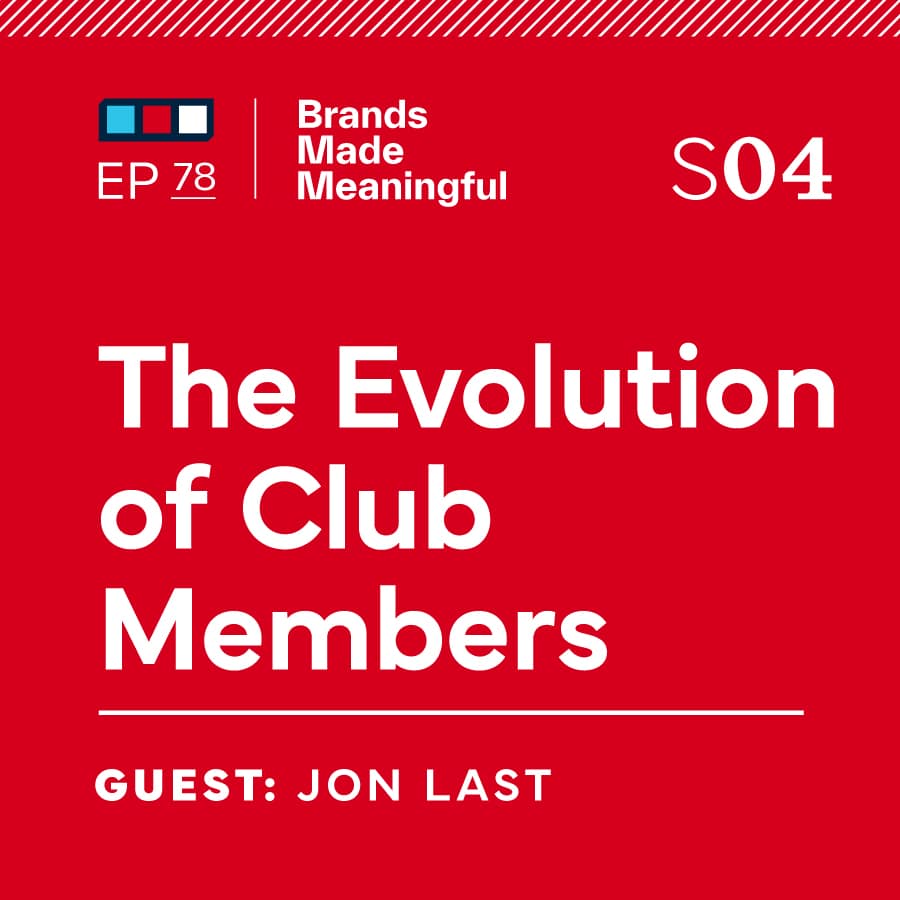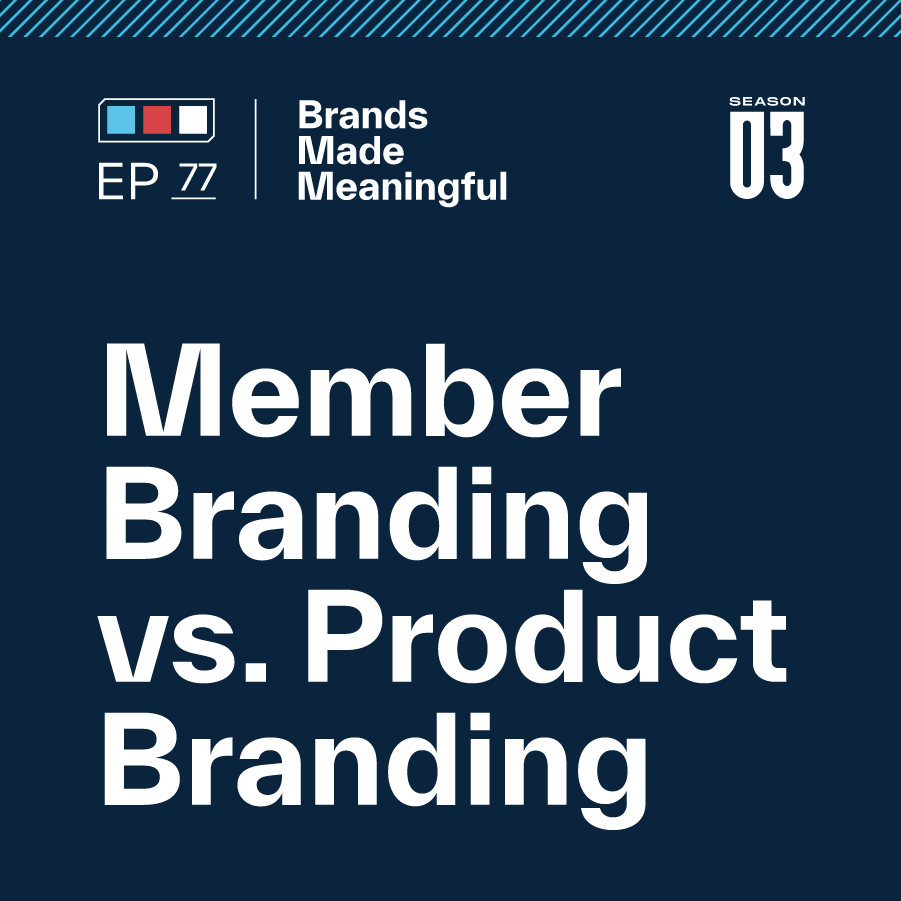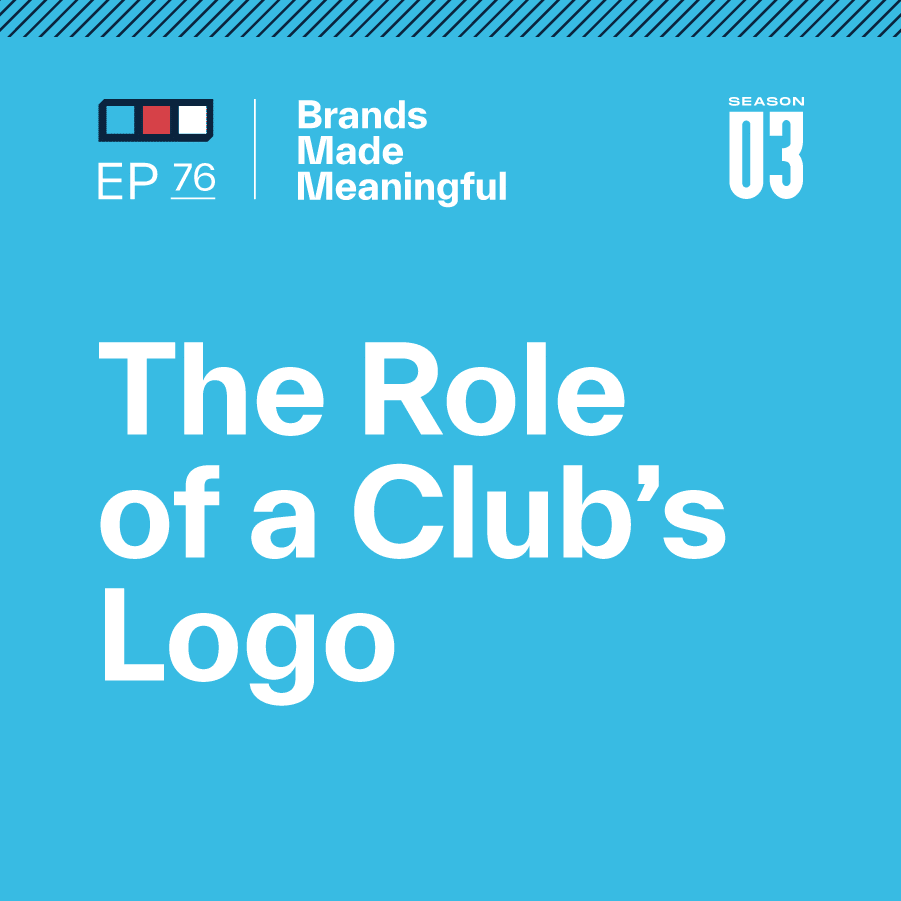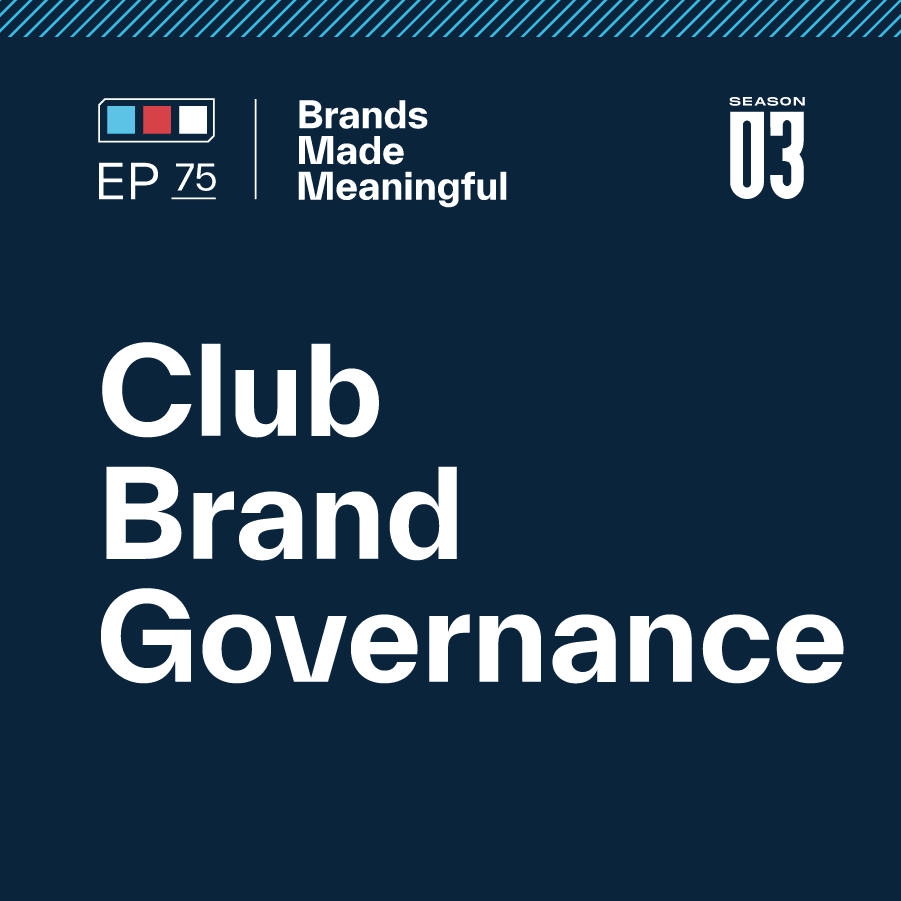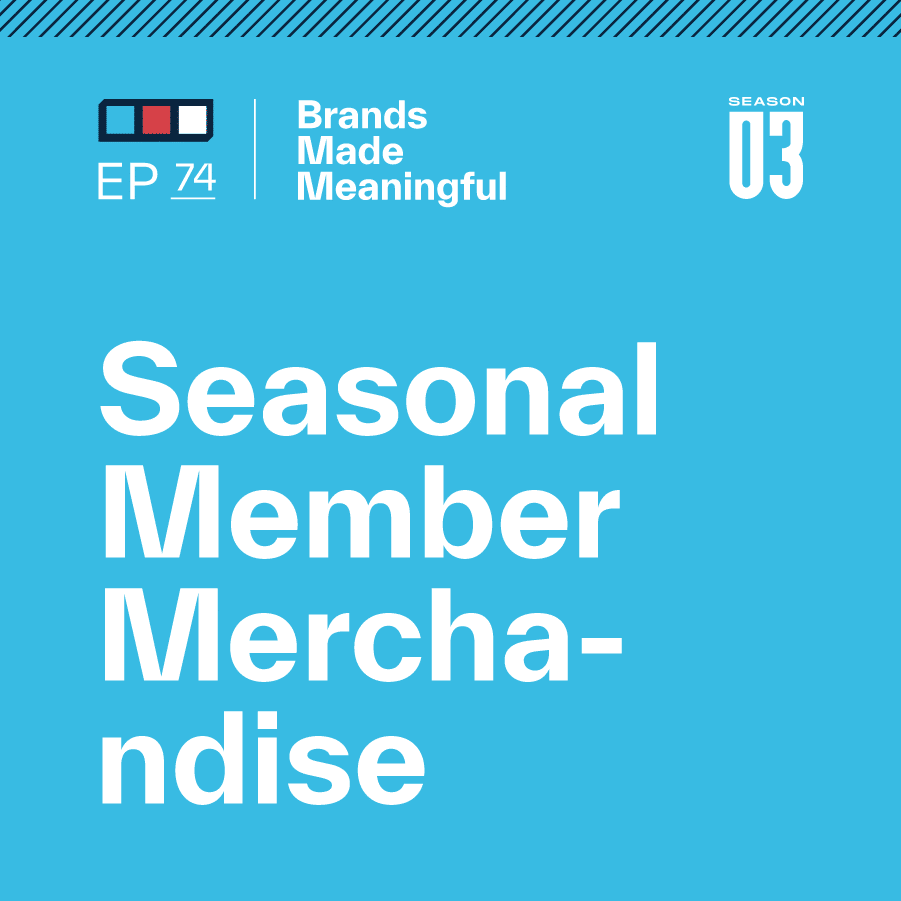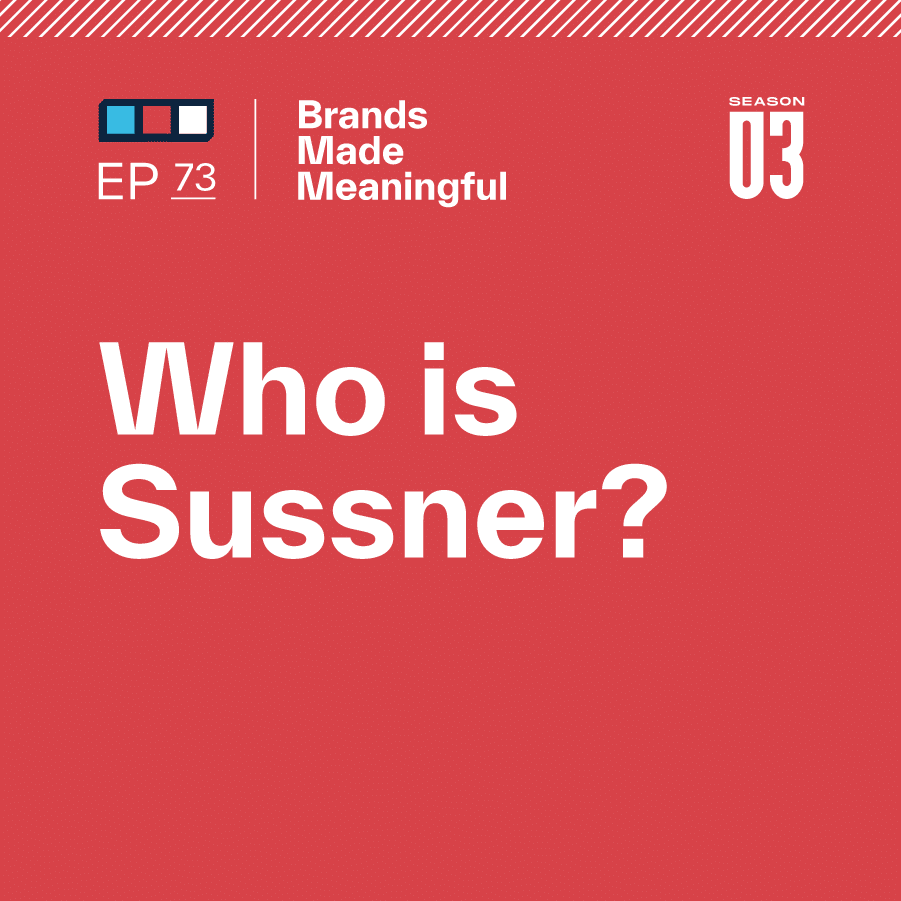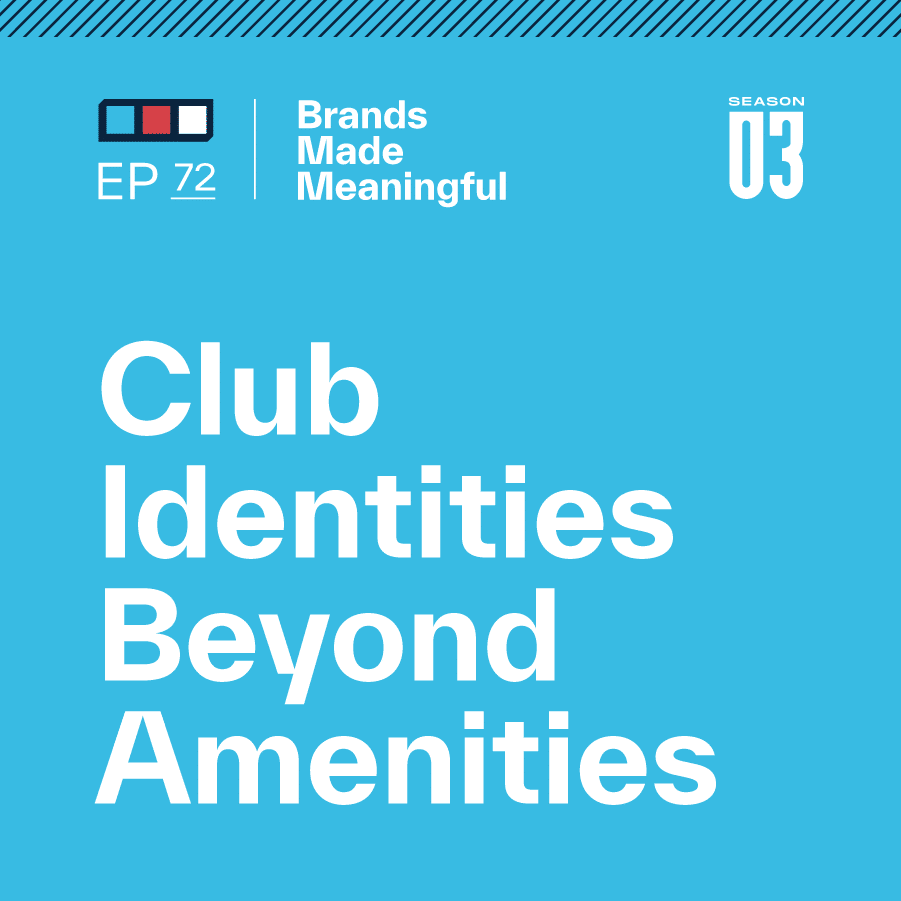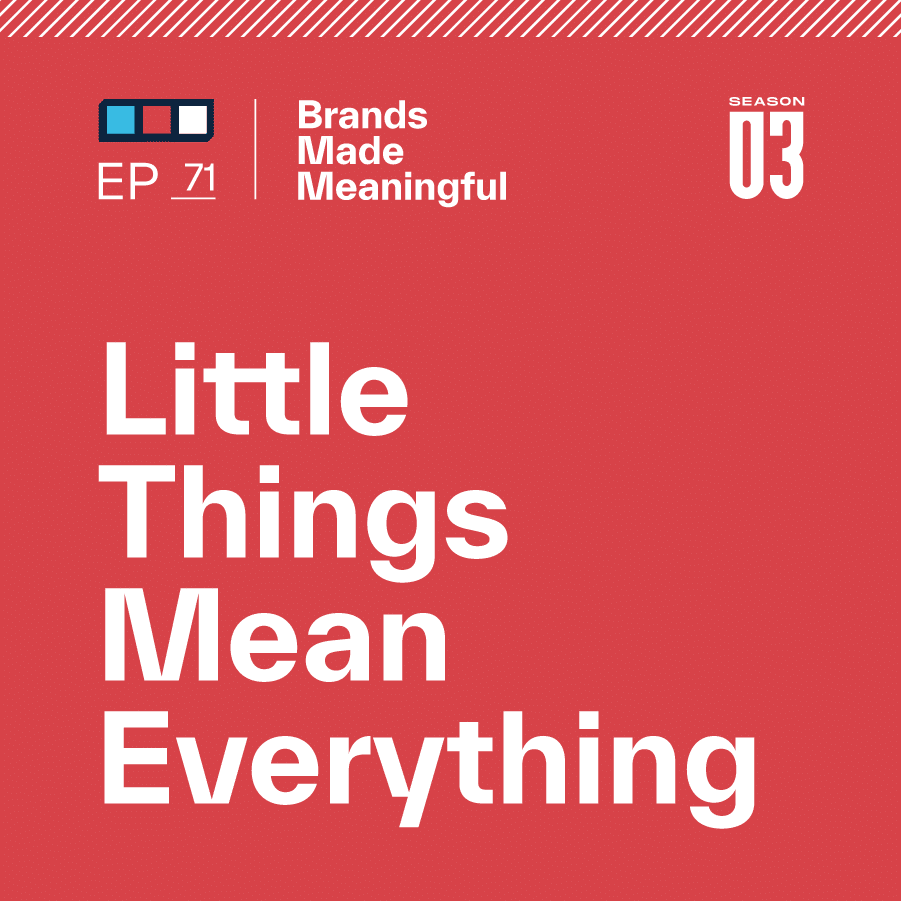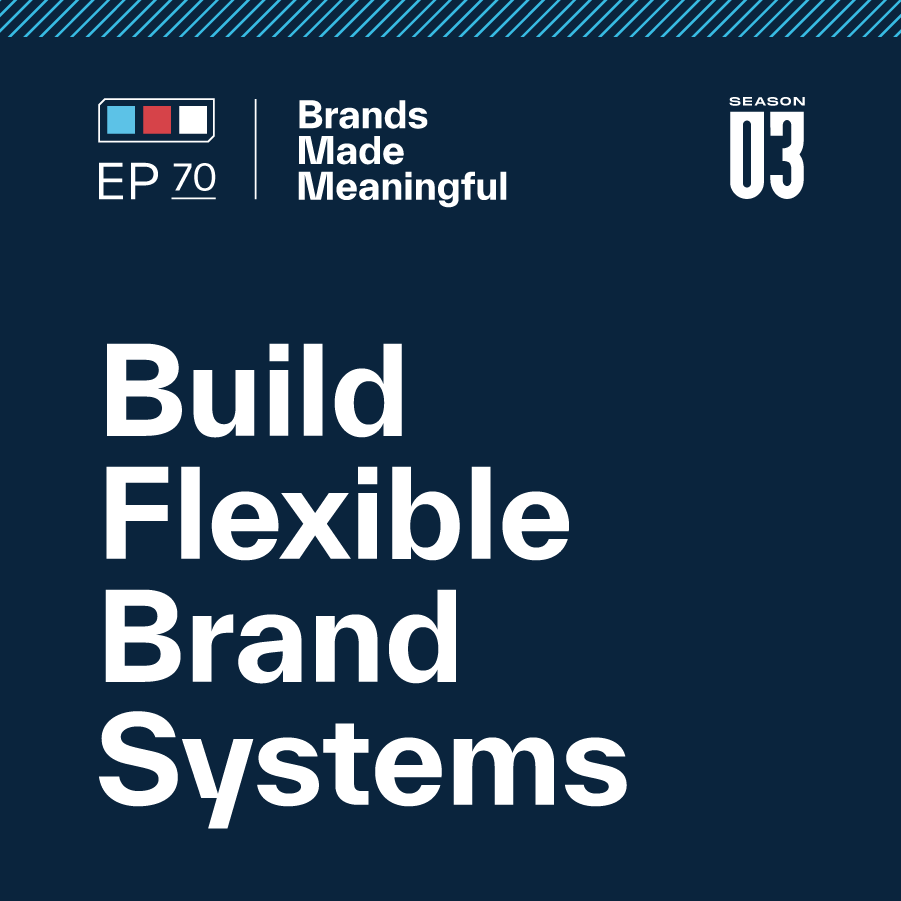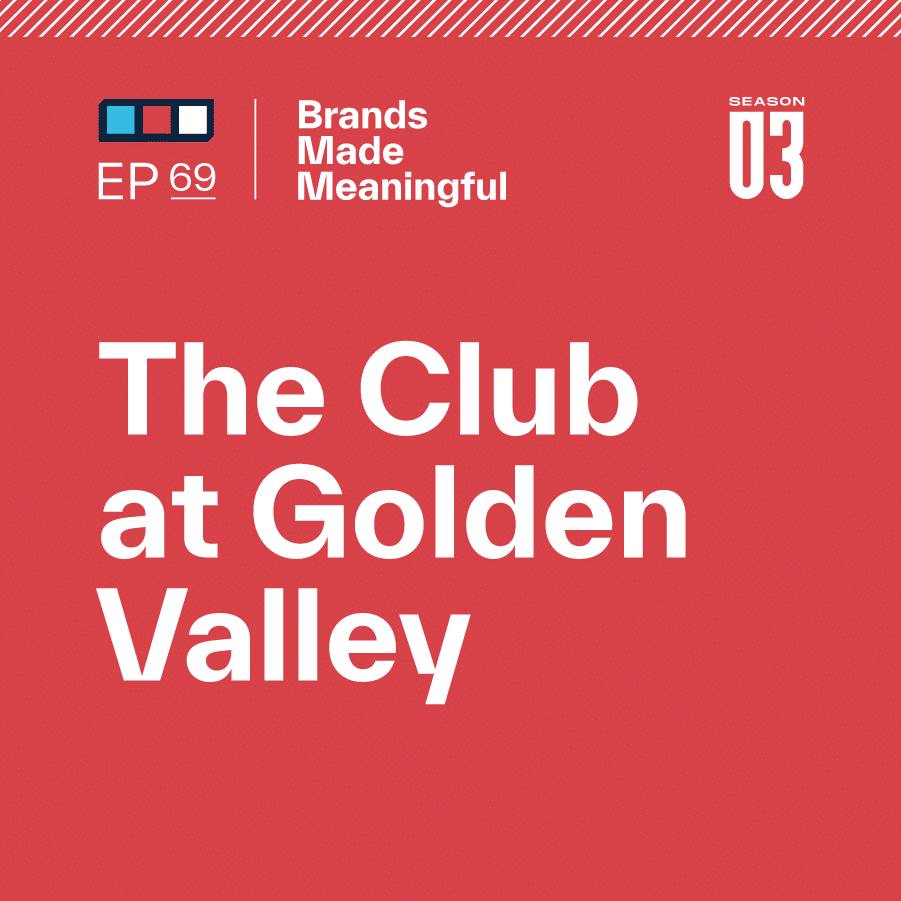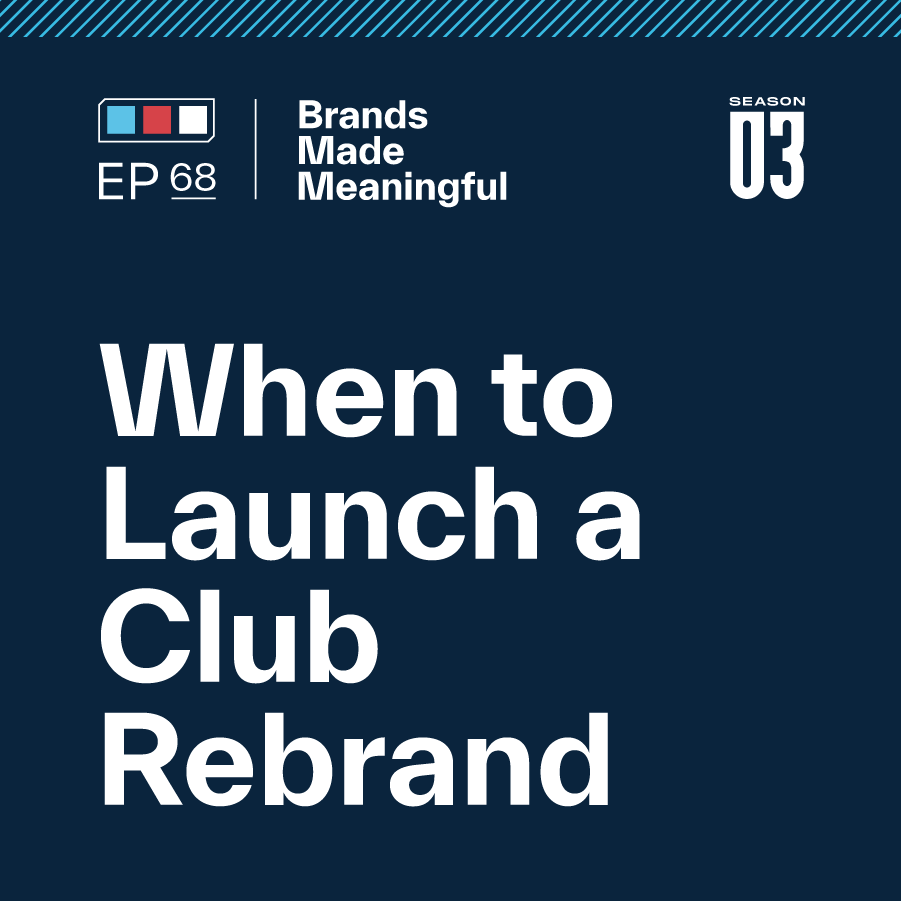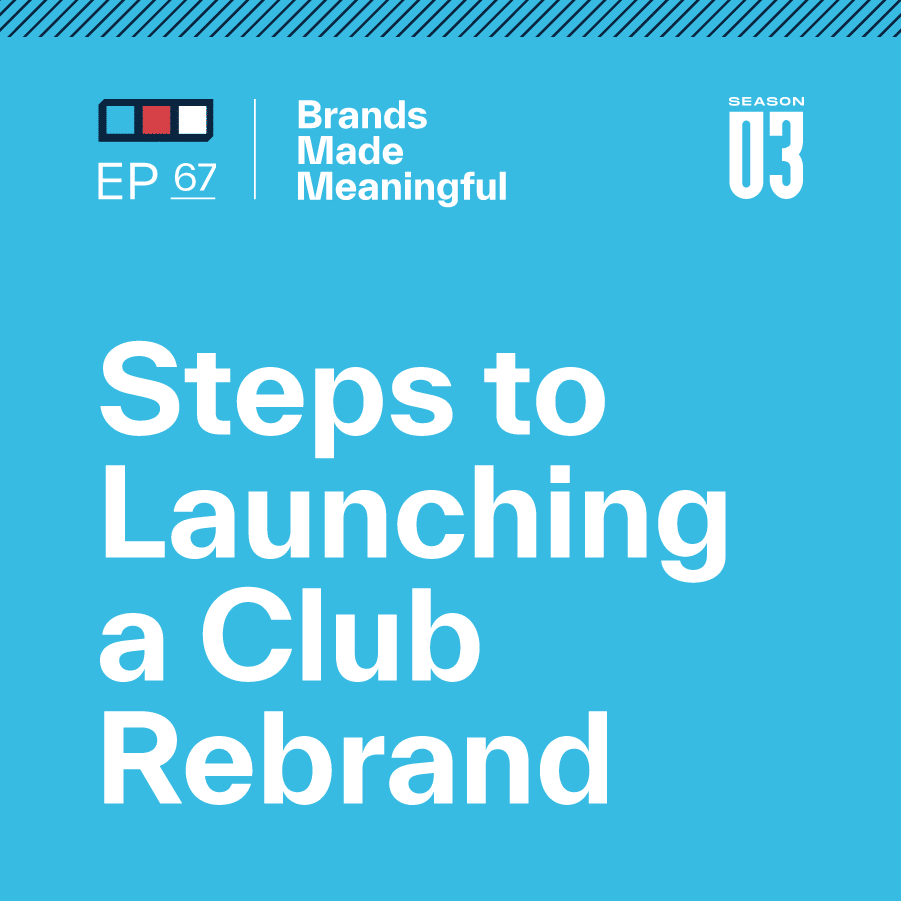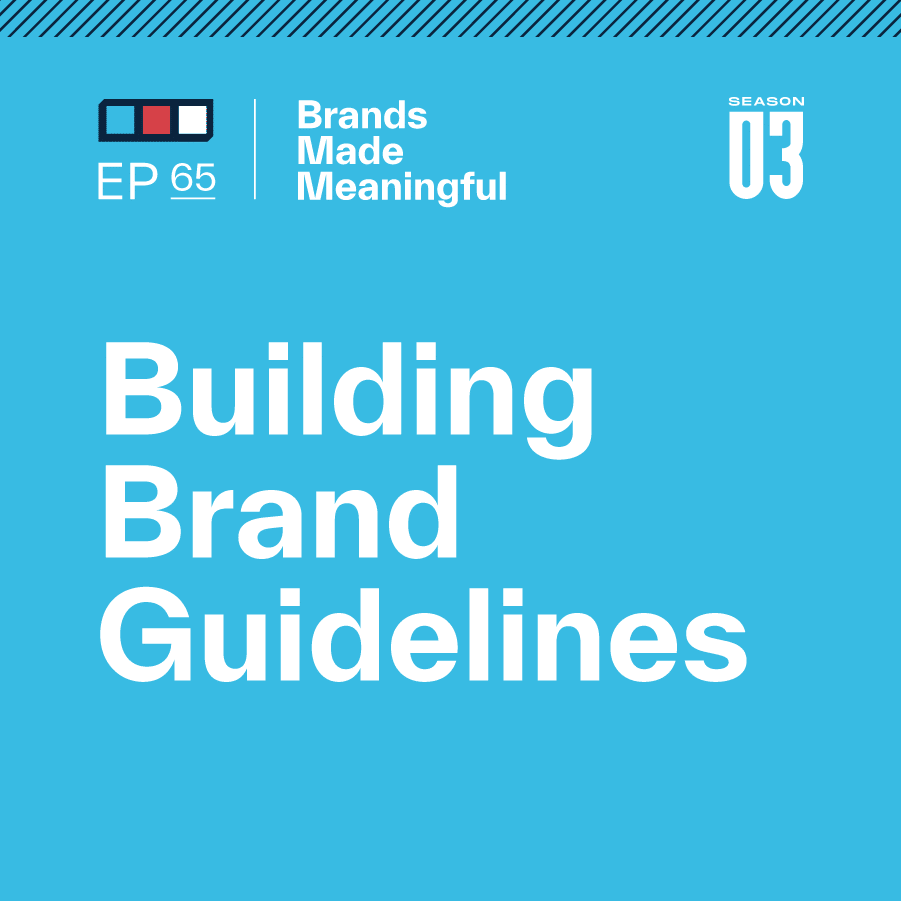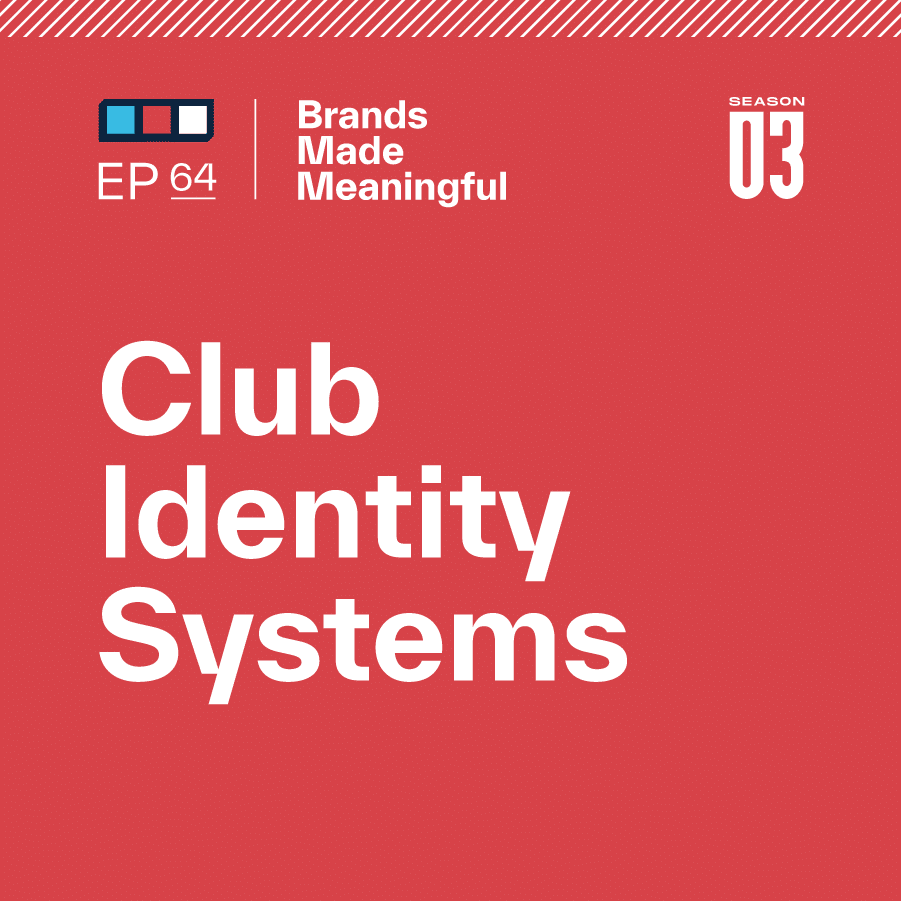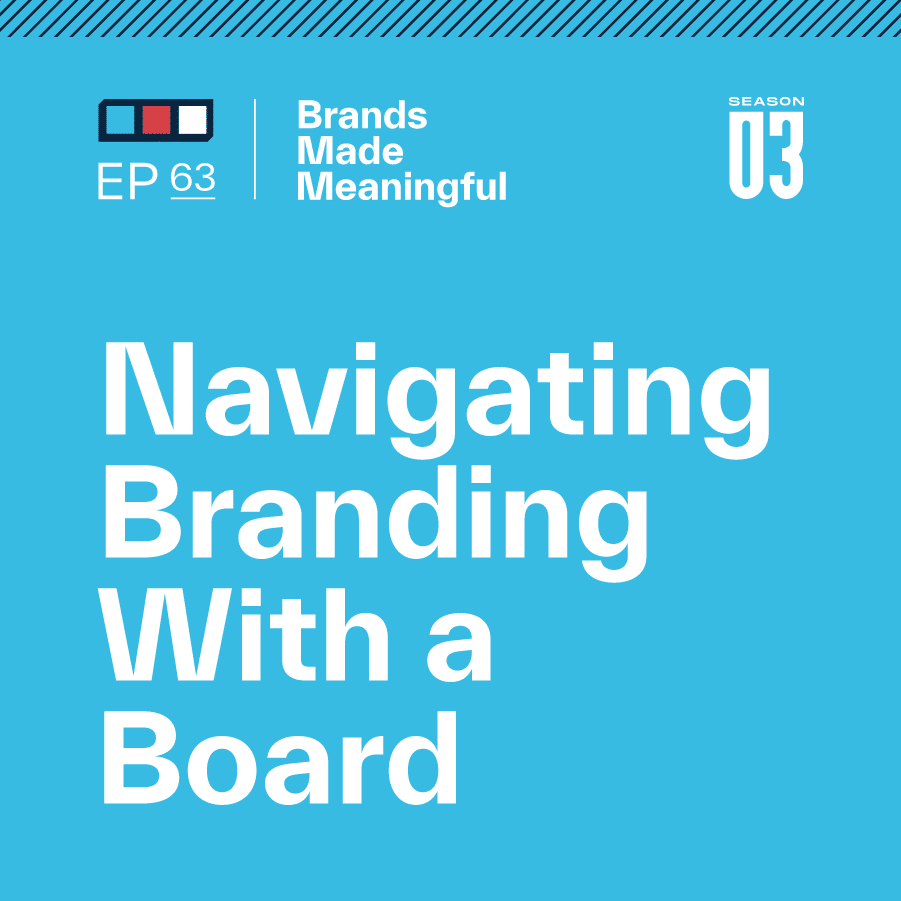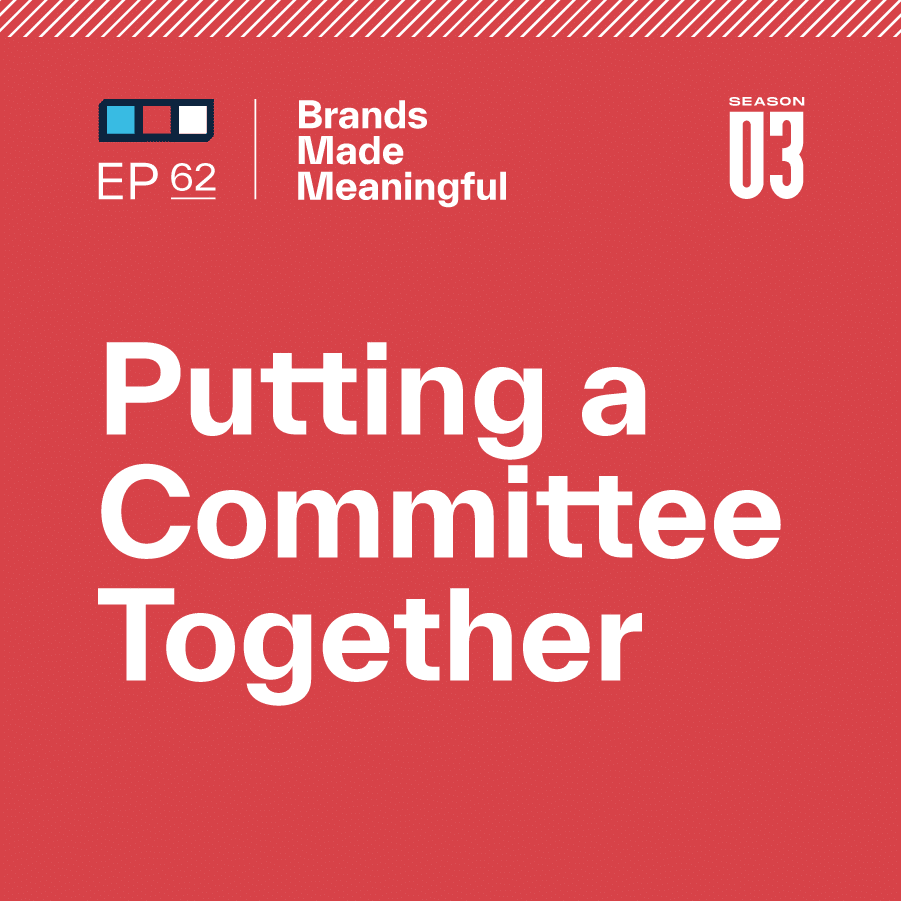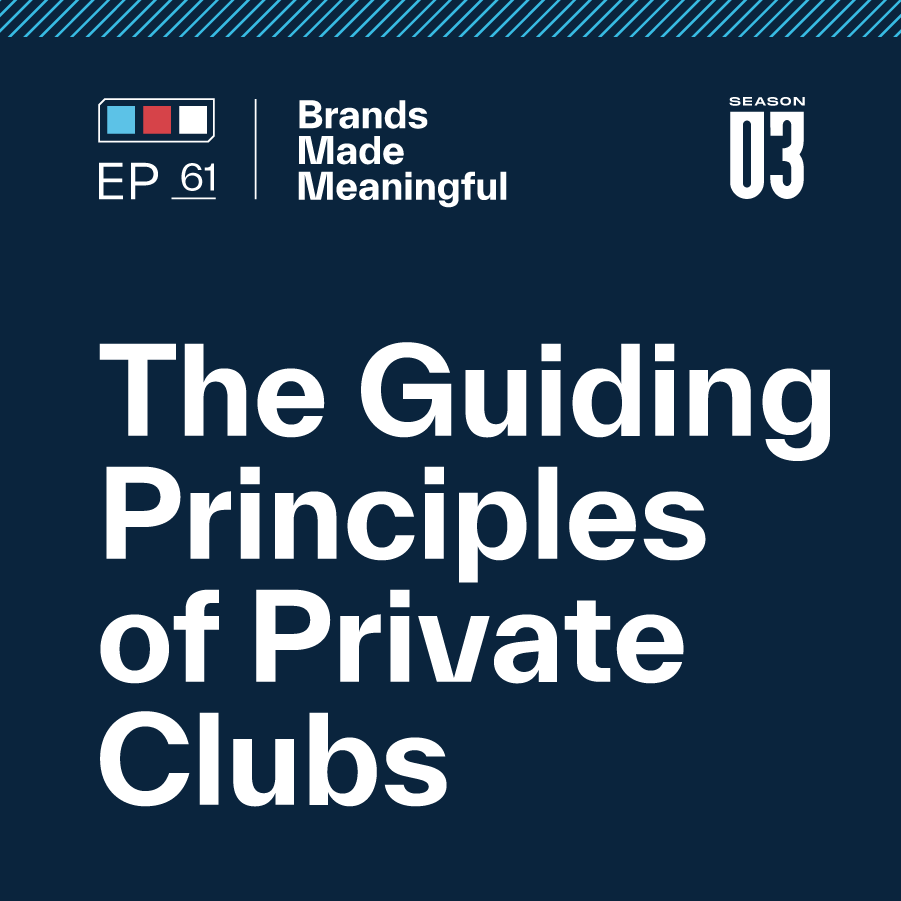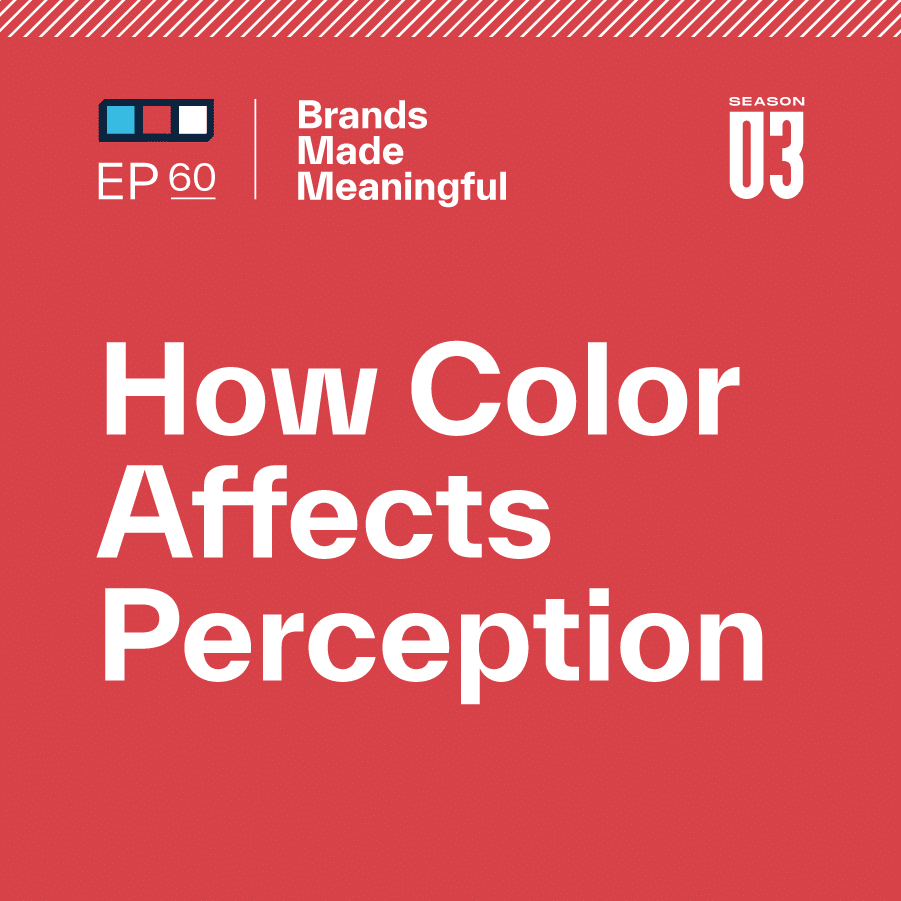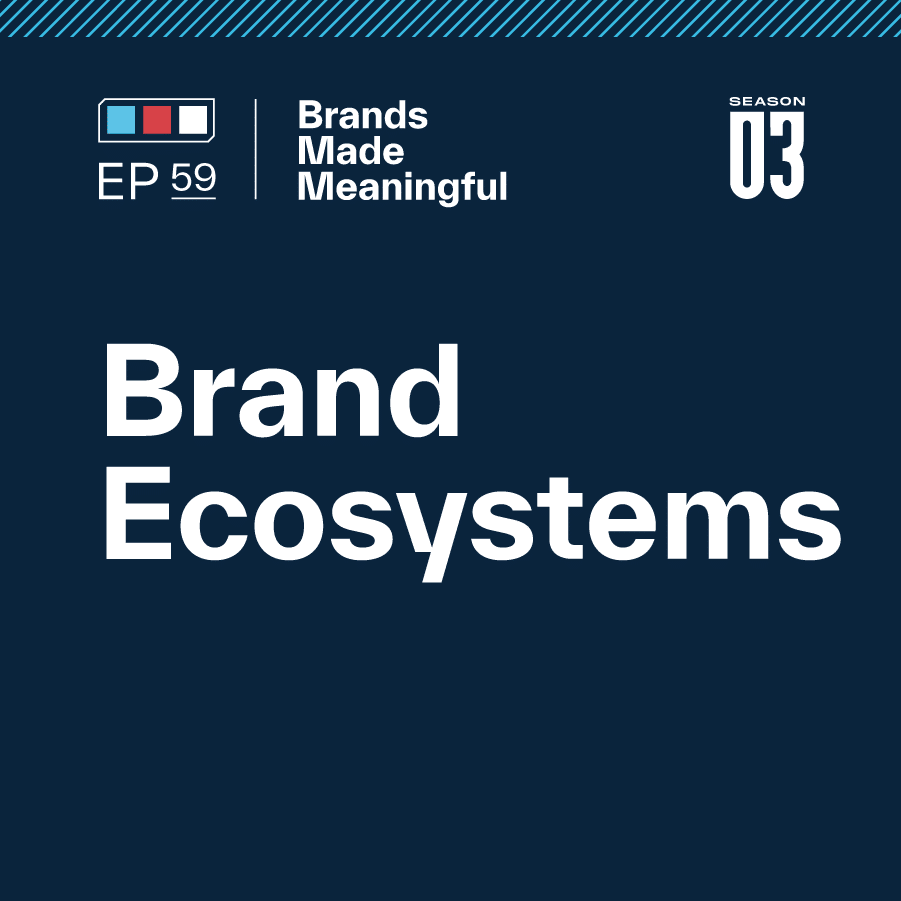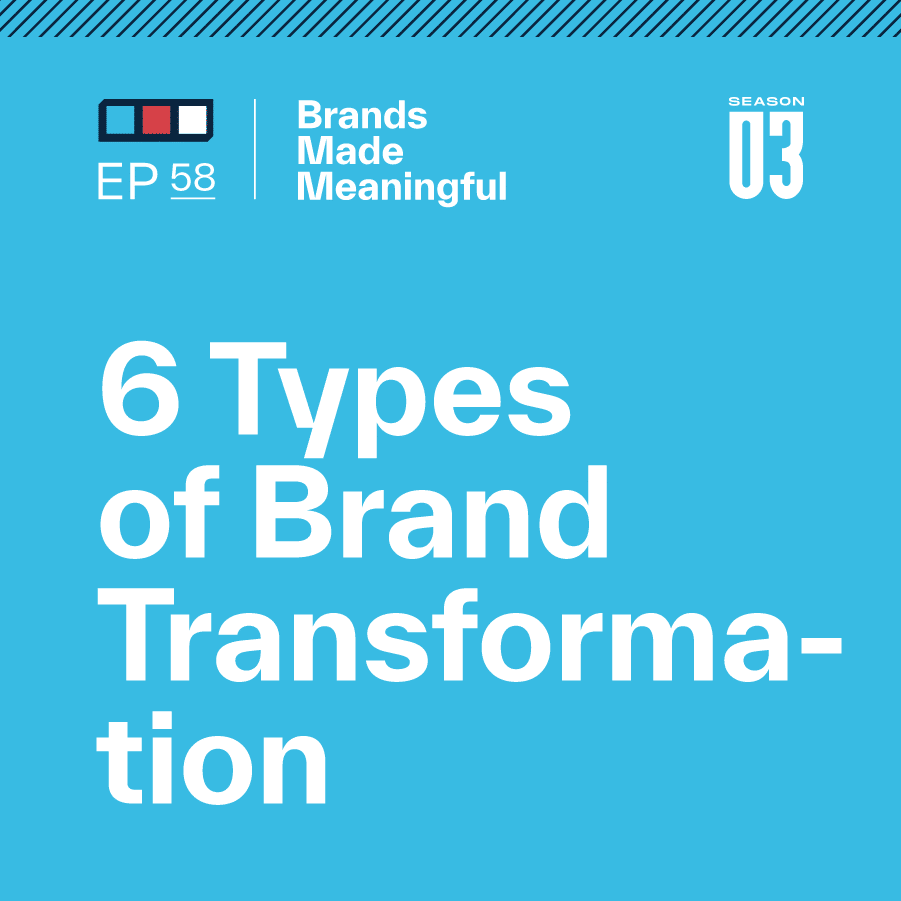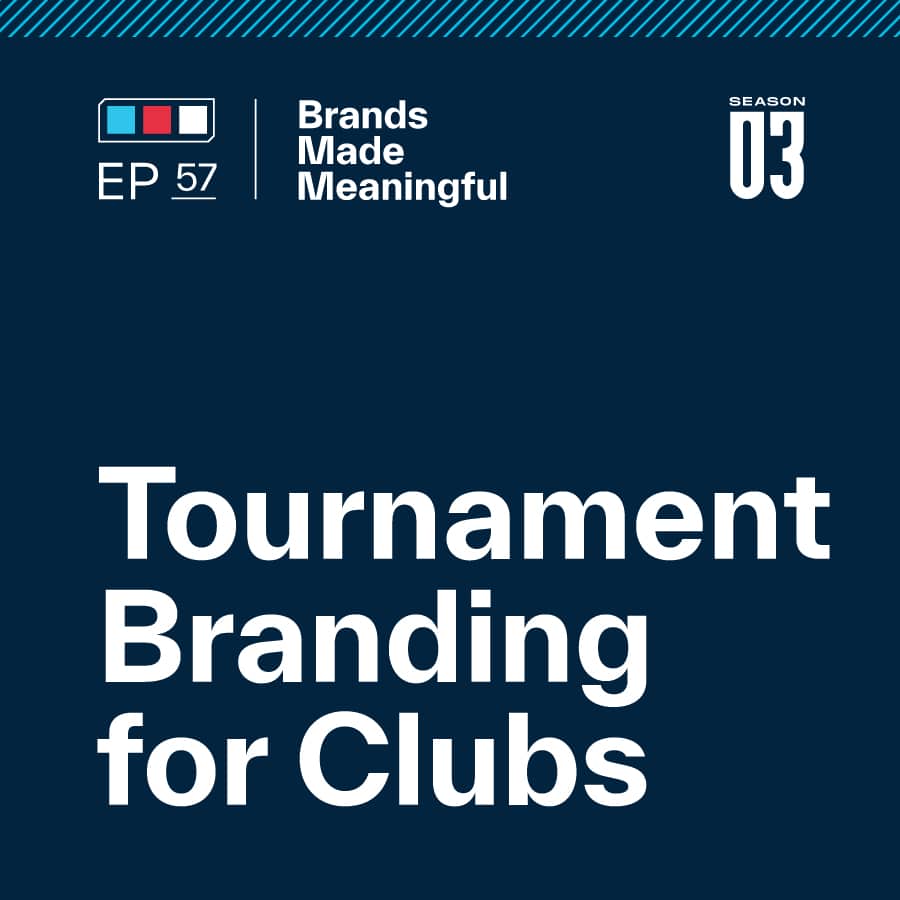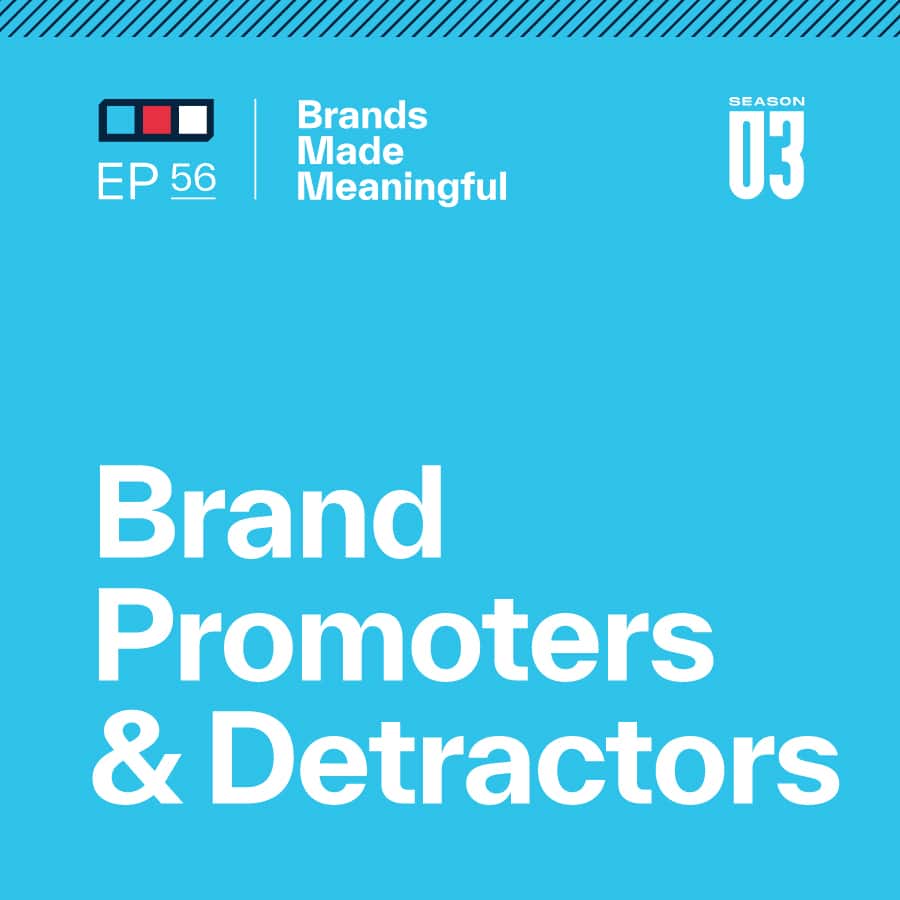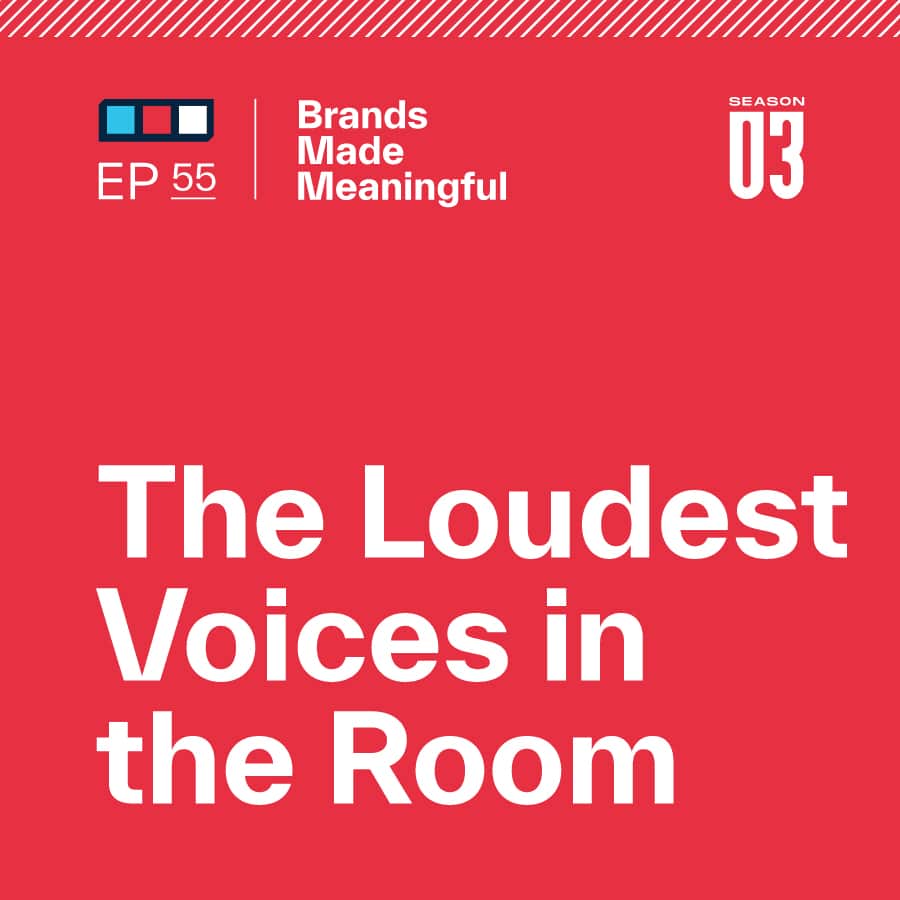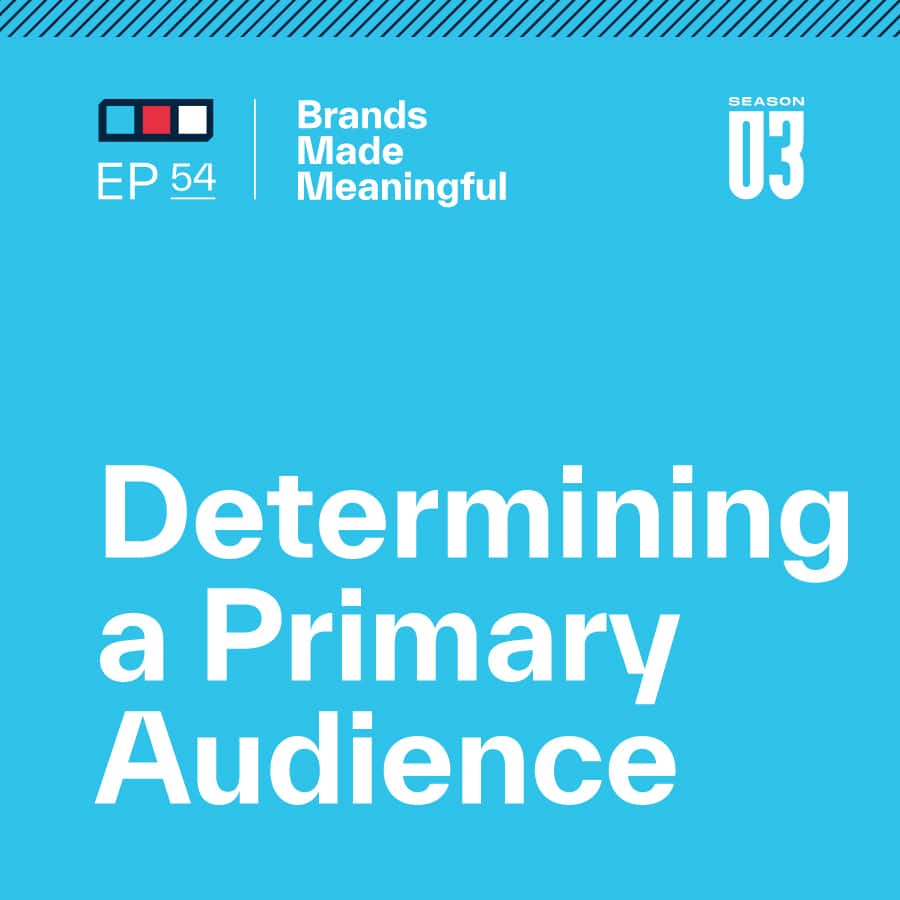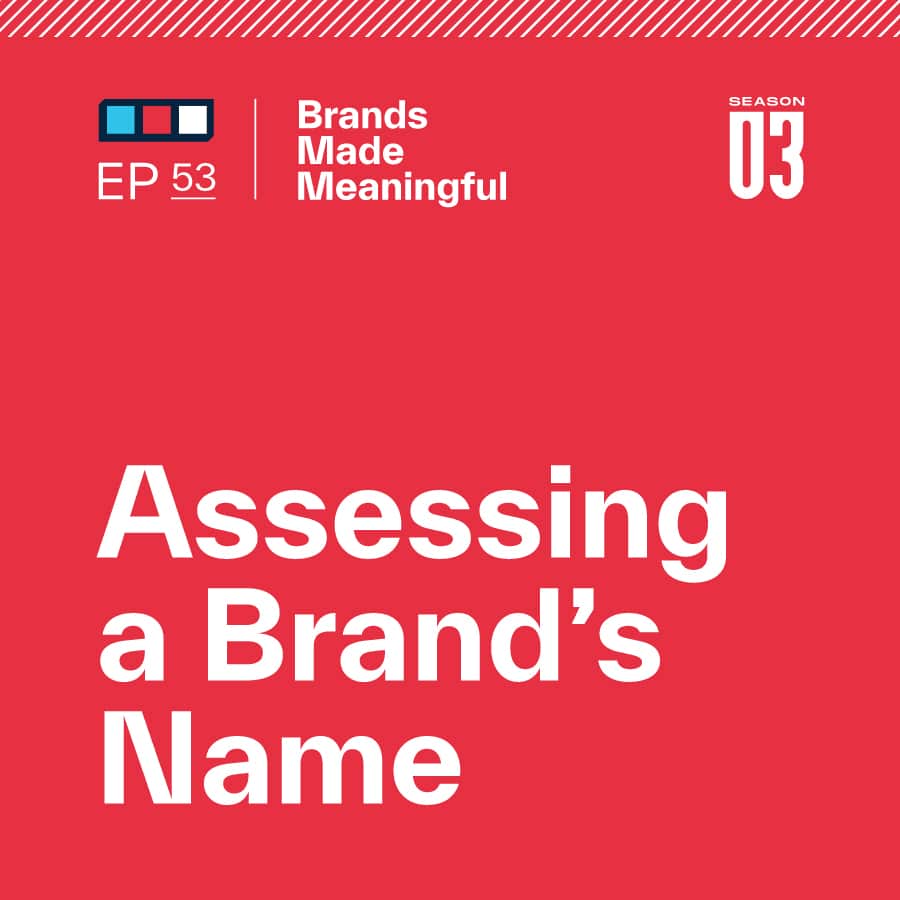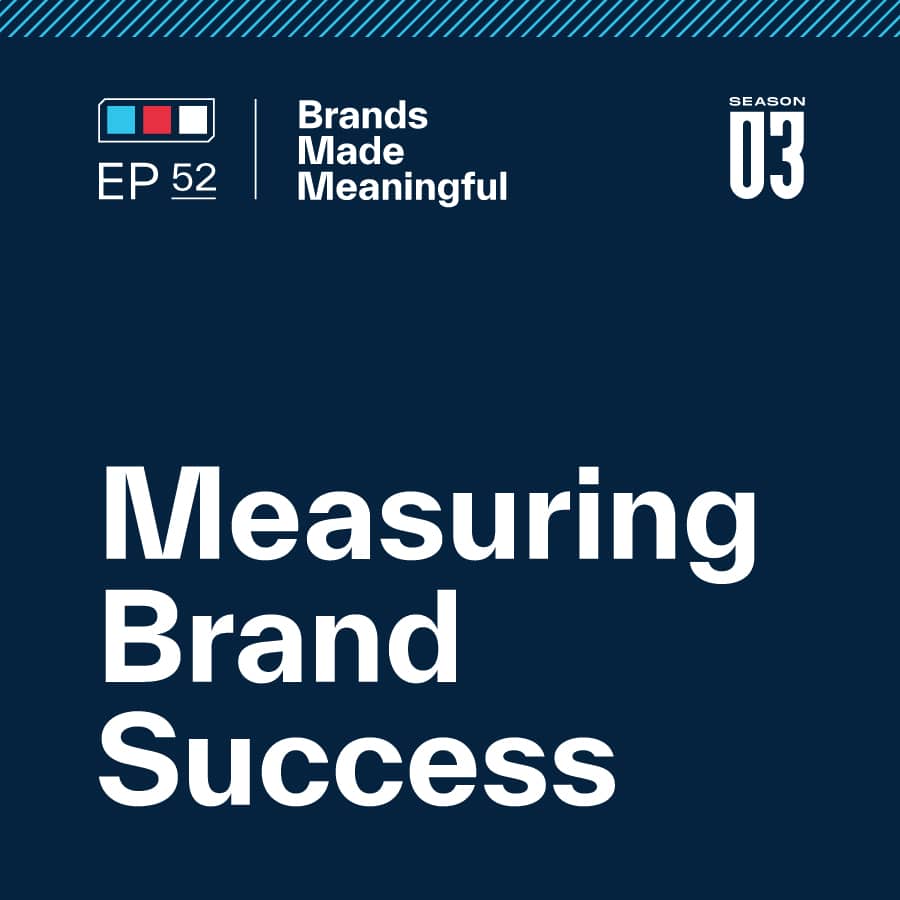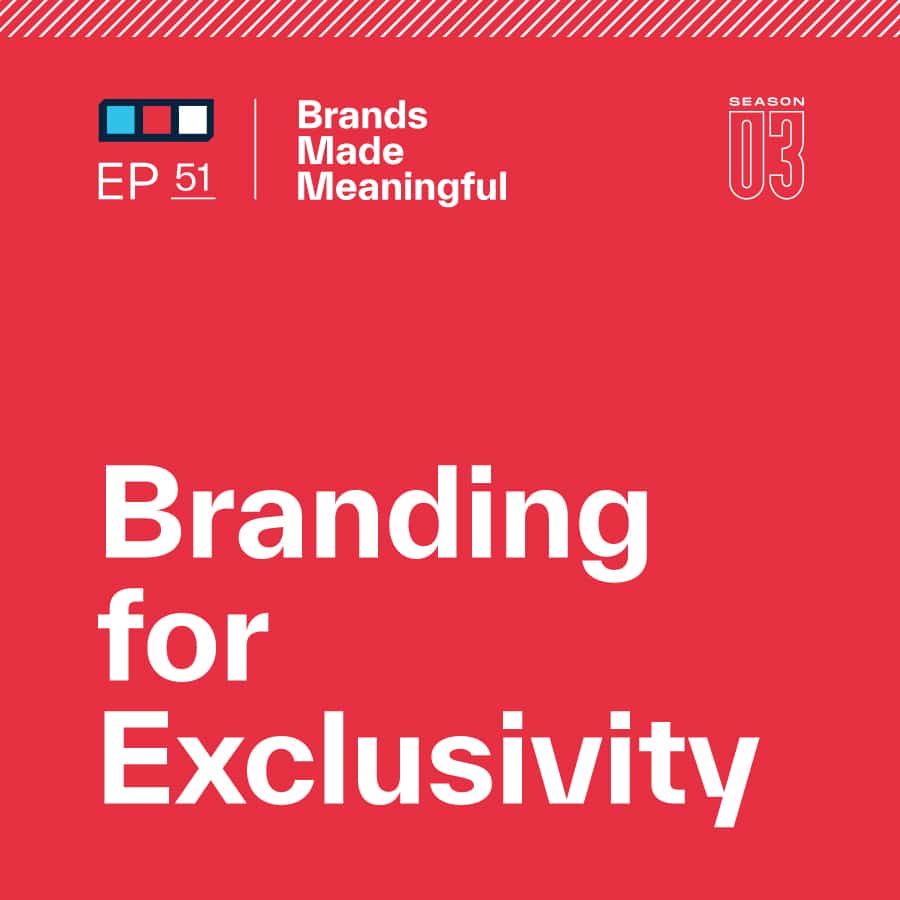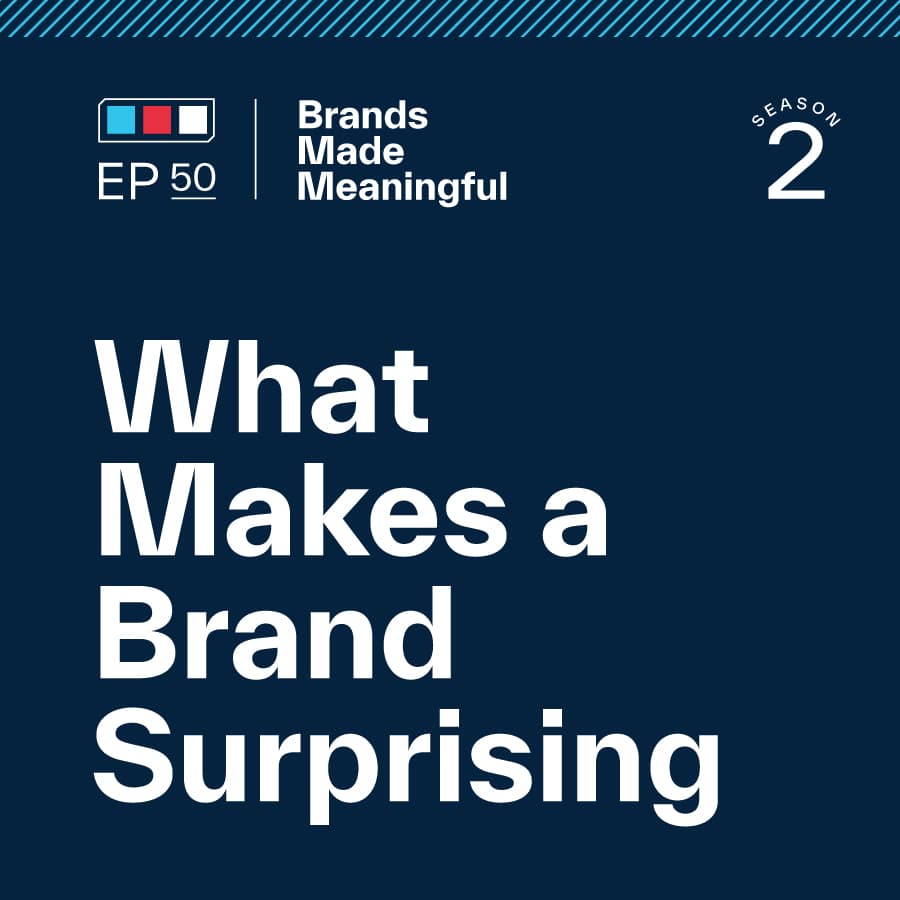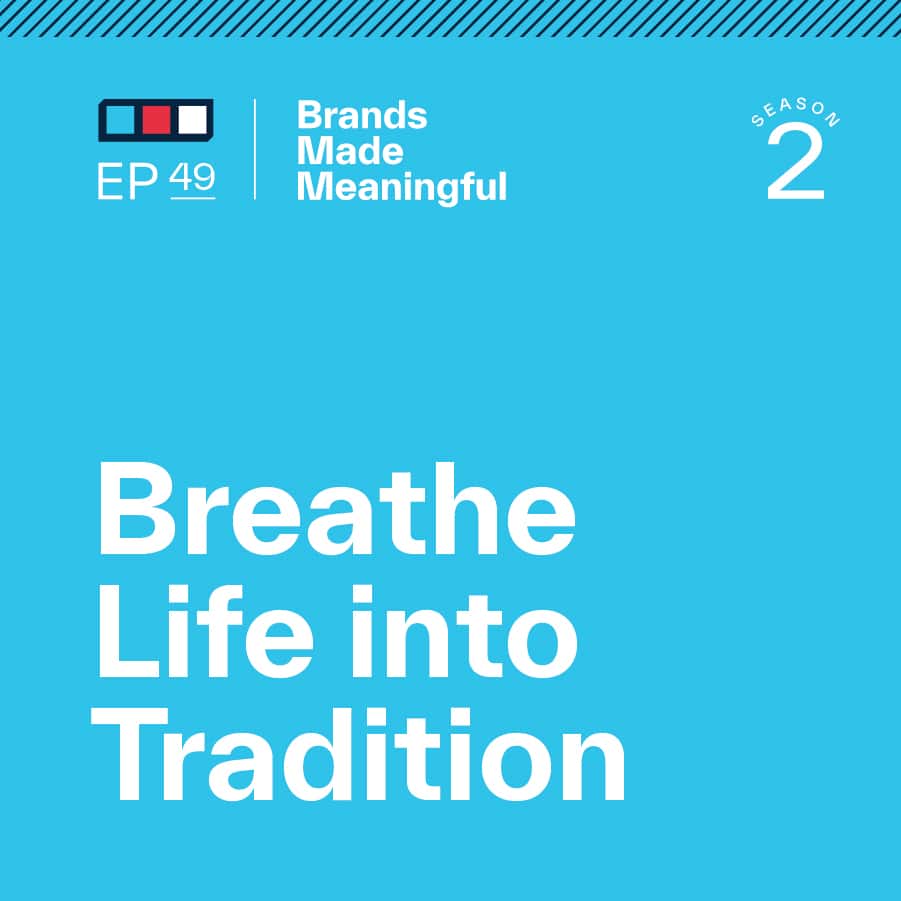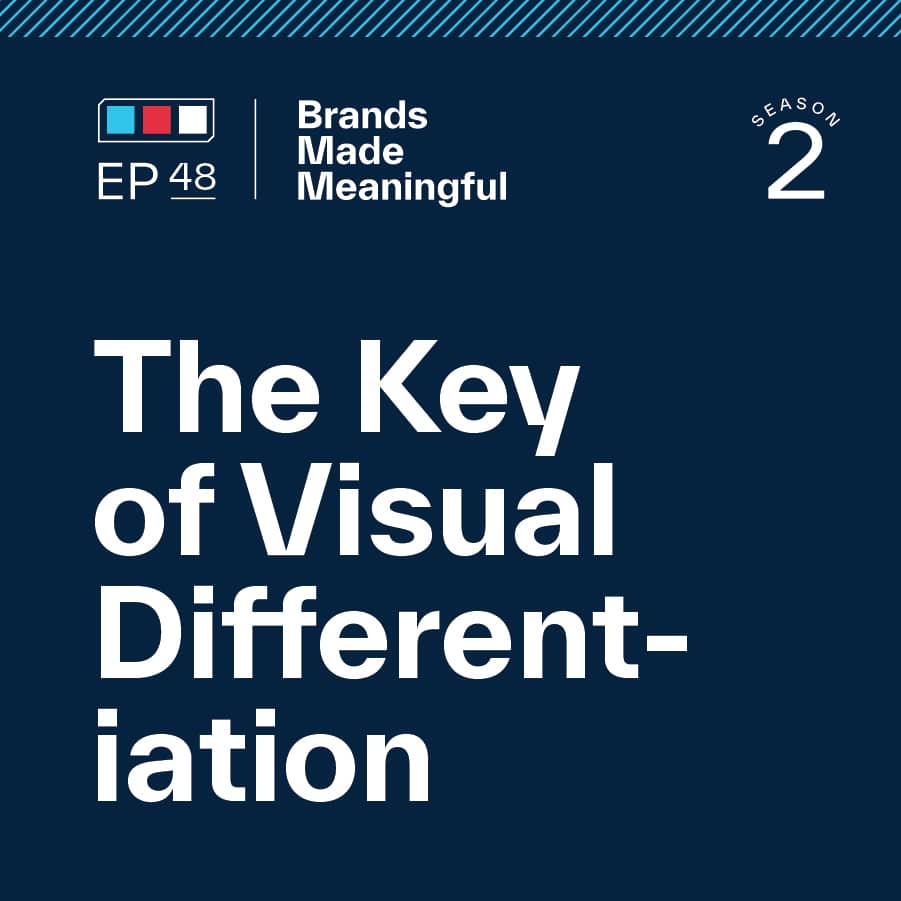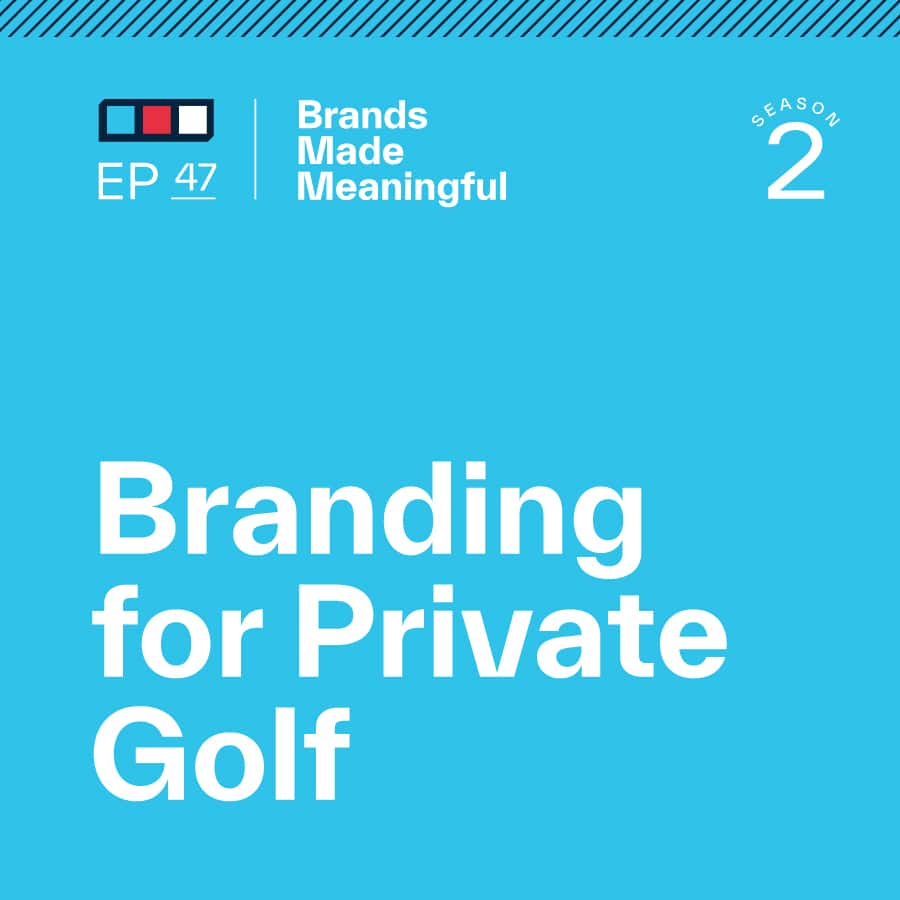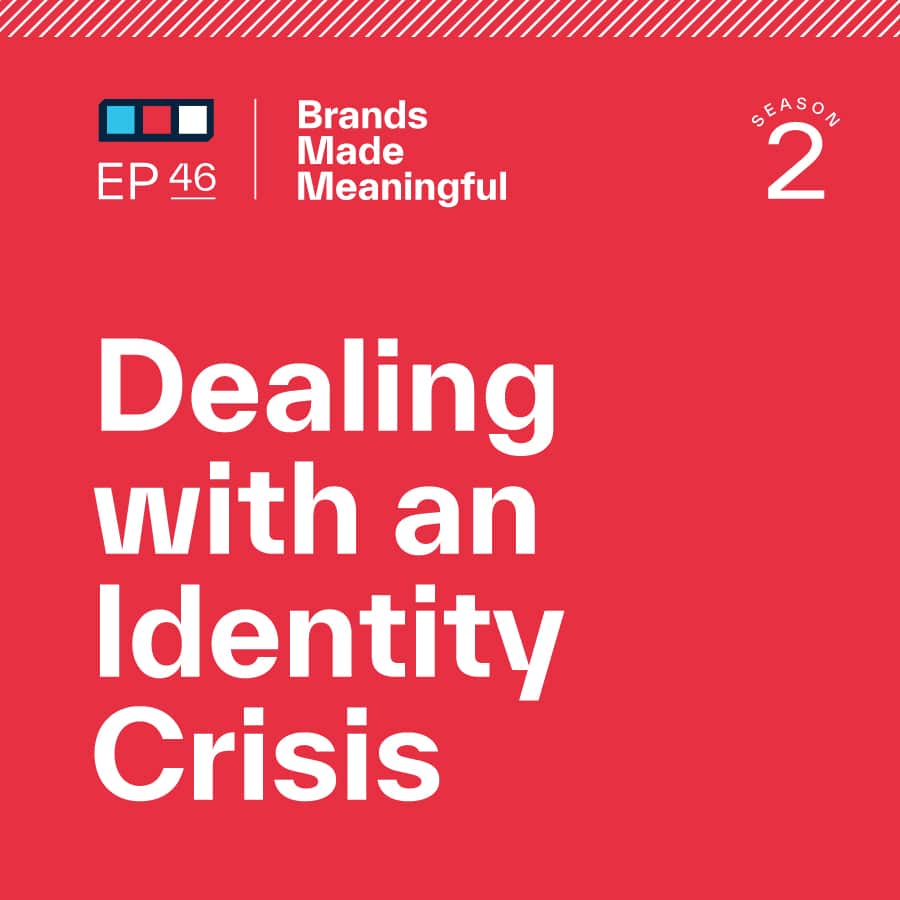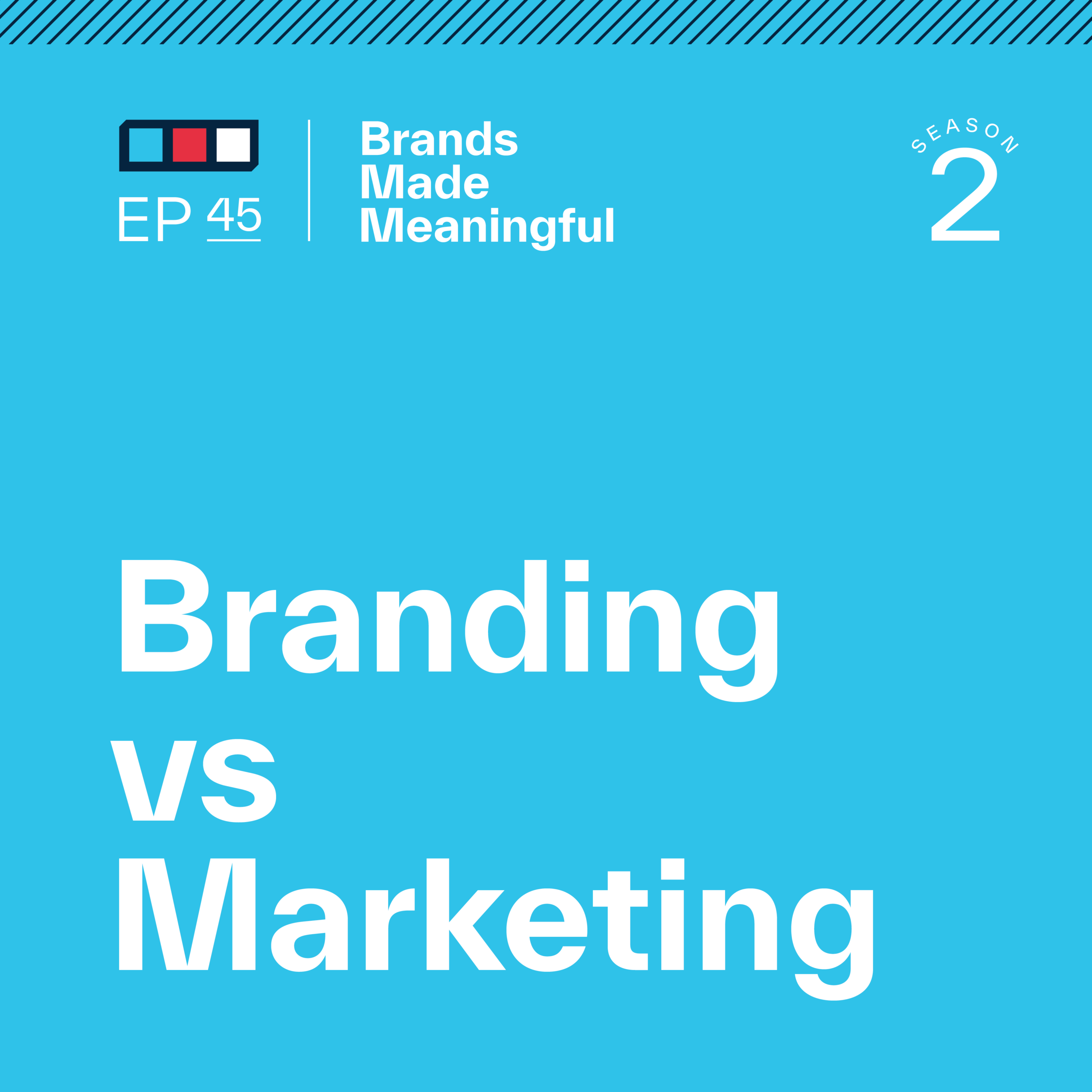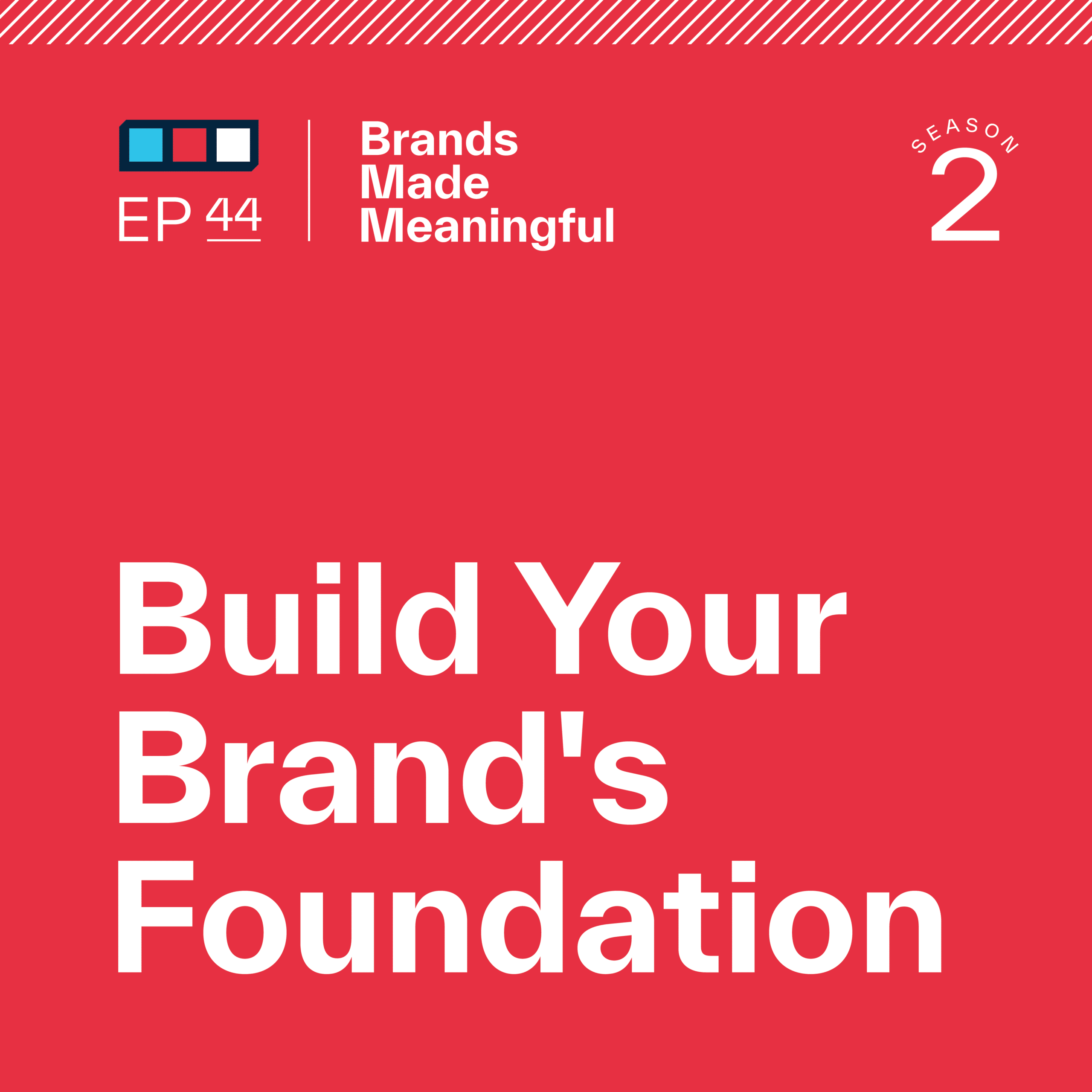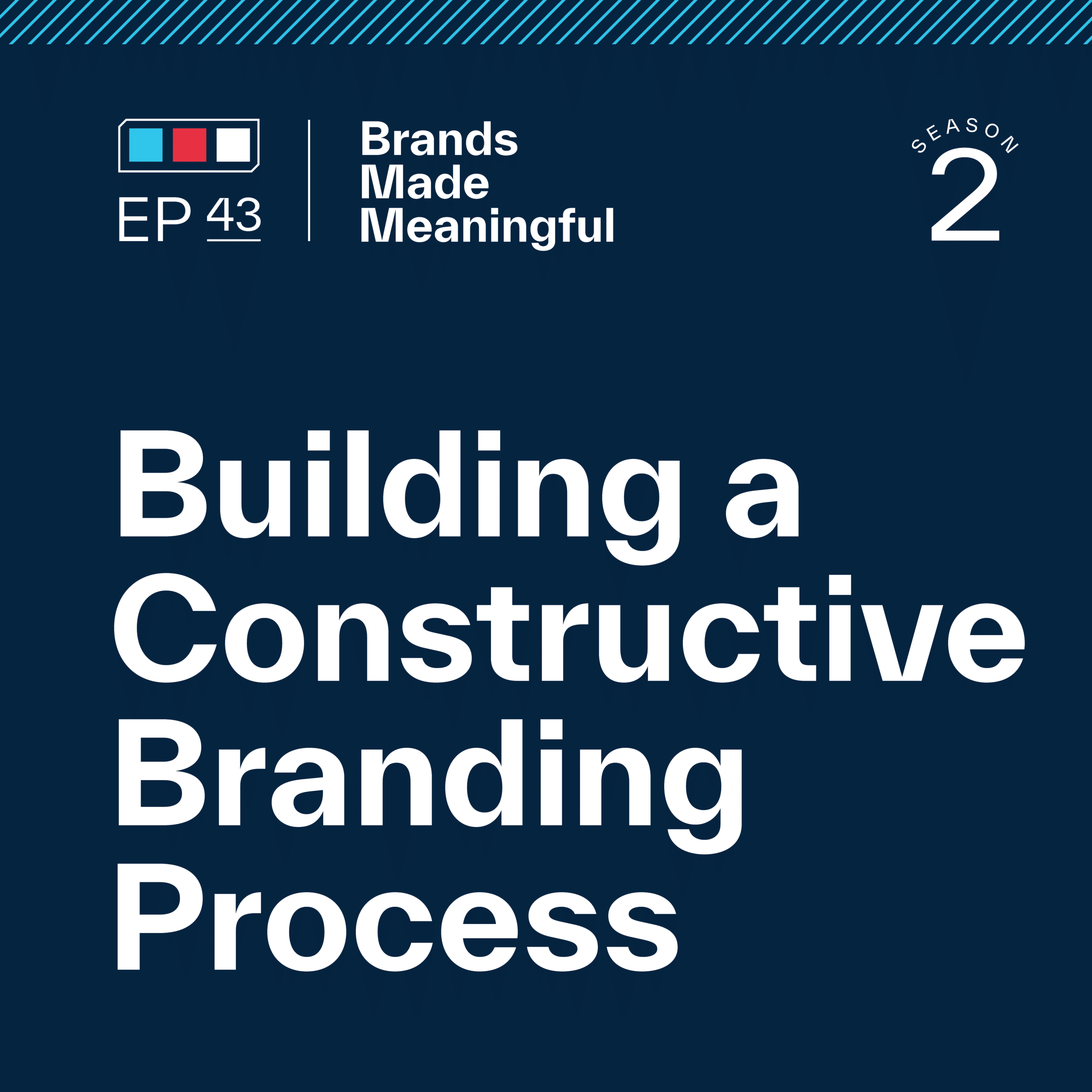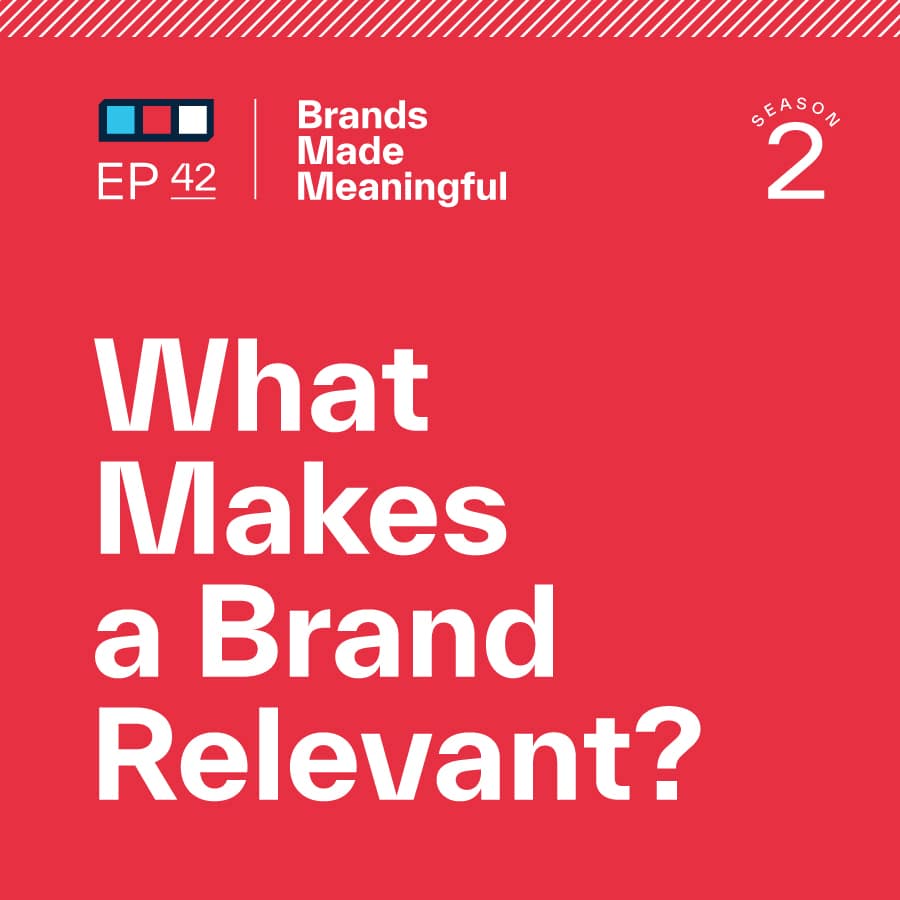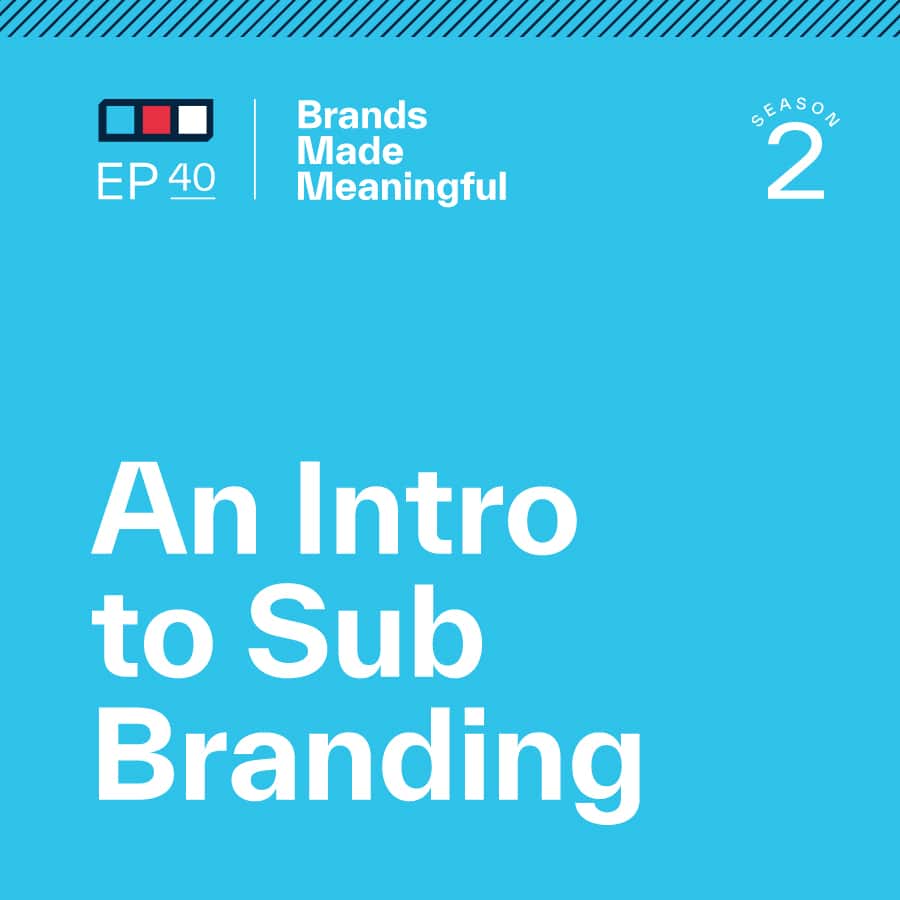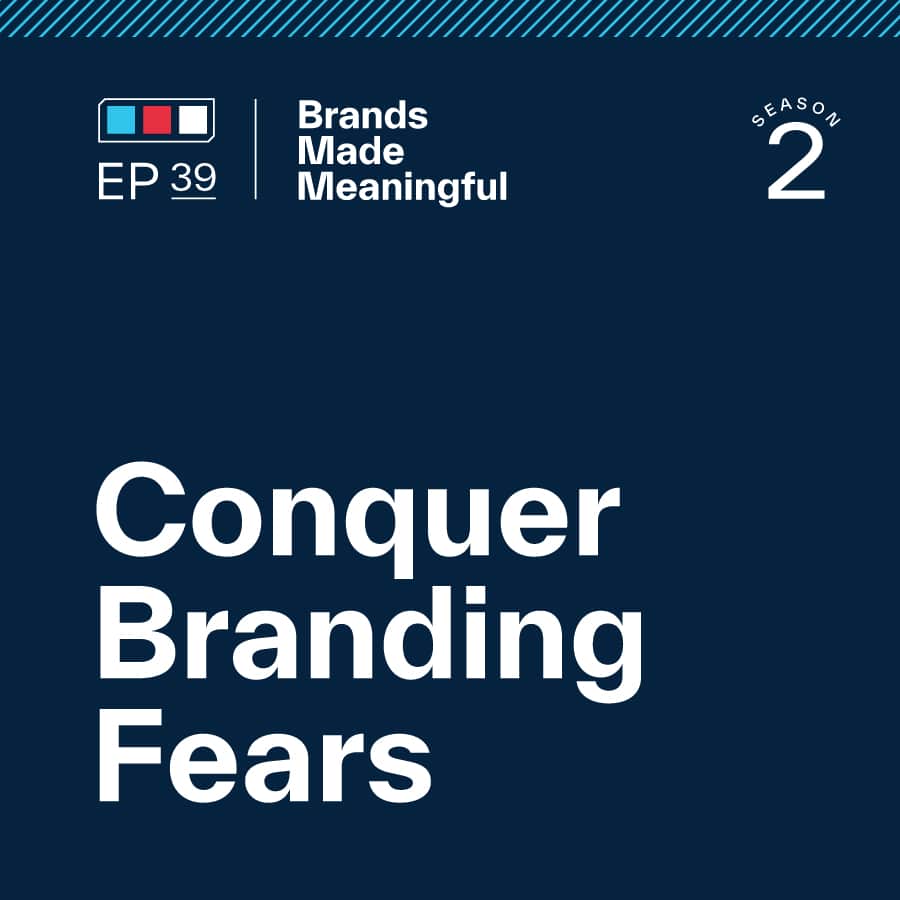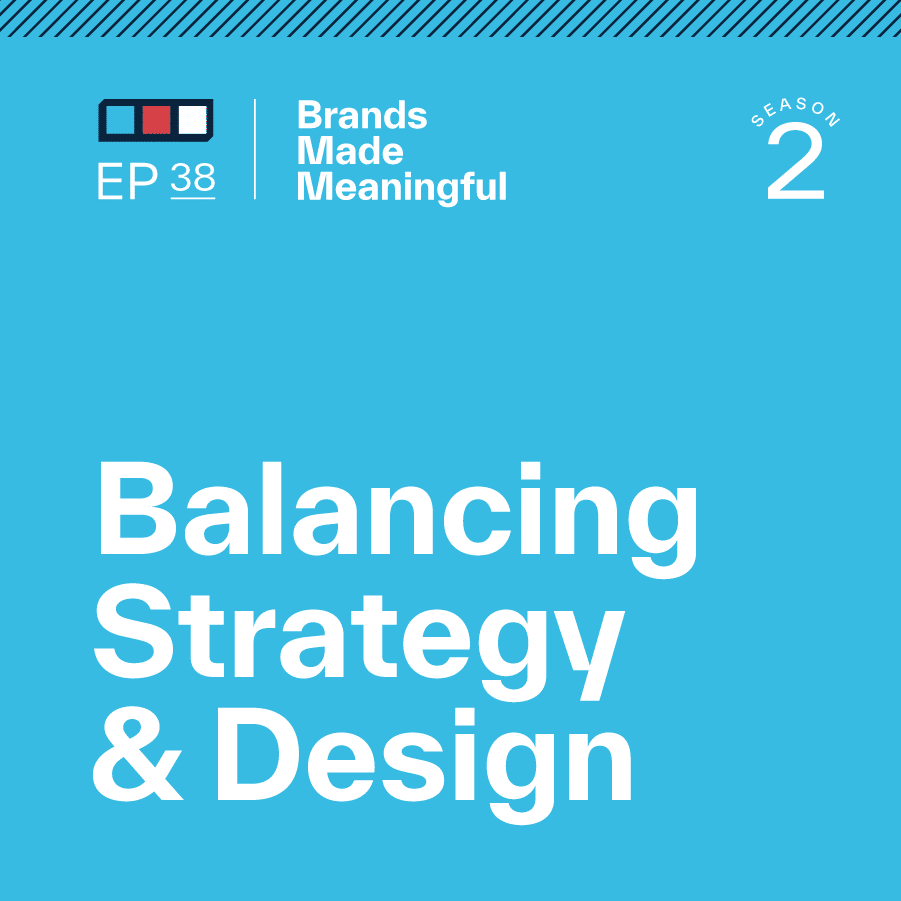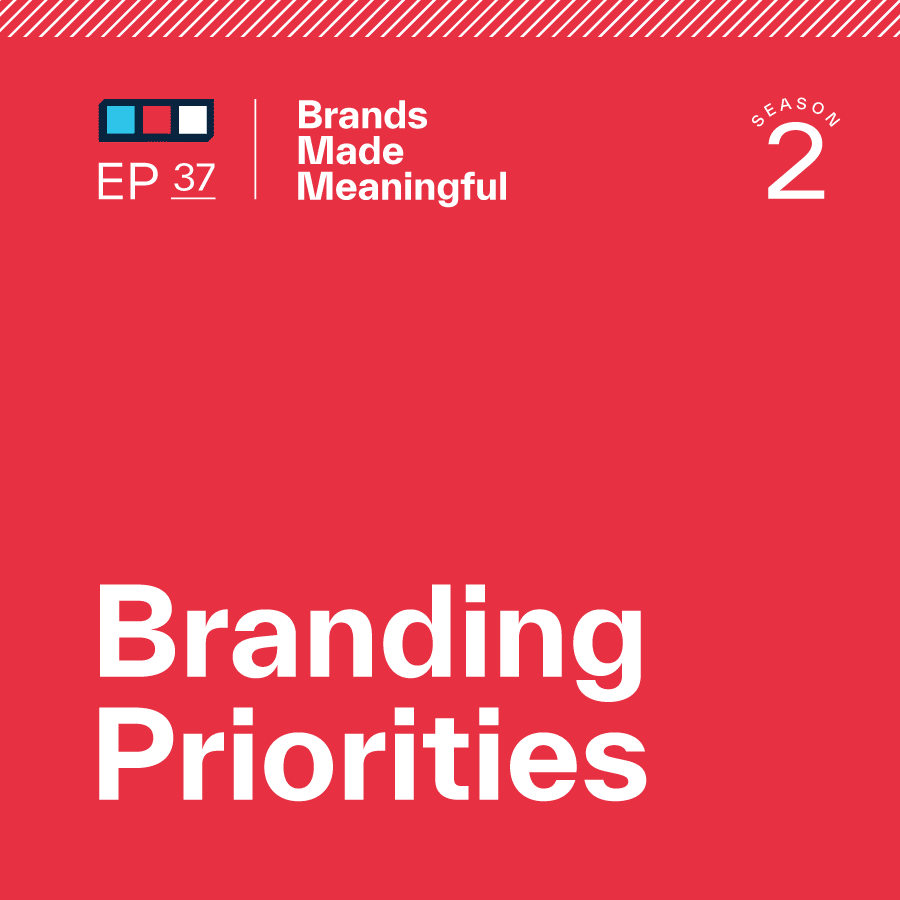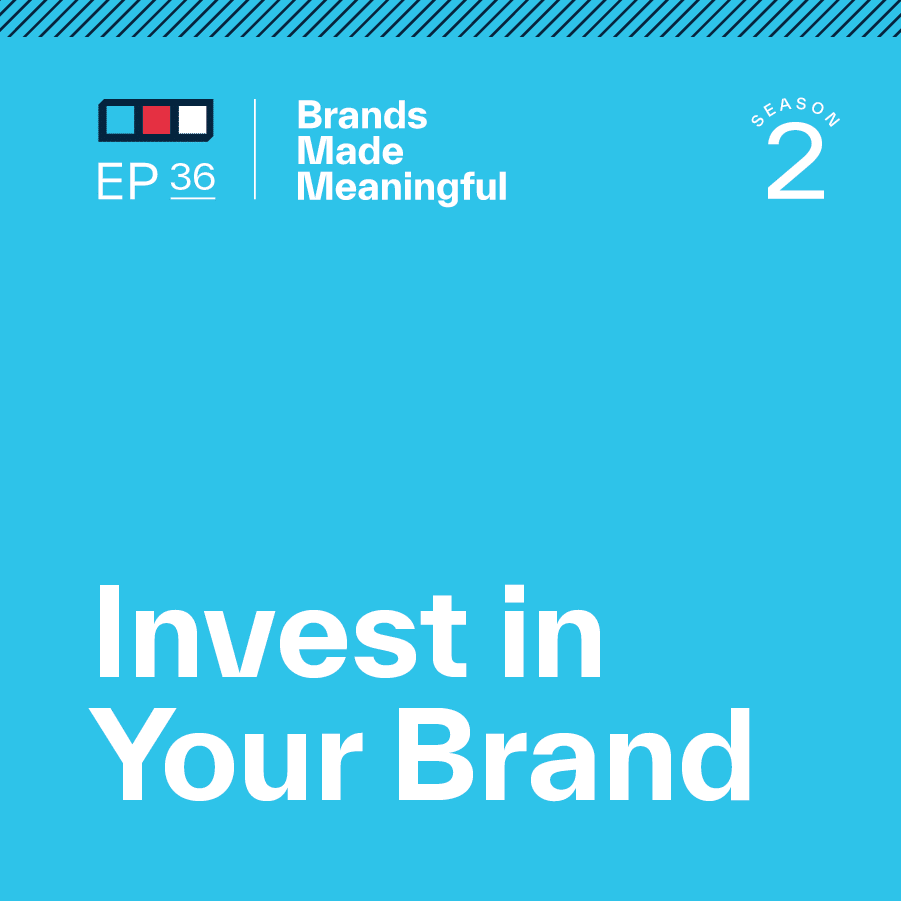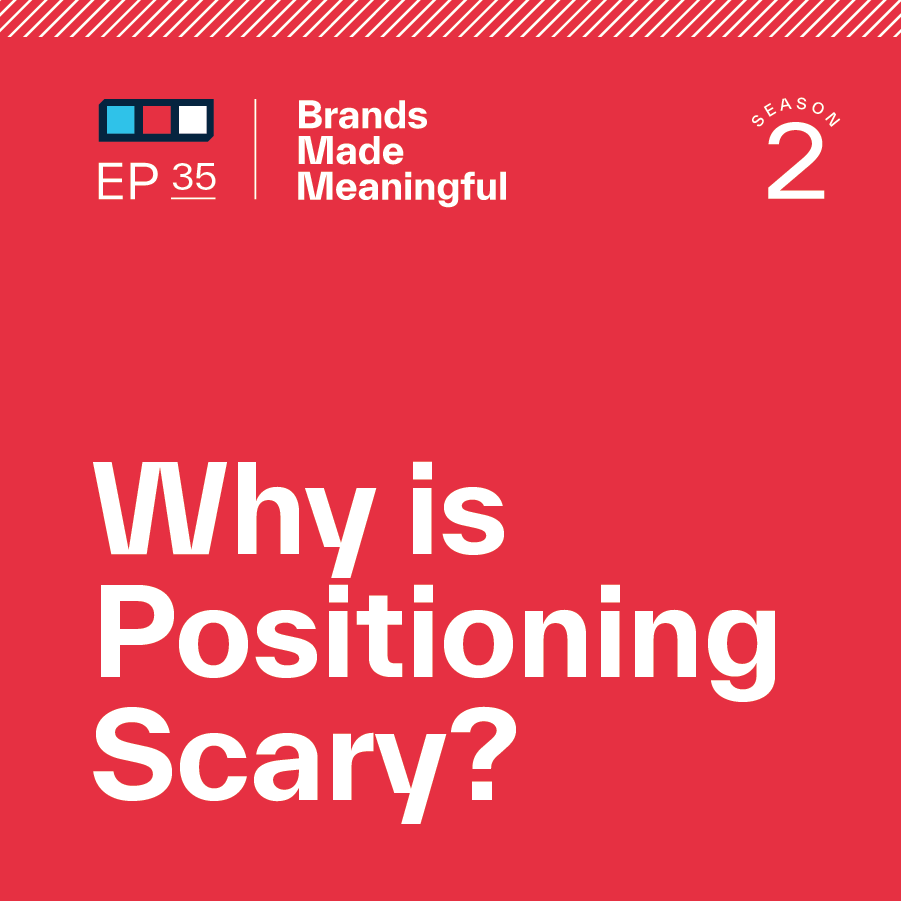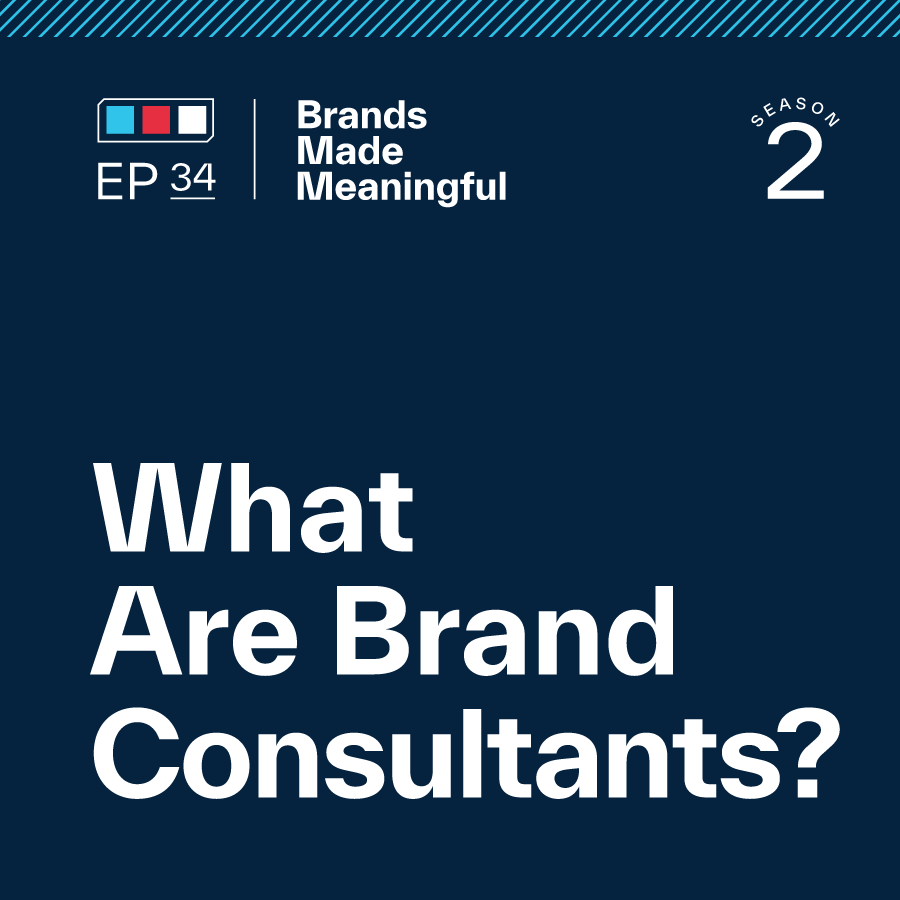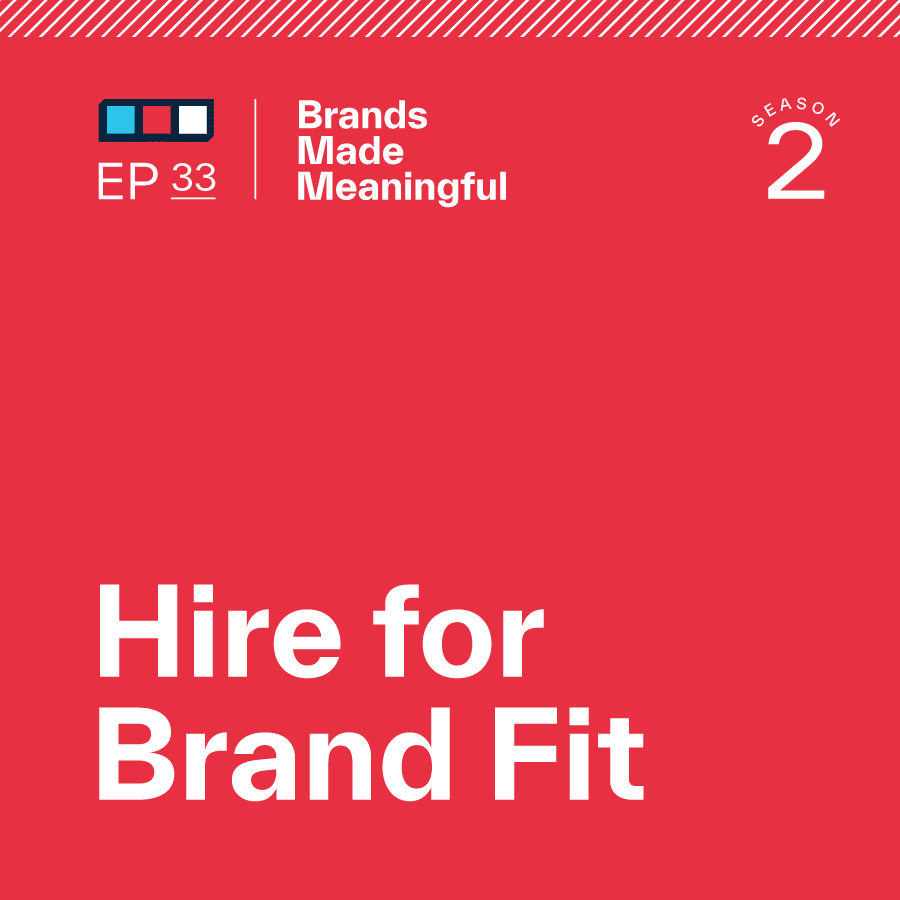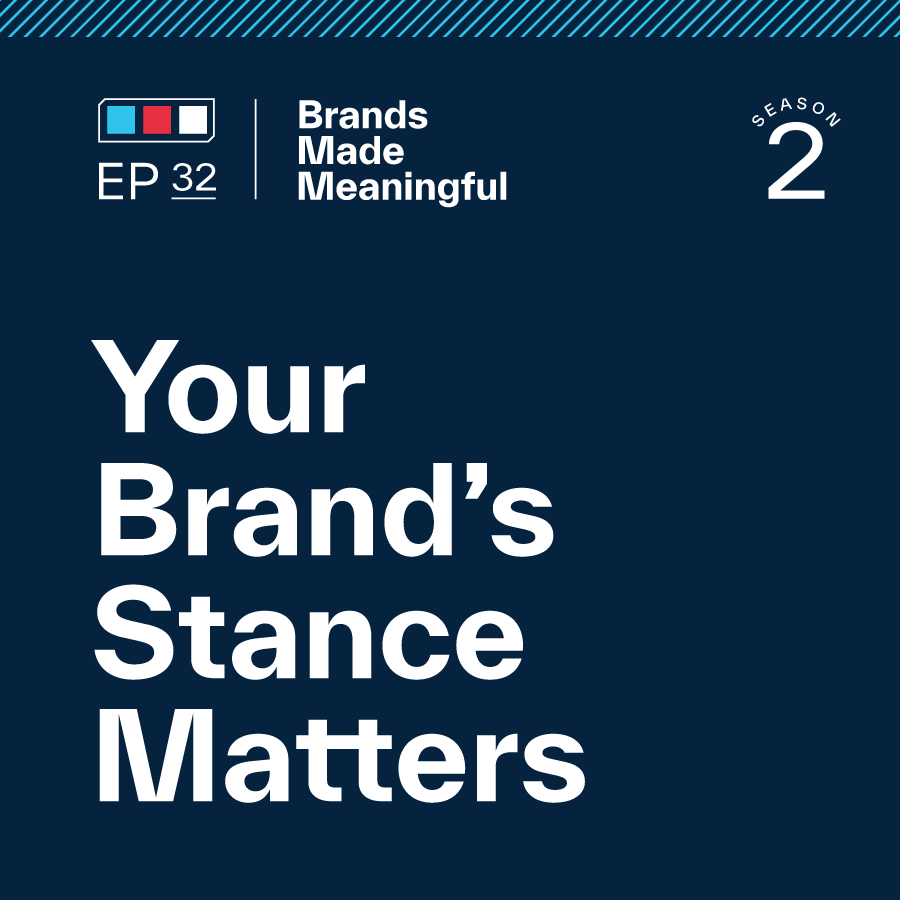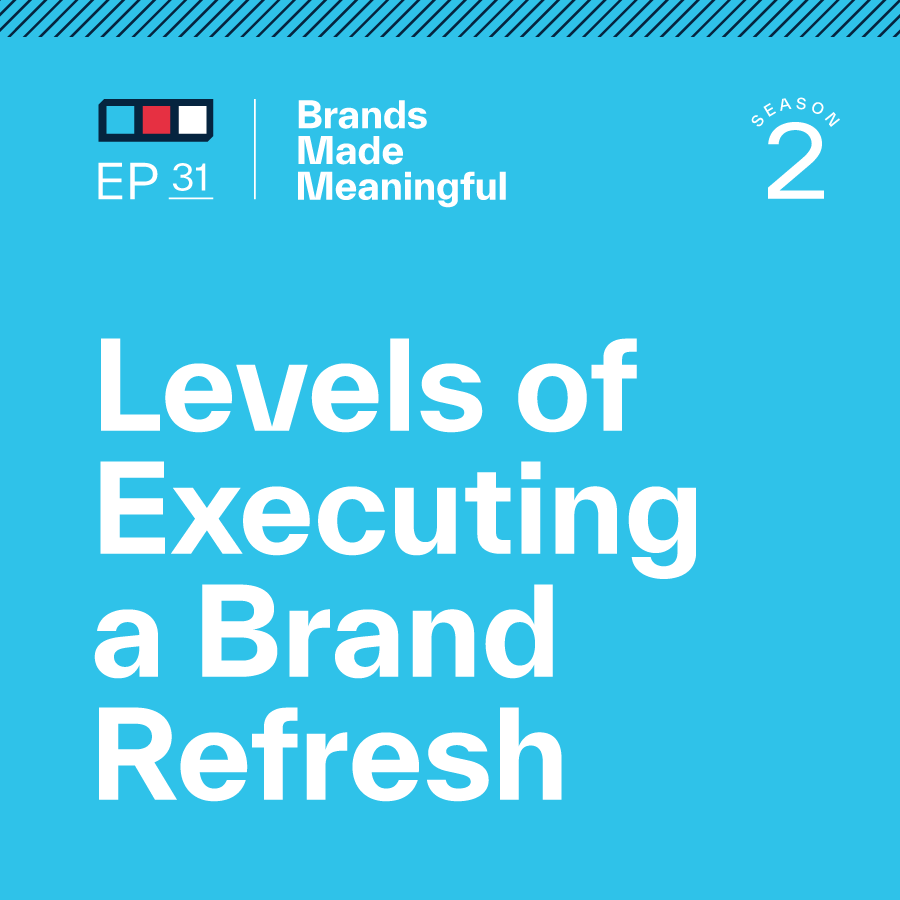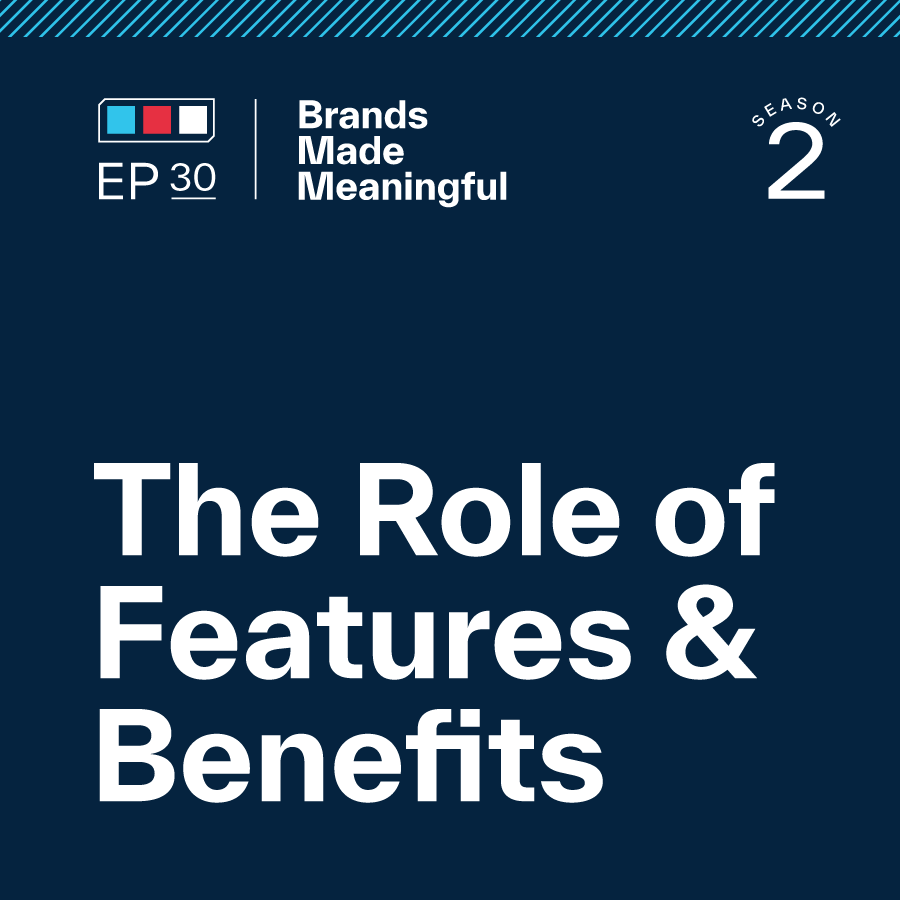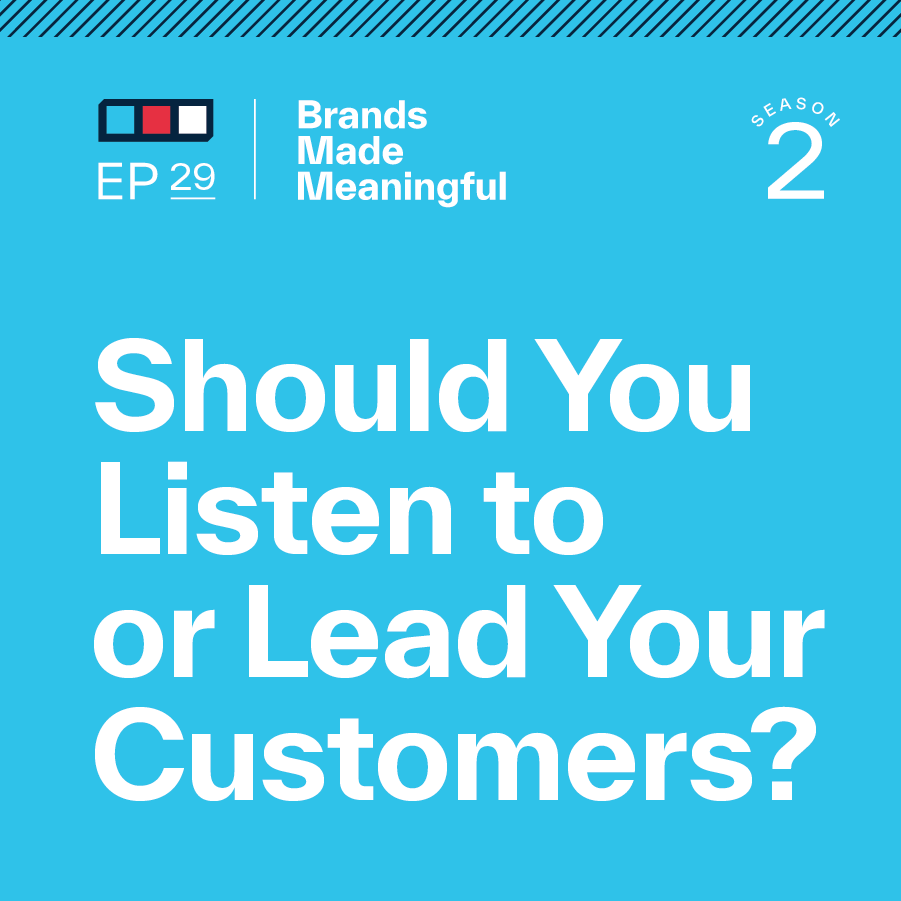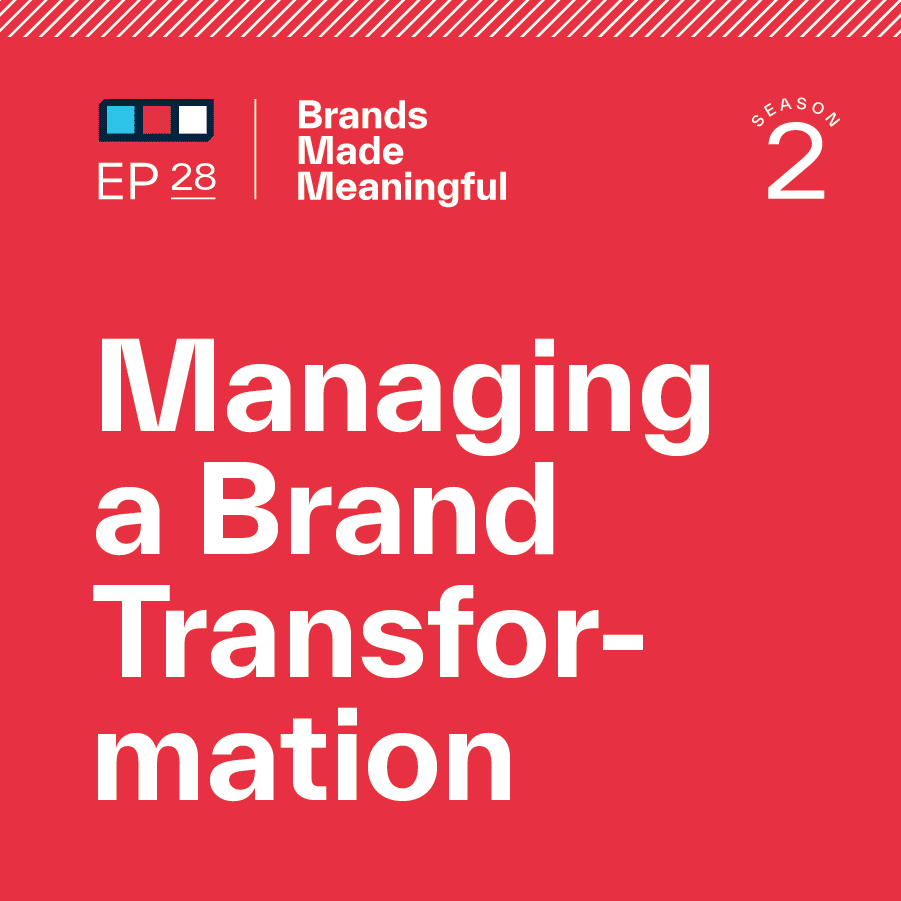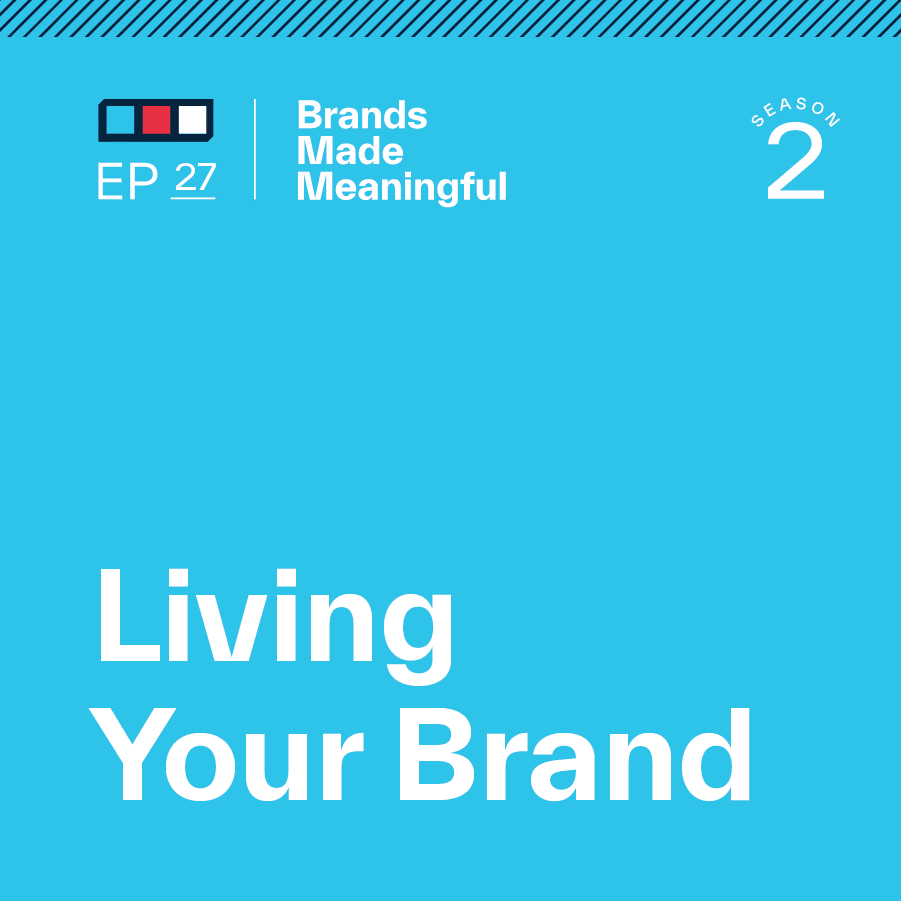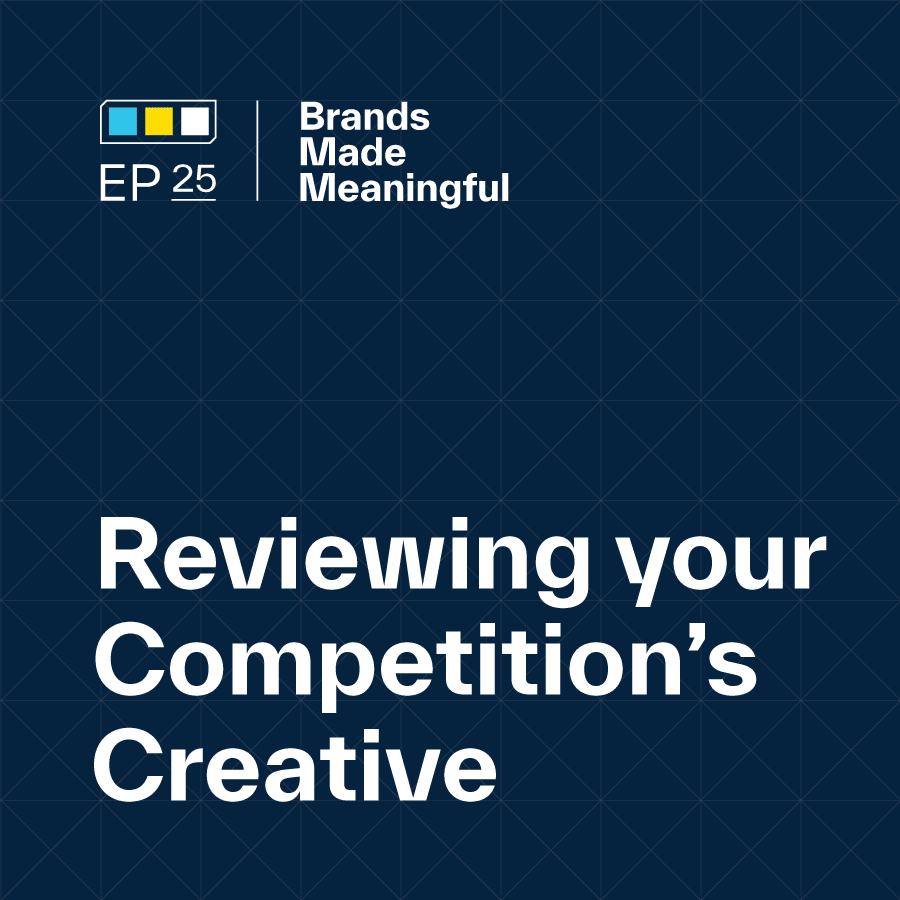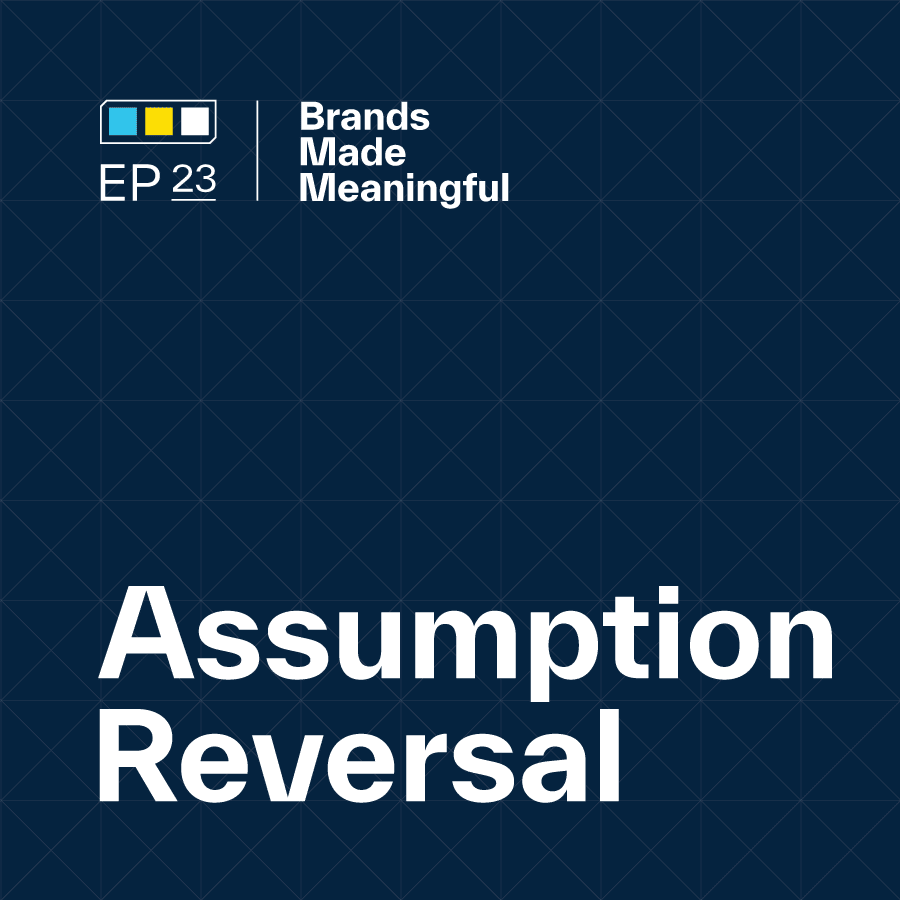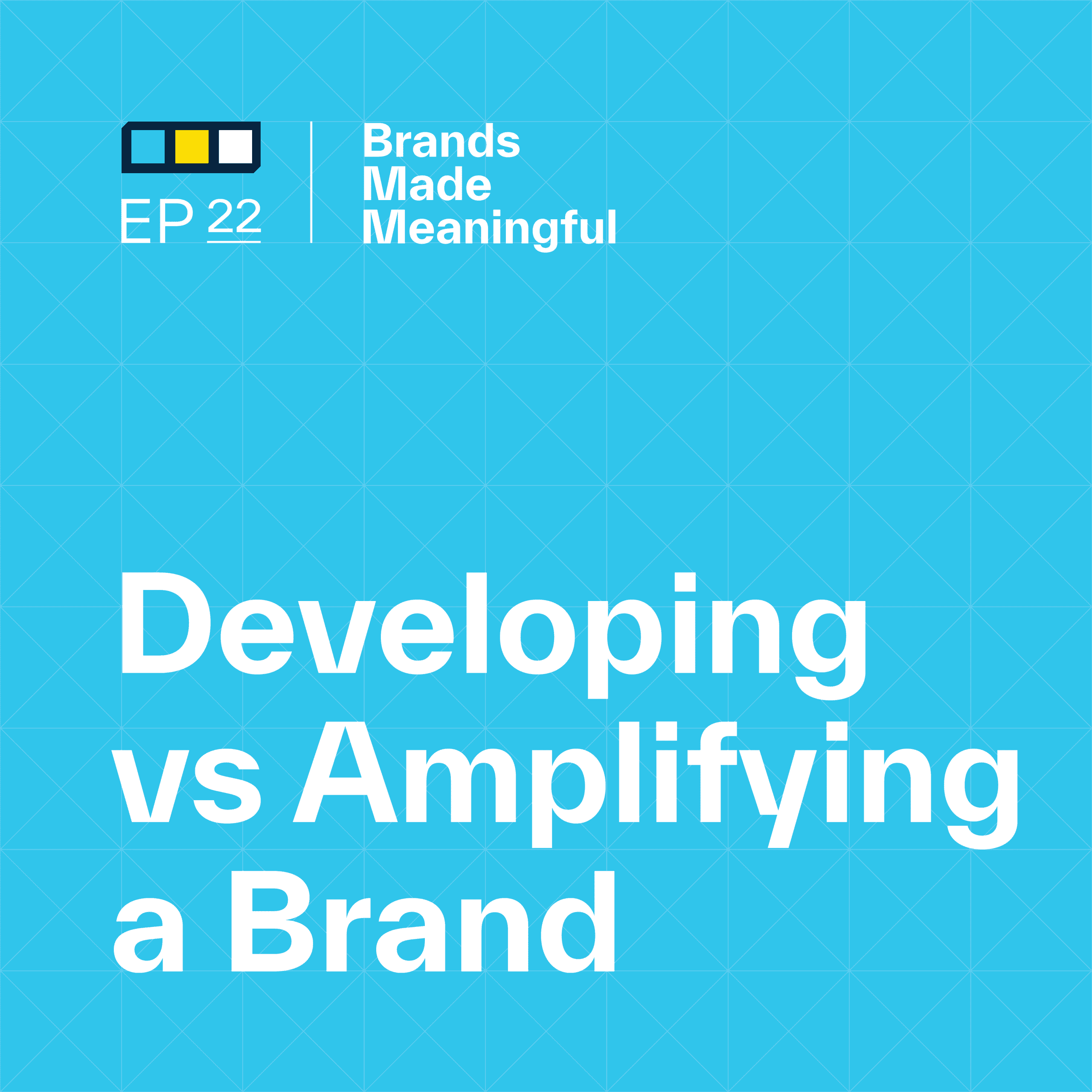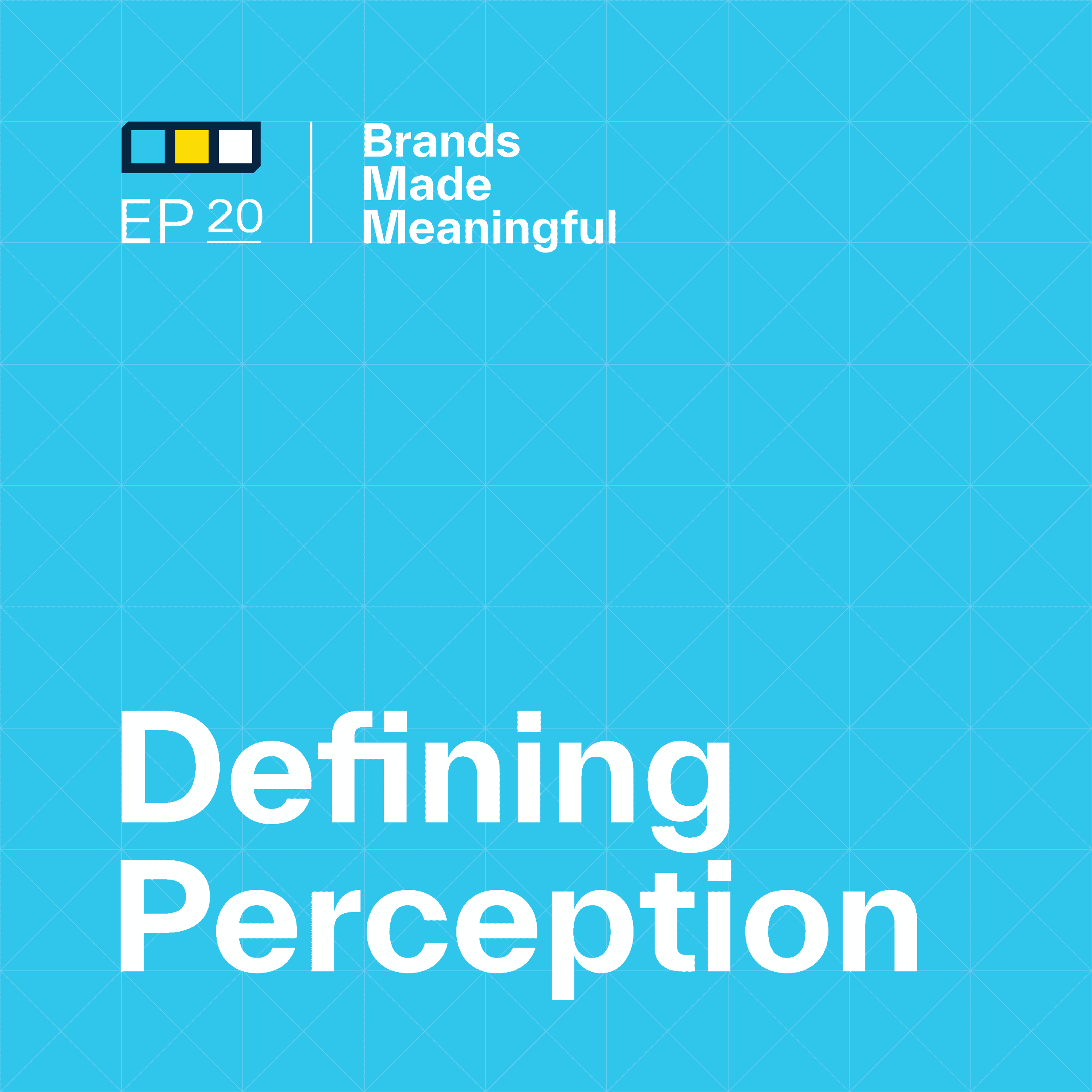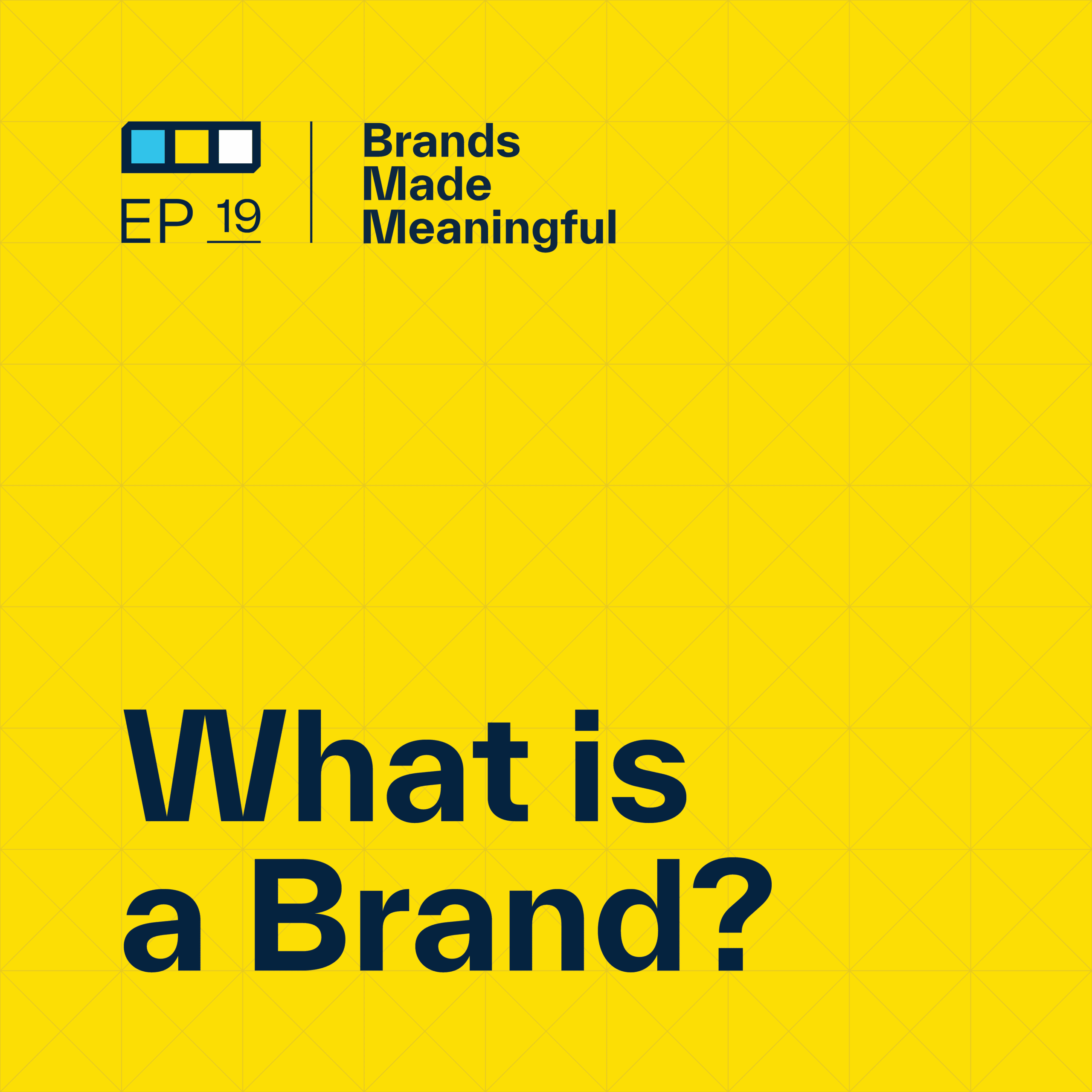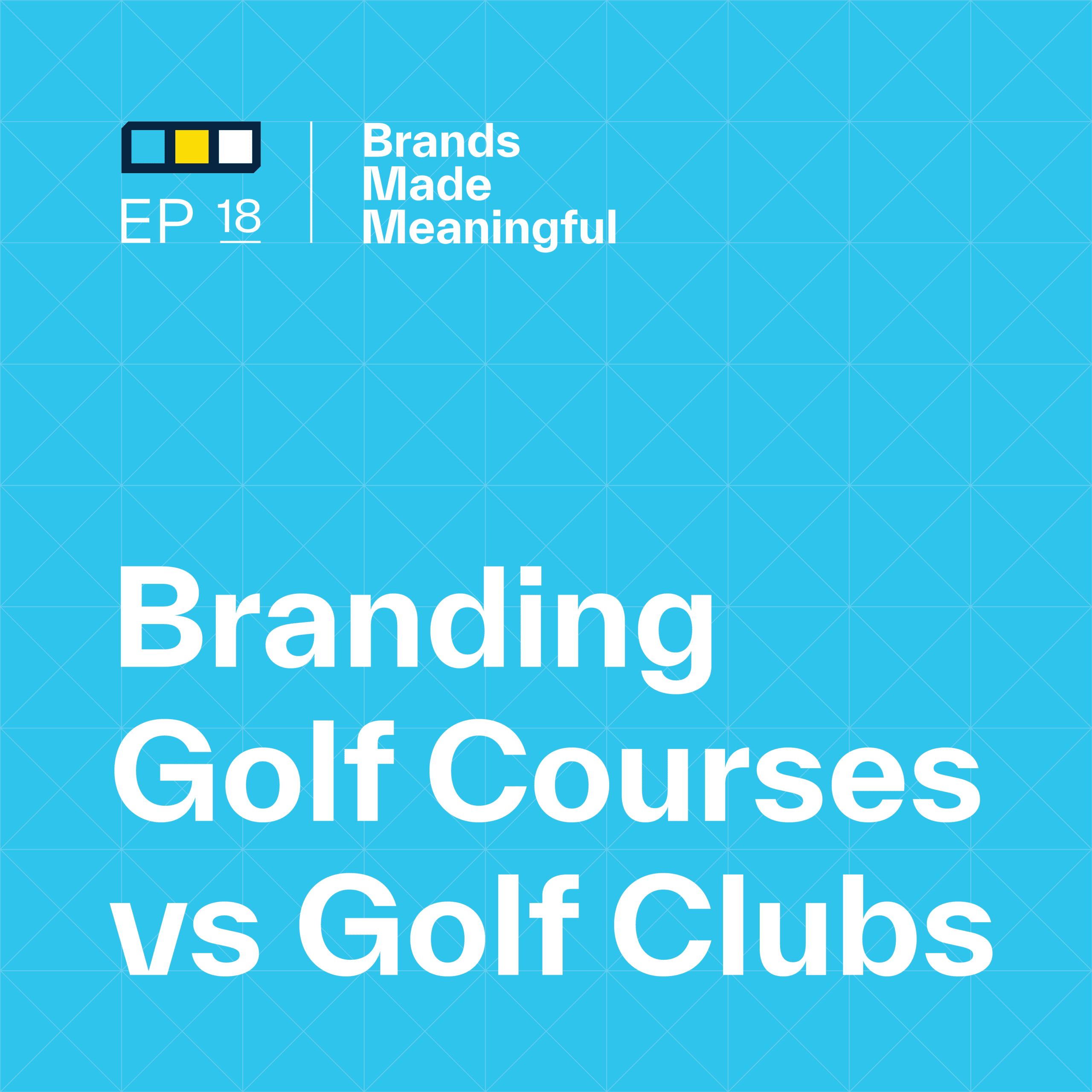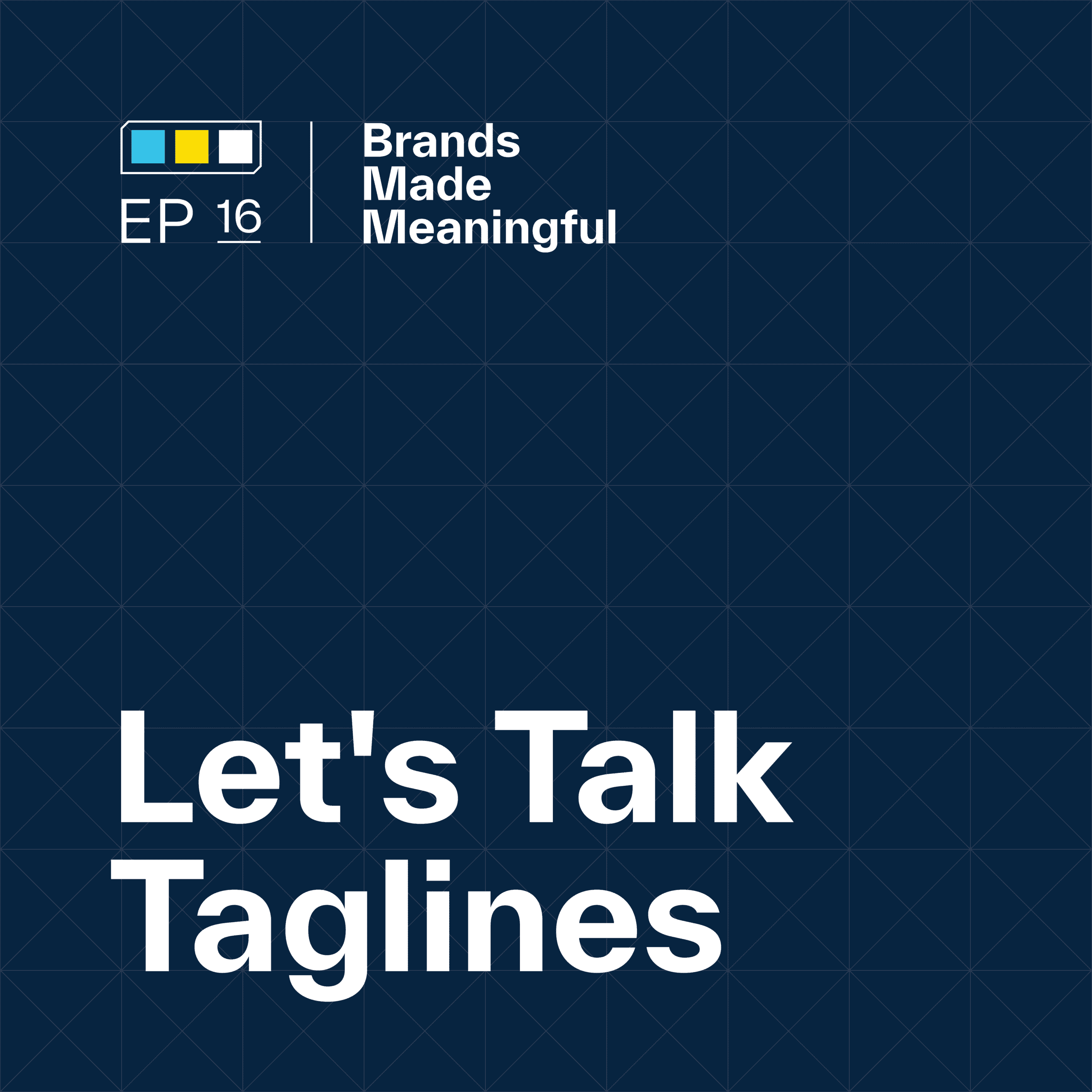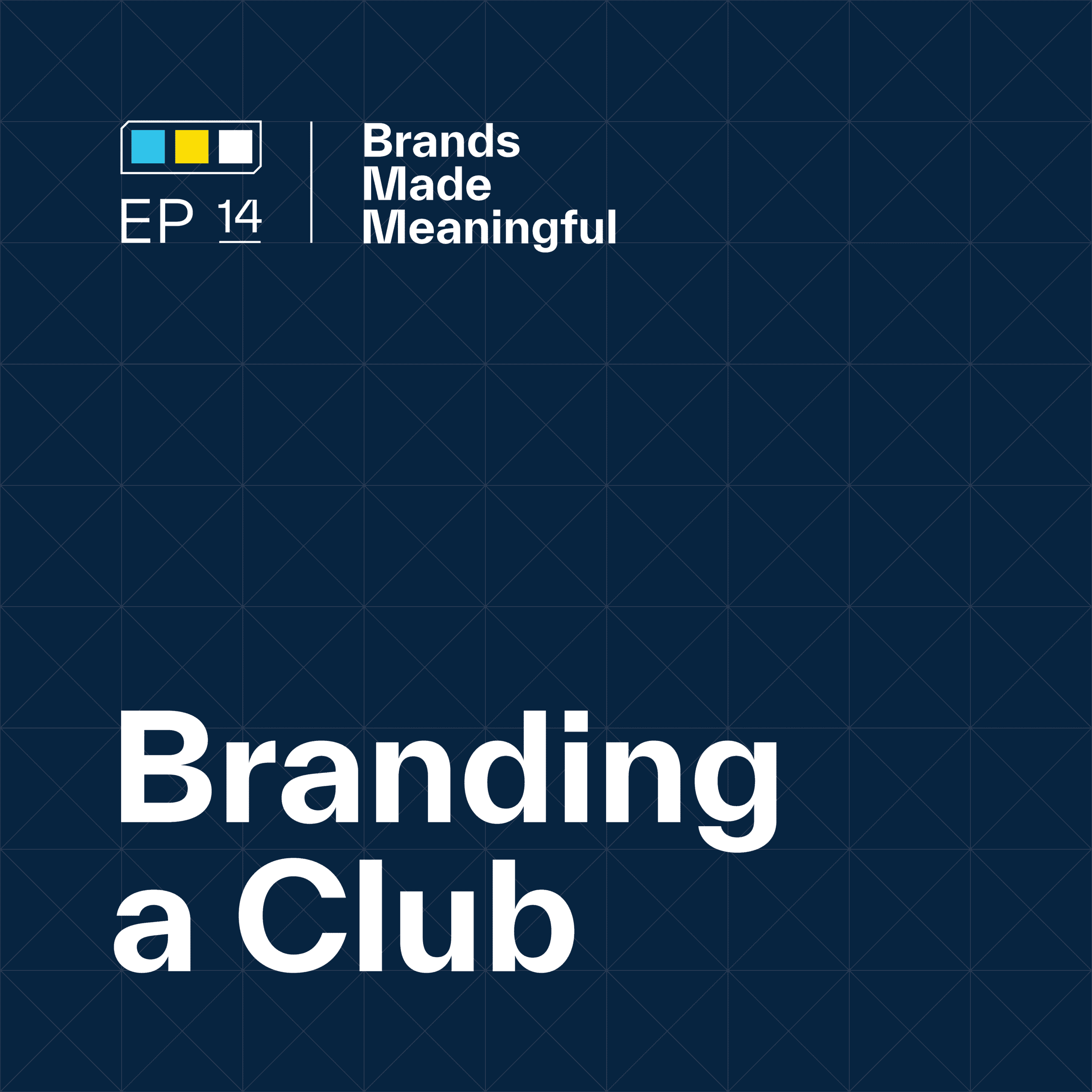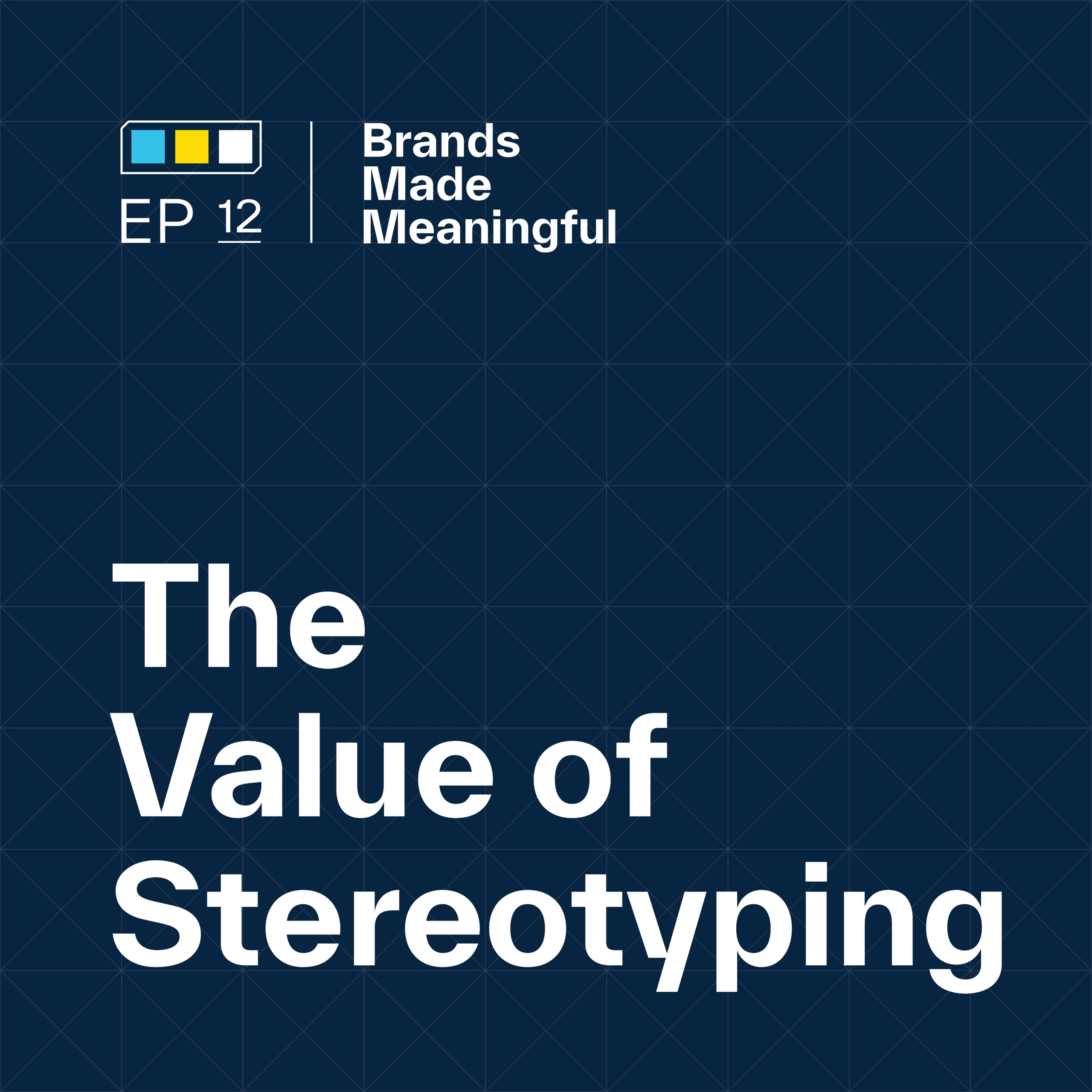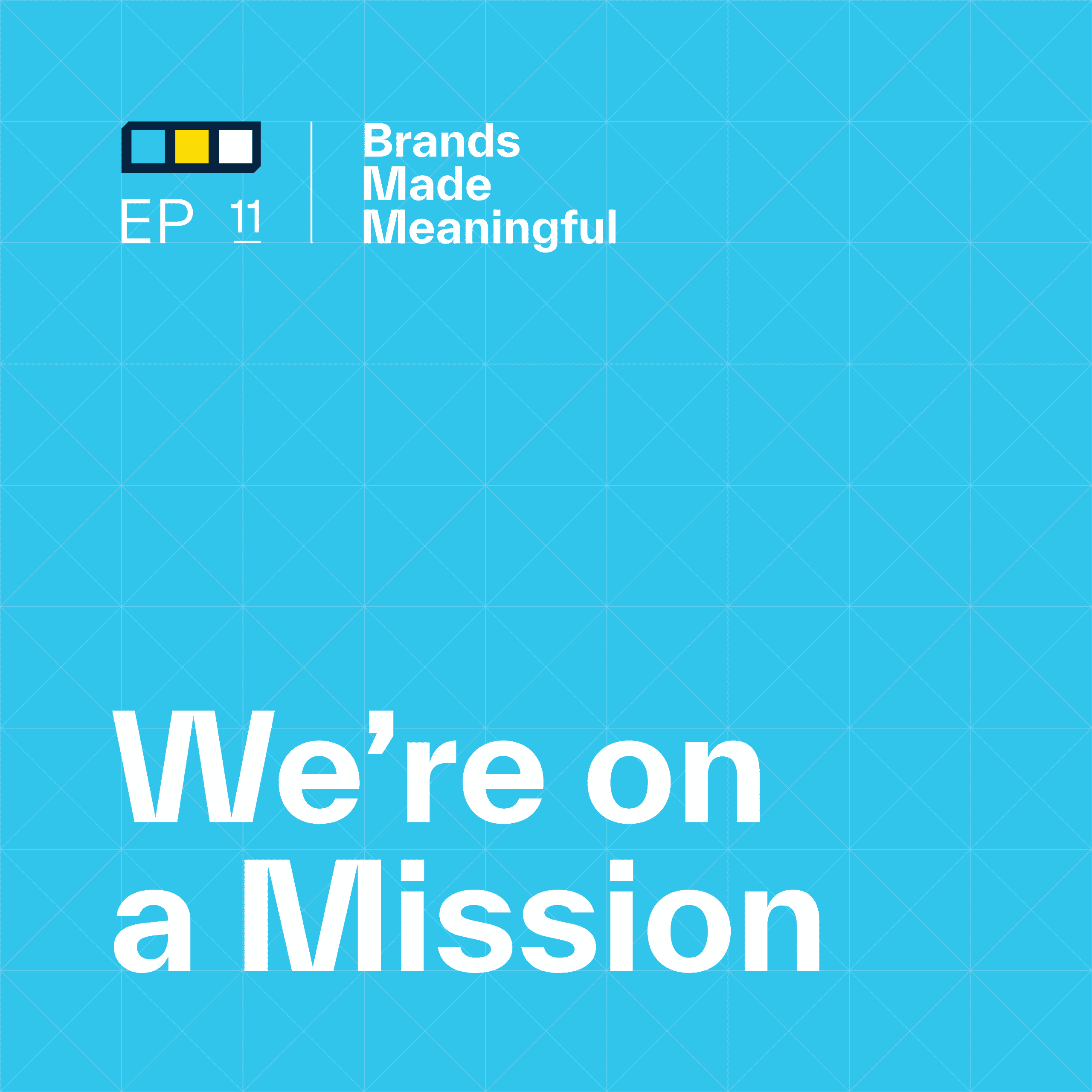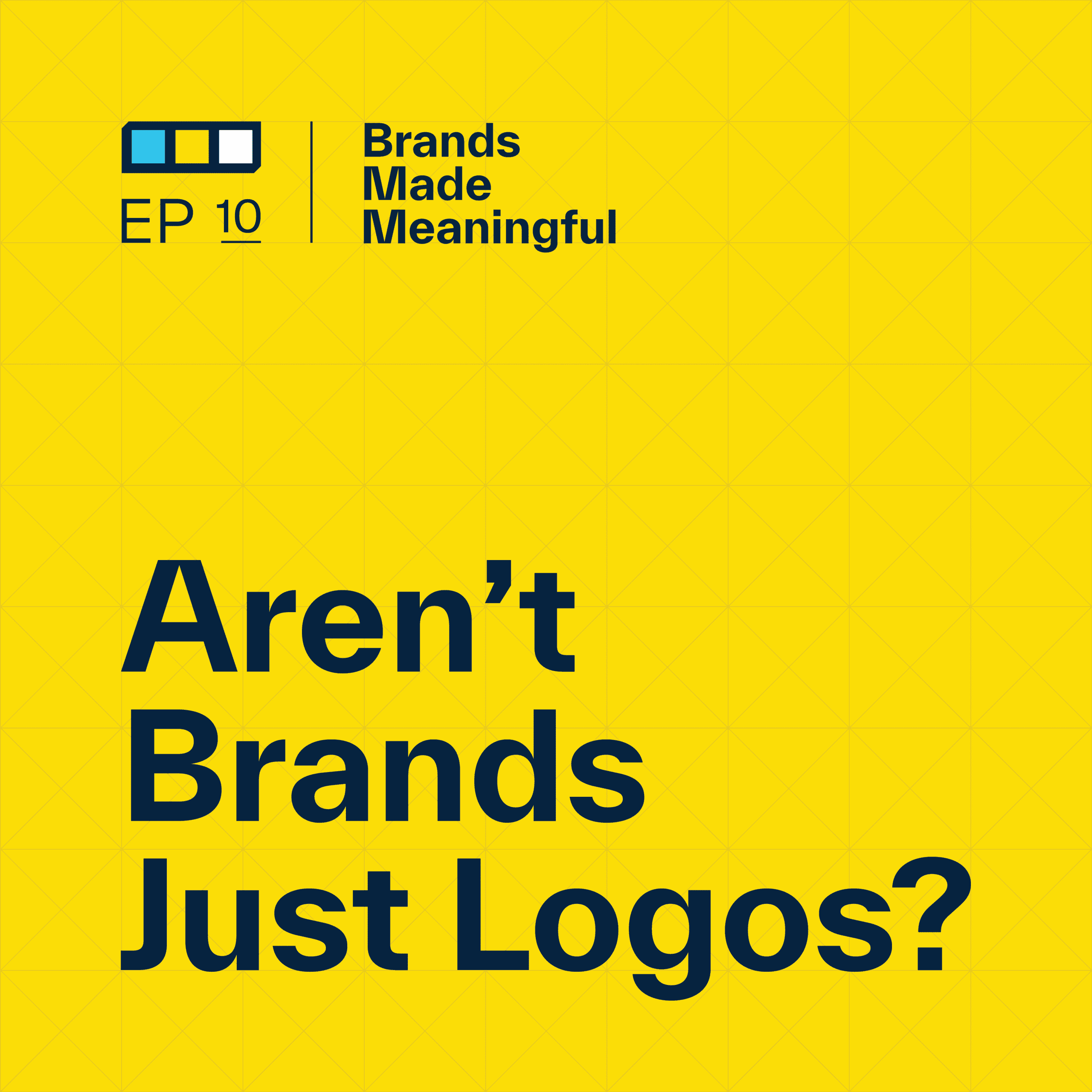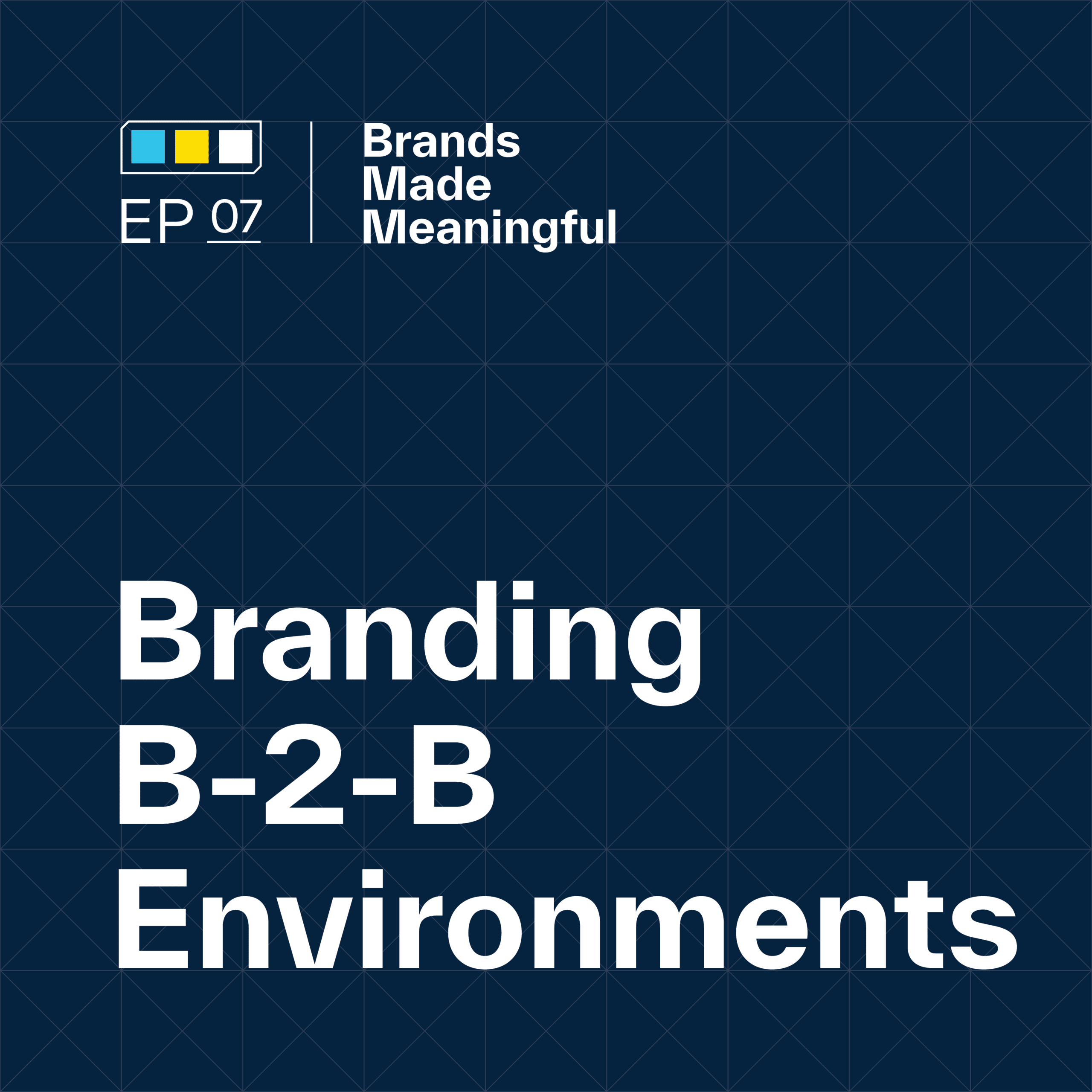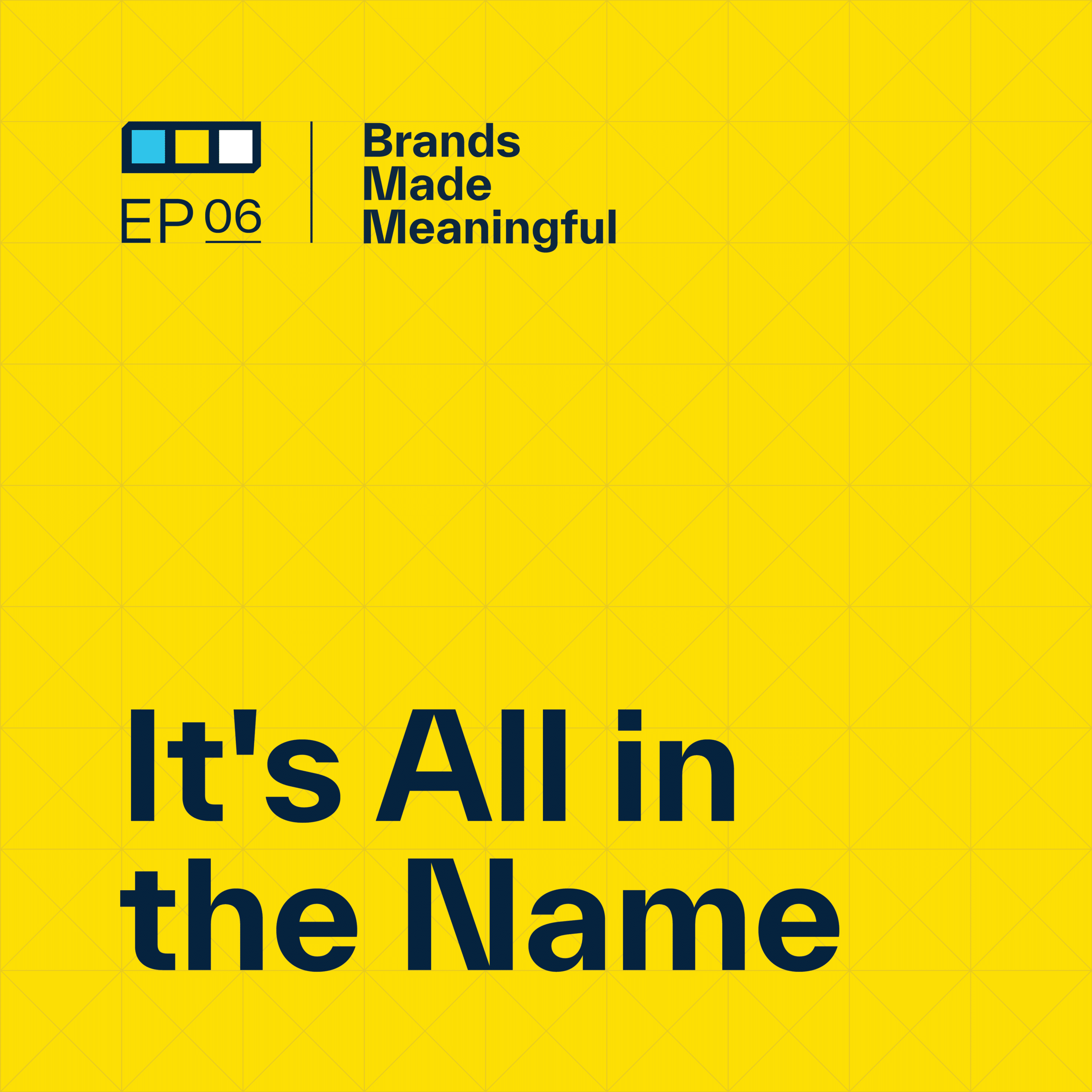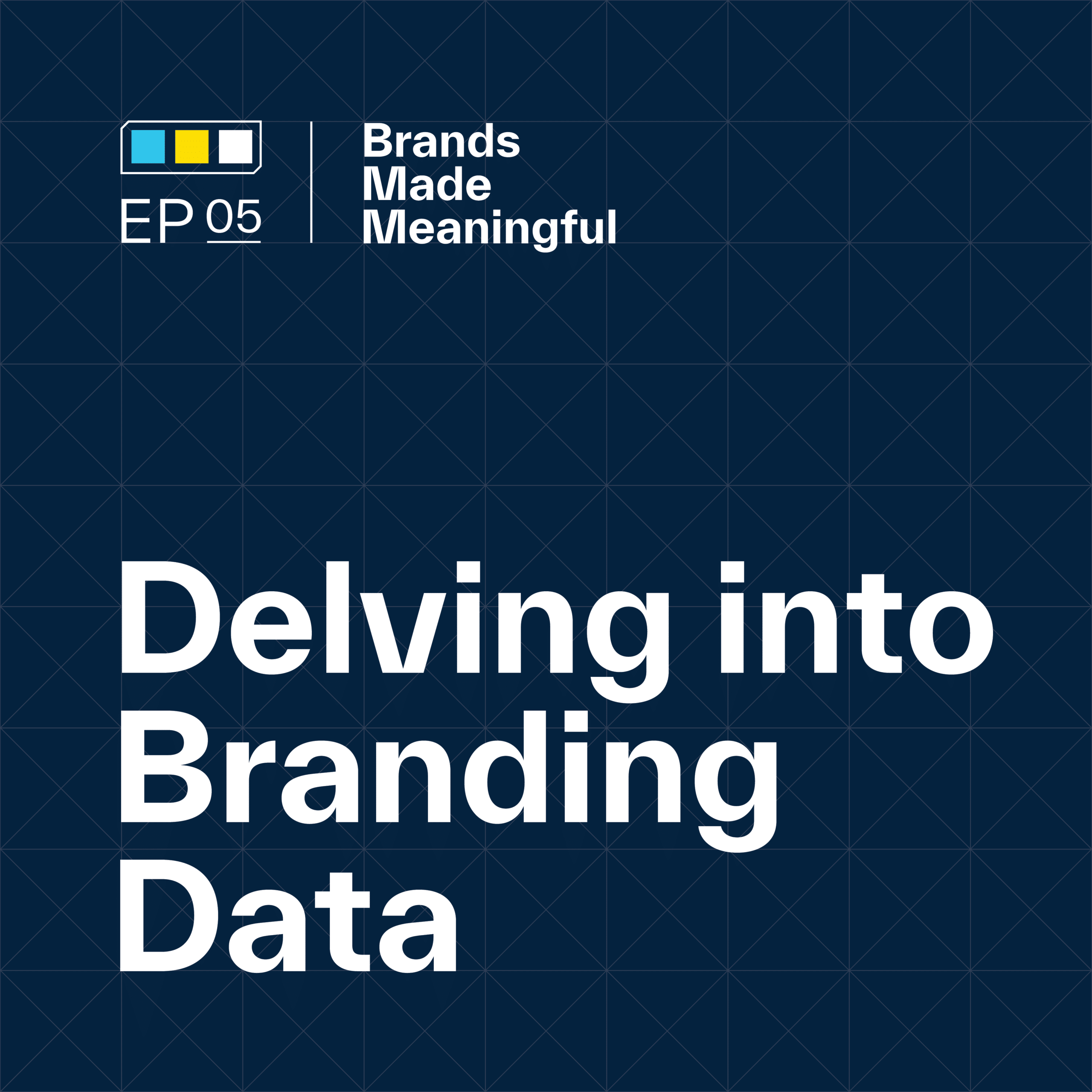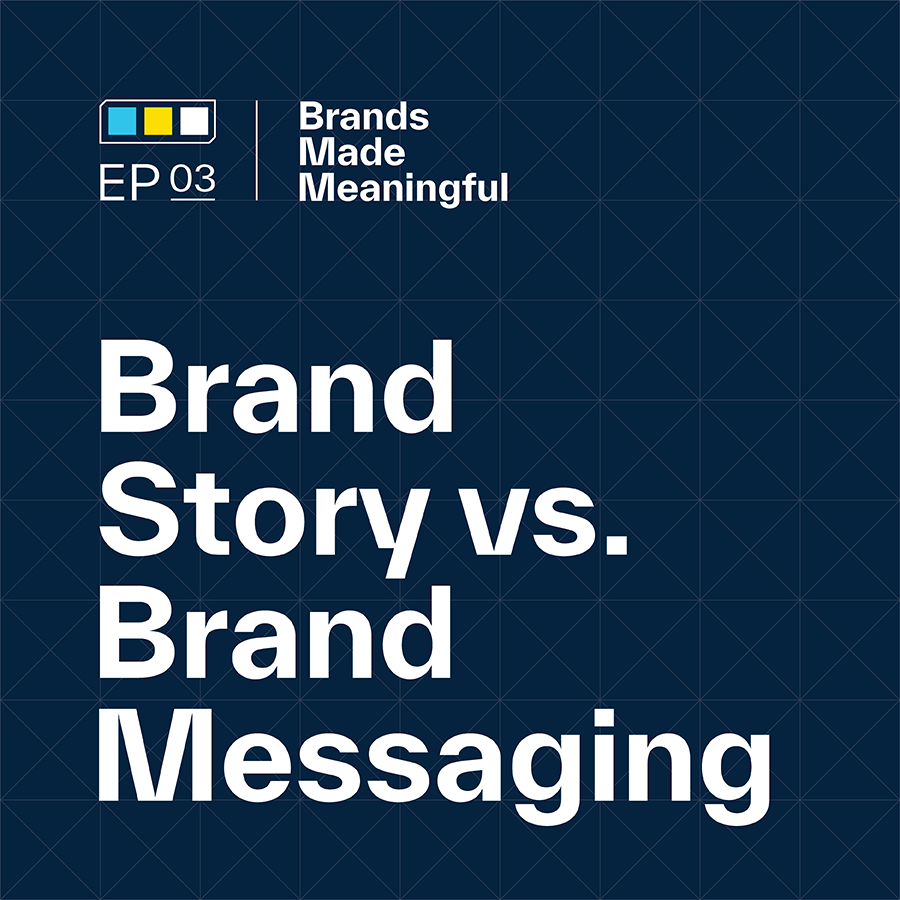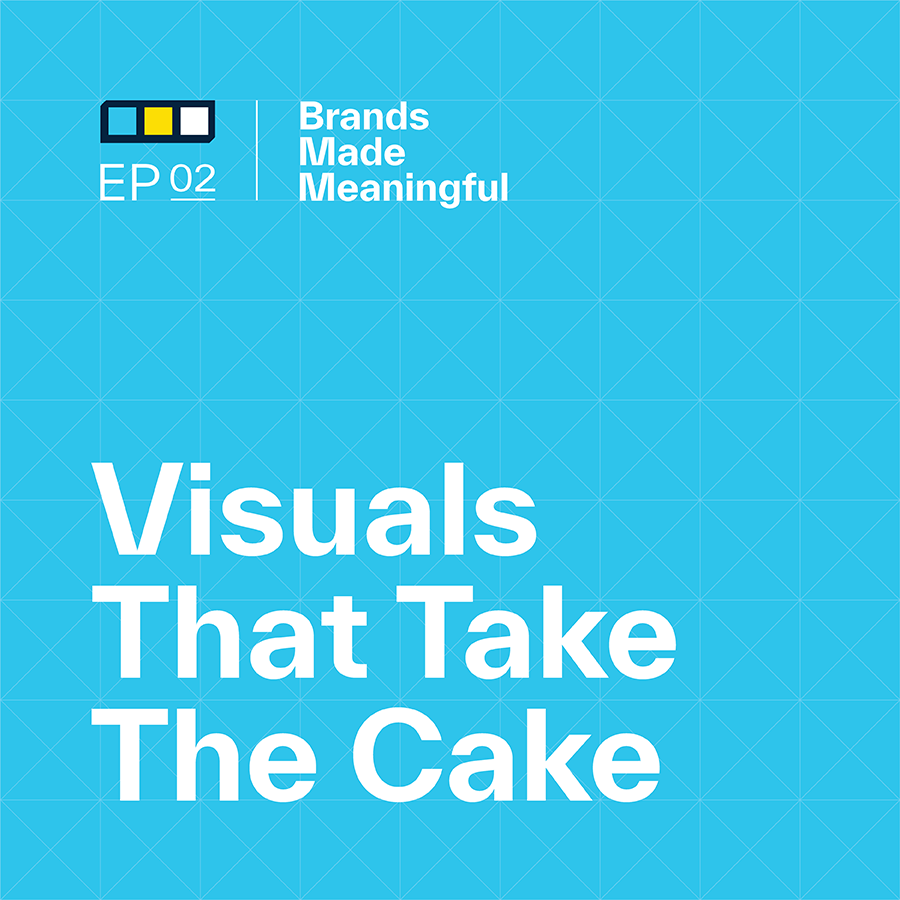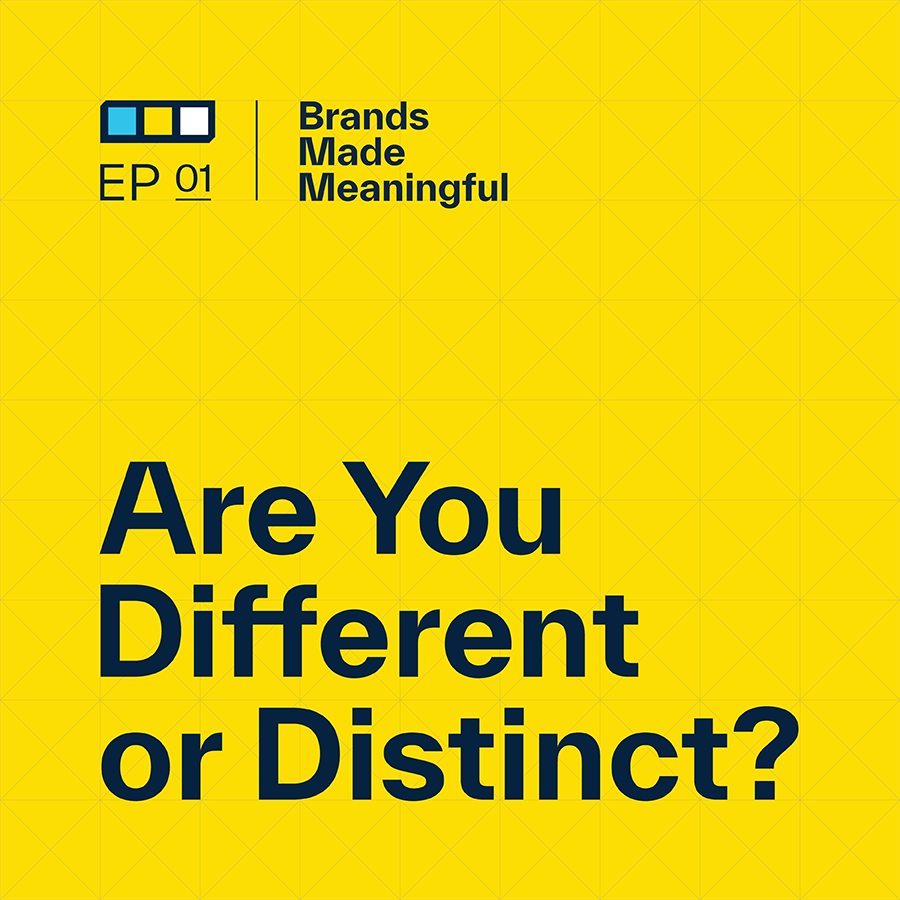EPISODE 66
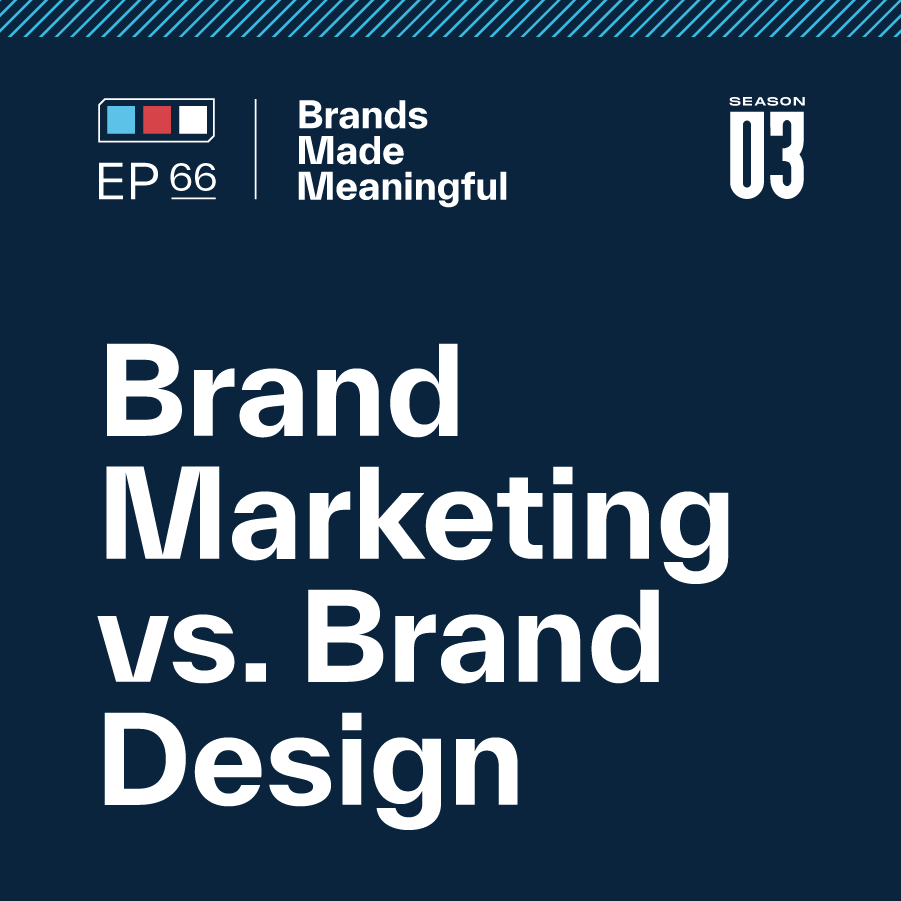
Brand Marketing vs. Brand Design
Episode 66
Derek and Tucker define the line between brand marketing and brand design and how they intersect to inform one another.
To read more about this topic, visit our blog.
EPISODE TRANSCRIPTION
We’ve never really talked about it here, but the difference between brand design and brand marketing is going to be a really interesting discussion –
Tucker because you need both as a private club. You absolutely need both.
Expand Full Transcript
Derek Welcome to Brands Made Meaningful conversations with the team at Sussner about how purposeful branding inspires unity, identity, and powerful change for growth-minded organizations. Welcome back to Brands Made Meaningful Episode 66, I believe.
Tucker Yeah, we’re rolling. I’m really excited about this conversation because when we talk to clubs, this comes up a lot in our conversations. We’ve never really talked about it here, but the difference between brand design and brand marketing is going to be a really interesting discussion because you need both as a private club. You absolutely need both. And I think that there’s a set of GMs and directors that believe that you don’t really need both – that maybe one works and the other one doesn’t. And I think we do one of these. We do brand design. We don’t necessarily do brand marketing, but I would be an advocate for the firms that do brand marketing for clubs because it’s absolutely necessary for certain situations and how that works. But that’s what we’re talking about today.
Derek I think most of the people we talk to who don’t work in the creative industry don’t know the difference between these at all.
Tucker Absolutely.
Derek So if we get a call and they might say the word brand or branding and what they’re thinking is a recruitment campaign. Or they’re thinking about their website or they’re thinking about marketing materials. And a lot of people, as we’ve said in many of these conversations who say the word brand, just think that’s logo design. So I think today’s conversation will be a great opportunity to clarify what the difference is. They’re really two different disciplines with two different purposes and reasons why each of them is important and what each impacts. I think to clarify this today will be great.
Tucker Before diving into each of them, really specifically, I want to just highlight when this conversation is really relevant for a lot of clubs. So we’ve dealt with clubs across many different situations now. And what really comes up is whether you’re going through strategic planning, or whether you’re going through maybe a membership expansion like you’re trying to grow your membership. Maybe you are thinking about rebranding the club or you have an opportunity where maybe you’re hitting a historic mark. And you say, we’re turning 100 years or 50 years. What do we want to do? Maybe we want to refresh our brand. This conversation is really relevant. Maybe you’re going through a facility transformation, redoing your course, or maybe redoing your tennis facility. There are a lot of things that happen. You could maybe just be going to the year-end budgeting and saying, What do we want to do next year that really helps us stand out? That helps us have this conversation. Should we do brand design? Should we do brand marketing? How does all this work? Maybe you’re just a new club altogether. And so there’s lots of different areas.
Derek Or new at this club. A leadership change or a transition is also a common situation.
Tucker So brand design is where I’m going to start because that’s what we do here. We’re most familiar with it. This is absolutely our bread and butter. Then I’ll go into brand marketing and then a little bit of when you need one versus the other and how they work together.
Derek So let’s start with brand design.
Tucker So brand design is the process of developing and defining our identity, our personality, for the club. This includes things like brand strategy, visual identity, brand messaging, experience, design, and things like what is our mission, vision, and values. Where is our position in the marketplace? What story do we want to tell with our brand? That’s a big part of this. The visual sides are things you talked about whether it’s creating logos or color schemes or typography, or visual elements – think graphic design. Messaging would be things like what is our voice, what’s our tone, what are our value propositions that we want to hold up? How does our website read? How do things happen within that brand messaging that conveys the essence of who we are? And then experience design might be something like events or tournaments. How do people walk through a space? When we walk through a clubhouse, what does that feel like? What does that look like? How do we build guidelines for people to make sure that their experience is all right? So that’s really brand design, I think, to simplify all those things. Think about it like laying the foundation for how you show up in the world. Building out all of the visual tools. The verbal tools like the messaging, all those components that you’re going to use in your marketing, get built-in brand design. And then experience design is making sure you have a cohesive experience across all these elements, whether it’s your menus look the same or sound the same to your signage at the club looks or sounds the same, has the same kind of feel to it. And why this is important in general is we’re going to build consistency, which is really important for professionalism. If your club has a certain expectation by members to be professional or present itself well, consistency is a huge part of that. It’s also going to be a huge differentiator to figure out how are we different. Why are we different? How do we look different? How do we sound different? How can we make sure when someone sees us, whether it’s a guest or a member or a prospective member, they’re coming to the conclusion on their own that this club is different than this other club that I might be looking at? And then it also helps with member engagement – making sure people feel like this is absolutely who we are, what we’re all about. I’m proud to wear that. I’m proud to sound like that, look like that. And then it really is about the long-term vision. So brand design is really long-term.
Derek It’s very foundational. It’s not something that you do consistently all the time once you’ve done it right. And we’ll get into marketing. Marketing is much more active. Brand strategy or brand design can often be thought of as a project, something that you start and finish. And then you can go into a maintenance mode. It’s not an ongoing expense on your line item. It’s more of a one-time investment that hopefully amortizes over ten years or more.
Tucker For the golf people listening to this, it’s the equivalent of building a course versus managing that course on a day-to-day basis. So building that course from a brand design would be things like we need to shape the greens in a certain way, we have a certain style, we have a certain layout, we have a certain length. There are a lot of things that go into it. But once you decide those things and you build that course, it’s pretty defined. It’s not like you’re going to change the shape of your greens every single year or even every month. Whereas marketing in that analogy is much more of grounds crew maintenance, making sure things are working well, making sure things look great, making sure that this course that we’ve put a lot of investment into is working for us the way we designed it to work for us.
Derek Marketing is telling the world that we have a great new course that we just built.
Tucker Sure. And that could be it too – to say that people talk about it and people see it and people understand what they’re looking at versus maybe brand design is much more along the lines of what should this be? How should we experience this? What does that look like? What does that sound like? How do we understand ourselves and make this feel so different than maybe other places we’ve been or other clubs we’ve experienced?
Derek So brand marketing, by contrast, then shifts to, like we said, promoting, communicating, growing awareness, and looking at the various channels where your perspective audiences could be, staff, it could also be prospective members or current members. How do you talk to them? Where do you talk to them? And what messaging and content is appropriate in those lines of communication?
Tucker For those of you who love corporate speak, because who doesn’t love corporate speak, this is Marcom. This is marketing communications. This is how we are promoting ourselves. How we are building campaigns around who we are. How are we getting people to see us that don’t currently see us? It’s getting in front of people. Digital marketing is a big part of this. Public relations can be a big part of this. The idea of content marketing – developing valuable content to maybe attract new members, thinking about how we utilize social media and how we utilize email, and how we utilize our communications to our current members as well as communication across different things and making sure that the right information gets to the right people at the right time. That’s marketing. To simplify all of that when we say that brand design is more long-term, I wouldn’t say it’s a set it and forget it, but it’s a build it. And then how does this play out? The brand design is to build and craft and to give the club something that they can really leverage as an asset over a long period of time. Marketing is how we can take care of that asset and make sure that we’re leveraging it in the right ways. So they’re incredibly important. I don’t think you can do one without the other. For marketing, it’s all about visibility, engagement with new people, and revenue growth, thinking about how to get new prospective members to come and be interested in this and grow that. I know that there are firms out there that will make the argument that it’s much, much more than that. And I totally agree. It’s just kind of more than the conversation I think today is.
Derek I used to joke with a copywriter friend of mine, a very good friend of mine and collaborator, that for me being the designer and him being the copywriter we would jest with each other where he would say, well, if the thing is designed really well, but the copy is off point, off tone, then you’re going to draw somebody in visually and then let them down or lose them when they read it. And then I would give him a hard time and say, it doesn’t matter because I’m going to make it look so great that whatever you say, by that time I have already captured their attention. And they’re both incredibly valuable. You can’t have one successfully without the other. If you have a great brand, but nobody knows about it or nobody who you want to know knows about it, to your point, you lack that visibility. If you have a great brand, but you don’t communicate what your brand stands for in an intentional way, in the way that you want that brand perceived, you lose engagement or you engage the wrong people. There’s a partnership and it’s not a chicken or the egg scenario for us, although not all companies, not all clubs need brand design. Some of them have a really solid brand design, but the two of these make each other strong. If you have a terrible brand that lacks vision, that’s shallow, that doesn’t mean anything, you can market it all day long to maybe some success, but I think it’ll be incredibly short-term and frustrating.
Tucker So there are situations when we look at both of these and someone might go, well, what do I need? Obviously, this is a one-off conversation of saying, well, what’s your situation right now? And, absolutely, I can give you a recommendation. If I were going to look at a club – let’s take the one we talked to this week – they said we have over 300 people on our waiting list. We aren’t anticipating even opening our waiting list next year. We’re thinking about how to make sure our current members are incredibly happy and engaged and feel like they belong to something special. To me, they need to invest in brand design. Absolutely 100%. If someone were to come to me and say, We’re trying to fill out the last 75 spots on our membership and we’re looking to expand how we do things and maybe communicate some of those value propositions to the local market, I would say you need brand marketing. 100%. This is about you filling those spots. And there’s nuance to that. I can make the argument that you should have brand design as well. I’m not going to do that.
Derek In your first scenario where you do have a full membership, you also need brand marketing in an internal way to make sure you are continuing to engage your members and continuing to keep them updated, happy, etc., and enhancing that experience. So you still need both.
Tucker It’s going to be a hard conversation no matter what saying you only need one over the other. Any situation would be really, really hard-pressed. But there is this level of, well, what are you doing? If we think of strategic alignment to say, well, brand design is going to help you as a manager or a director of a certain department, really ensure that all the aspects around the club are aligned to the vision, the core values, the essence, the perception we’re trying to create. Whereas marketing is going to ensure that the way that we talk, the way that we show ourselves to maybe potential new members, or to your point, maybe current members, that that is in alignment with all of the other things we’ve already been putting out there. So like I said, maybe the way that our menus get presented versus the way that our emails go to current members, those have to be stable and in alignment with each other. That’s where brand marketing kind of comes to play.
Derek Marketing gets a lot easier and a lot more efficient and effective if that value, vision, and direction have been established in the brand design steps.
Tucker Absolutely. We work with brand marketing firms for private clubs a lot. There is a handoff that happens a lot of times, and so our conversations with them are how can we build something that’s better for you guys when you build this out and when you’re using this right. And most of the time they come back and say, well, as long as we’re establishing the rules really clearly and we’re building out good guidelines and we’re really clear about who we are, what we’re all about and how that comes to life, then it makes the marketing job so much easier because you’re not guessing what it should look like. You’re not guessing what it should feel like or sound like. You’re saying, Who does it need to go to? And then what message do we need to get to them? It makes their job easier because they’re not trying to design a brand. They’re trying to activate that brand across all these different elements.
Derek We’ve touched on this already, but another key portion of this to understand is how much time and effort goes into each of these. How many resources should one allocate toward branding versus marketing?
Tucker And it’s a good question and it’s very situational. So it depends. But there is a lot of resource allocation. Every single time that you allocate financial resources or maybe even your time and your effort on those resources, knowing that what you’re doing for brand design is a long-term play, you shouldn’t expect immediate impact in the first month or two months or even three months. It should be long-term. Here’s where we’re going, here’s what we look like. You might even get pushback at the beginning. You might even get some negative feedback to say, well, I don’t like the way we look now because I like the way we looked before. But this is about where we’re going, not where we’ve been.
Derek I think having an understanding of the type and timing of impact of ROI that you can expect helps set realistic expectations and what one should be looking for. To your point, talking about ROI or the impact on a brand design initiative is a longer-term thing. It’s something that might not have a real impact other than maybe a shorter term, say net promoter score or member satisfaction survey immediately or shortly after unveiling and launching something. For the most part, the brand isn’t really going to show its impact until you’ve had a season under your belt – or two – so that you can, like you said, leverage that brand effort in your marketing efforts. But you can have short-term like people who work in marketing can sell ROI in a month. You run a campaign and you can see clicks, you can see likes, you can see engagements, number of phone calls. So you have to be realistic about what you’re expecting from these.
Tucker It goes back to the analogy of the golf course. Are we shaping the golf course for the future or are we just maybe changing a couple of things and knocking down a tree or two and trying to just work with what we have and get people excited about what we have? Maybe member experience is a really good example here. If I’m saying brand marketing versus brand design, brand design from a member experience standpoint focuses on things like how do we make this more memorable? How do we make it more differentiated? How do we make it more delightful for our current members and maybe prospective members down the road? Brand marketing is much more around how are we going to keep people informed. How are we going to keep them involved and create this sense of transparency and consistency around how we speak and how we talk across everything? And so they’re both incredibly important. It depends on what your membership needs and what levers you want to pull to be able to increase that satisfaction. Because some clubs will look at this and say, we need more transparency, we need more communication, we need those things. That’s what we’re really struggling with. Okay, brand marketing, let’s pull that lever. That’s a good one to do. Or if you’re saying we’re a little stale, we feel a little tired, we don’t have our members excited about certain things anymore, that’s where brand design could be a really good lever for you to pull. But it’s just so situational.
Derek I think a brand design with some of the best clubs that we’ve worked with, it’s when you walk into the lobby, maybe it even starts in the parking lot, but the way that you’re greeted, what you see, hear, smell, how the staff treats you, what things look like, that’s brand design. It sounds like interior design, but that’s part of that experience of how you experience that brand. It’s the way that the members talk. One of my favorites is when the members point at the successful logo, they will say, Well, this logo stands for this, this, and this, and that’s why this is right for us. Brand marketing, when it works really well, is when the members also know or when they say, Our club is about this, this is where we’re going, and these are the type of members that would make this club great for a long, long time. When they’re telling that story to their friends and to people outside the club and spreading that word, that’s a super effective, successful member brand marketing.
Tucker To wrap up here, the difference between these two is very clear when you think about it when you’re in these conversations every day. When you’re not in these conversations every day, I can see why it gets confusing. You guys kind of do the same thing, right? It’s all about member experience. Yes and no. When I talk to someone, whether it’s a GM or a director, and they’re saying, why should I care about my brand? Why should I look at brand design? I always go to your brand is the most underrated asset at your club. It is the biggest pull. It is something that a lot of people don’t think about going back to the facilities. Everyone thinks of their facilities as assets and they think about their clubhouse as an asset. Your brand is the asset that blankets all of those assets and no one thinks about it like that. If you put it in that context, we’re reshaping our brand just the same way we reshape our course, is the way I would look at it. Like you had said earlier, it’s a long-term investment. It is not something you do every year. It is something that you might do once every ten years. It might be something you do once every 30 years. It can be even more than that. For most clubs, they’ve never done it. This is something where the land was in front of them. They built out the brand and they said, Yeah, this will work, this is great. And it turned out to be pretty good for a long time. And then they realized that things like, we’re not really consistent around things. Our irrigation is not up to date. The way that we play now is totally different than the way we played 100 years ago. Same with brand. The way that people experience it today, the way that people want something that really resonates with them and tells that deeper story is different today than it was maybe a hundred years ago.
Derek A golf course that was built 30 years ago is going to be struggling today. It won’t be long enough based on the way that the game has changed. The irrigation system is probably, if not broken, almost shot. The tree situation will have changed dramatically unless you maintained that. The bunkers will change. The greens themselves change over time. So it’s a great reset or rebuild not to just, in some case, restore to what our original vision was, but to at least take a step back and say, well, what is our vision?
Tucker So that’s what I was going to say is if you take this golf course analogy, I’m just going to beat this thing to death, some of the greatest golf courses were built 100 years ago. But, with that being said, when you go back to restore your golf course, back to maybe what it was originally designed as, that doesn’t mean you go back to every single thing. You go back to the essence of it.
Derek The intention.
Tucker The intention of it.
Derek The spirit.
Tucker With a modern approach to things like grains and things like irrigation and things like bunker design.
Derek Technology.
Tucker There’s so much that goes into it. But to say things like, we’re going to restore our course, but it’s going to be a little longer because technology is different today. That is the example to say, yes, this is an important part. You can be classic. You can go back to the brand that you had in 1924, but it needs to have components of it that are built for the modern day consumer, the modern day member. And that is important.
Derek And that communicating why this is relevant to that modern member – that’s marketing.
Tucker Absolutely. And having that communication around what is this, how are we selling this, how are we pushing this forward? Your marketing can be your long-term approach, but it’s an everyday thing.
Derek So brand design is about the foundation and the identity of your club, and marketing is actively communicating and promoting that identity to not only attract but also engage and retain your members.
Tucker Absolutely. Both are crucial. It’s just that sustained success doesn’t mean let’s build the brand and let it rot over time. And it doesn’t mean let’s just do with what we have and just kind of keep, as some people would say, polishing the turd. Let’s just keep going about that. There is a yin and yang to this that really makes a club tick and move forward in a right way.
Derek Great conversation. If you’re on the branding side or the marketing side, shout out to some of our marketing partners if there’s an expansion on this topic you’d like us to talk about in the future. Please drop us a line and let us know.
Tucker Or if you have a problem with it, just send Derek the email.
Derek Let me know.
Tucker Thank you.
Derek Talk soon. Sussner is a branding firm specializing in helping companies make a meaningful mark, guiding marketing leaders who are working to make their brand communicate better, stand out and engage audiences to grow their business. For more on Sussner, visit Susner.com.
More Episodes Like This
Taking Care of the People Who Take Care of PeopleEpisode 90
Derek and Tucker are joined by Craig Pratt, co-founder and board chair of the nonprofit organization Holes Fore Hope.
Reviving New Member InterestEpisode 89
Derek and Tucker explore options for generating interest among prospective members and inspiring them to join your club.
Brand Through the Eyes of a Club Manager & Consultant with Chris CoulterEpisode 88
Chris Coulter, Vice President of Club Consulting with the McMahon Group, joins Derek and Tucker to discuss the intersection of branding and consulting in private clubs.
Evolving Member ExpectationsEpisode 87
Derek and Tucker dive into the differences between generational club members, their wants and needs, and how to balance out expectations across the board.
Winning the Talent Game with Tom WallaceEpisode 86
Tom Wallace of Kopplin, Kuebler, & Wallace joins Derek and Tucker to discuss the importance of a club’s brand in hiring and retaining right-fit employees.
Reclaiming Reputation Through Brand RevitalizationEpisode 85
Derek and Tucker discuss the potential that a branding initiative can have to restore a club’s reputation.
Branding The Club with Don KovacovichEpisode 84
Don Kovacovich, GM of The Club at Golden Valley, joins Derek & Tucker to discuss the impact that rebranding has had on his club and the opportunity it presents for other clubs
Changing a Club’s Membership ModelEpisode 83
Derek and Tucker discuss key considerations and challenges when changing your club’s membership model.
Connecting a Club with its Story with Jackie CarpenterEpisode 82
Derek and Tucker are joined today by Jackie Carpenter, author of People First.
Branding a Club AnniversaryEpisode 81
Derek and Tucker discuss the unique opportunity presented by milestone and anniversary dates for private clubs.
Private Club Storytelling with Ricky L. Potts, Jr., CCMEpisode 80
Derek and Tucker have the pleasure to speak with Ricky L. Potts Jr. about how powerful storytelling can be for your club members.
Opportunity in Club Facility RenovationEpisode 79
Derek and Tucker discuss pivotal key moments in your legacy and how to transform your story through renovation.
The Evolution of Club Members with Jon LastEpisode 78
Derek and Tucker are joined by Jon Last from Sports & Leisure Research Group to discuss the evolution of club members.
Member Branding vs. Product BrandingEpisode 77
Derek and Tucker discuss the challenges their client's have moved through when approaching differing styles of branding.
The Role of a Private Club's LogoEpisode 76
Derek and Tucker take a look back on private club logos they've designed over the years and explain the strategic reasons behind their choices.
Club Brand GovernanceEpisode 75
Derek and Tucker divulge the steps to evolving your brand while retaining your core values.
Seasonal Member MerchandiseEpisode 74
Derek and Tucker take a look at crafting specific merch to celebrate landmarks and special times of the year.
Who is Sussner?Episode 73
Derek and Tucker take a break from talking shop to talk about who they are and what they stand for.
Club Identities Beyond AmenitiesEpisode 72
Derek and Tucker discuss what it takes to stand out in unique ways for your club.
Little Things Mean EverythingEpisode 71
Derek and Tucker take a look at the often missed and easy to overlook.
Build Flexible Brand SystemsEpisode 70
Derek and Tucker break down the building blocks for long lasting branding.
The Club at Golden ValleyEpisode 69
Derek and Tucker take a close look at one of their recent rebrands.
When to Launch a Club RebrandEpisode 68
Derek and Tucker break down how to find the perfect timing when launching a club rebrand.
Steps to Launching a Club RebrandEpisode 67
Derek and Tucker break down the steps to take and the reasons why you should consider a club rebranding.
Brand Marketing vs. Brand DesignEpisode 66
Derek and Tucker define the line between marketing and design and how they intersect to inform one another.
Building Brand GuidelinesEpisode 65
Derek and Tucker show us how to build infrastructure guidelines to unify your brand experience across the board.
Club Identity SystemsEpisode 64
Derek and Tucker cover what Identity Systems entail and how to discern between internal and external methodologies.
Navigating Branding With a BoardEpisode 63
Derek and Tucker bring clarity to uniting your company under one cohesive vision.
Putting a Committee TogetherEpisode 62
Derek and Tucker assemble your need-to-know facts when putting together your committee.
The Guiding Principles of Private ClubsEpisode 61
Derek and Tucker go over the top ways private clubs can find the balance between pleasing old members while attracting new ones, all while making moves towards the future.
How Color Affects PerceptionEpisode 60
Derek and Tucker cover how to best convey your business with color.
Brand EcosystemsEpisode 59
Derek and Tucker break down how to craft effortless experiences when considering your brand as a whole.
6 Types of Brand TransformationEpisode 58
Derek and Tucker dive into 6 distinct types of transformations for a wide range of brands.
Tournament Branding For ClubsEpisode 57
Derek and Tucker discuss designing and delighting your club members with tailored events.
Brand Promoters & DetractorsEpisode 56
Derek and Tucker discuss how high level promoters increase your NPS and how to turn the tides on your detractors.
The Loudest Voices in the RoomEpisode 55
Derek and Tucker talk about gathering feedback while prioritizing every voice.
Determining A Primary AudienceEpisode 54
Derek and Tucker discuss if and when you should be honing in on your audience vs. casting as wide a net as possible.
Branding For ExclusivityEpisode 53
Derek and Tucker discuss the intricate process of naming your brand.
Measuring Brand SuccessEpisode 52
Derek and Tucker discuss how we measure our success in branding and a few key KPIs that help us understand our impact.
Branding For ExclusivityEpisode 51
Derek and Tucker breakdown how brands can create the perception that they are exclusive and only for a certain type of consumer.
What Makes A Brand SurprisingEpisode 50
Derek and Tucker break down the Sussner formula that we believe leads to a surprising brand.
Breathe Life Into Brand TraditionEpisode 49
Derek and Tucker discuss the intricacies and common pitfalls of branding for Private Golf Clubs.
They Key of Visual DifferentiationEpisode 48
Derek and Tucker break down the importance of differentiating your brand on a visual level.
Branding For Private GolfEpisode 47
Derek and Tucker discuss the intricacies and common pitfalls of branding for Private Golf Clubs.
Dealing With An Identity CrisisEpisode 46
Derek and Tucker breakdown how to identify and remedy a brand's identity crisis throughout thoughtful and intentional brand management.
Branding vs MarketingEpisode 45
Derek and Tucker discuss the differences between Branding and Marketing and how to make the two compliment each other.
Build Your Brand's FoundationEpisode 44
A brand's foundation is a critical element in being successful in the long-term.
Building a Constructive Branding ProcessEpisode 43
Derek and Tucker break down the steps required to build the most constructive and meaningful branding process.
What Makes a Brand Relevant?Episode 42
Relevance is a key piece of a brand's identity for creating clarity and connection.
Your Right to WinEpisode 41
Derek and Tucker discuss the “Right to Win” and the odds of your brand's success within your target market.
An Intro to Sub BrandingEpisode 40
Derek and Tucker discuss the nuances of developing sub-branding and strategies.
Conquer Branding FearsEpisode 39
Derek and Tucker dive into how to overcome the fear of change and the nature of constant refinement of your brand.
Balancing Strategy & DesignEpisode 38
Great strategy is a necessary foundation for great design—and great design brings great strategy to life.
Branding PrioritiesEpisode 37
Branding priorities are the actions and initiatives that shape or enhance a brand's identity, perception, and market position.
Invest in Your BrandEpisode 36
Investing in your brand benefits your company as a competitor in the marketplace, builds trust with customers, increases perception of quality, and drives employee engagement.
Why is Positioning Scary?Episode 35
Narrowing the brand's position is really a strategic decision to focus the brand's offerings, messaging and target audience on a specific niche or segment within the market.
What Are Brand Consultants?Episode 34
Derek and Tucker discuss the importance of hiring expertise with a wider breadth of knowledge than just visuals.
Hire for Brand FitEpisode 33
Hiring people that fit your brand is key in order to maintain brand authenticity, positive culture, and consistent messaging.
Your Brand’s Stance MattersEpisode 32
Your stance can help define your brand from a core level and make branding, hiring, and marketing not only easier, but more meaningful.
Levels of Executing a Brand RefreshEpisode 31
If you have a brand strategy in place, how do you execute it?
The Role of Features & BenefitsEpisode 30
Derek and Tucker discuss the importance of features and benefits within the context of branding, selling, and marketing your products and services.
Should You Listen To or Lead Your Customers?Episode 29
Within the challenge of any rebrand is the challenge of managing customers' perception of change.
Managing a Brand TransformationEpisode 28
Episode 28 discusses the highlights and challenges of rolling out a new brand, both internally and externally.
Living Your BrandEpisode 27
Your brand is not this shiny trophy on the shelf. It is something that you are molding every single day.
What Makes a Brand Authentic?Episode 26
Season 2 starts off with a discussion about building authentic brand experiences, both internally and externally.
Reviewing your Competition's CreativeEpisode 25
Derek and Tucker discuss the process of reviewing your competitors' creative strategy to better position your brand within the market.
Interviewing your Audience for InsightsEpisode 24
This episode details the process and benefits of interviewing your audience as part of the branding process.
Assumption ReversalEpisode 23
Derek and Tucker discuss how we change our thoughts and get into a different mindset to refine and revise our branding.
Developing vs. Amplifying a BrandEpisode 22
Another way to say it is, development is building and crafting your brand story, and amplification is then telling it.
Refreshing a Sporting Goods BrandEpisode 21
This episode shares the steps behind Sussner’s work in refining the Shock Doctor brand.
Defining PerceptionEpisode 20
Derek and Tucker discuss the positive and negative impacts of brand perception.
What is a Brand?Episode 19
Derek and Tucker discuss what defines a brand and what makes them successful.
Branding Golf Courses vs Golf ClubsEpisode 18
Derek and Tucker further hone in on golf course design.
Refreshing a Golf CourseEpisode 17
Derek and Tucker discuss the bar for golf course design – and how to push past it.
Let’s Talk Taglines Episode 16
Derek and Tucker talk taglines in today's episode.
Refreshing an Athletic DepartmentEpisode 15
Derek and Tucker sit down today to discuss what logos mean within branding.
Branding a Club Episode 14
Derek and Tucker discuss how to brainstorm branding a club.
An Intro to Internal Branding Episode 13
Derek and Tucker discuss the power behind internal branding.
The Value of Stereotyping Episode 12
Derek and Tucker sit down today to discuss the meaning of stereotyping within the branding world.
We’re on a Mission Episode 11
This episode digs into the rallying cry for the greatness your team is going to accomplish.
Aren’t Brands Just Logos? Episode 10
Derek and Tucker sit down today to discuss what logos mean within branding.
The Business You Are Really In Episode 09
Derek and Tucker sit down today to discuss how to discover what business you are really in to better understand your mission statement.
Clarity of Vision Episode 08
Derek and Tucker discuss the importance of looking ahead towards the big picture to better hone the purpose behind what we do in the now.
Branding B-2-B Environments Episode 07
Derek and Tucker discuss the Branding of Spaces.
It’s All in the Name Episode 06
Derek and Tucker discuss what a name can say - and not - about your company.
Delving Into Branding Data Episode 05
Derek and Tucker jump into the discovery phase of branding before it hits the drawing board.
Content Made Meaningful Episode 04
Today Derek and Tucker discuss the concepts within content and its common misconceptions such as the phrase "Content is King."
Brand Story vs. Brand Messaging Episode 03
Your story matters.
Visuals That Take The Cake Episode 02
Derek and Tucker sit down to discuss visual impact and what that could mean for your brand.
Are You Different or Distinct? Episode 01
It's not about being the only option, it's about being the right option. Join Derek and Tucker as they discuss Differentiation & Distinction.



